

In-Depth Namibia Travel Guide: What’s it Like to Travel in Namibia?
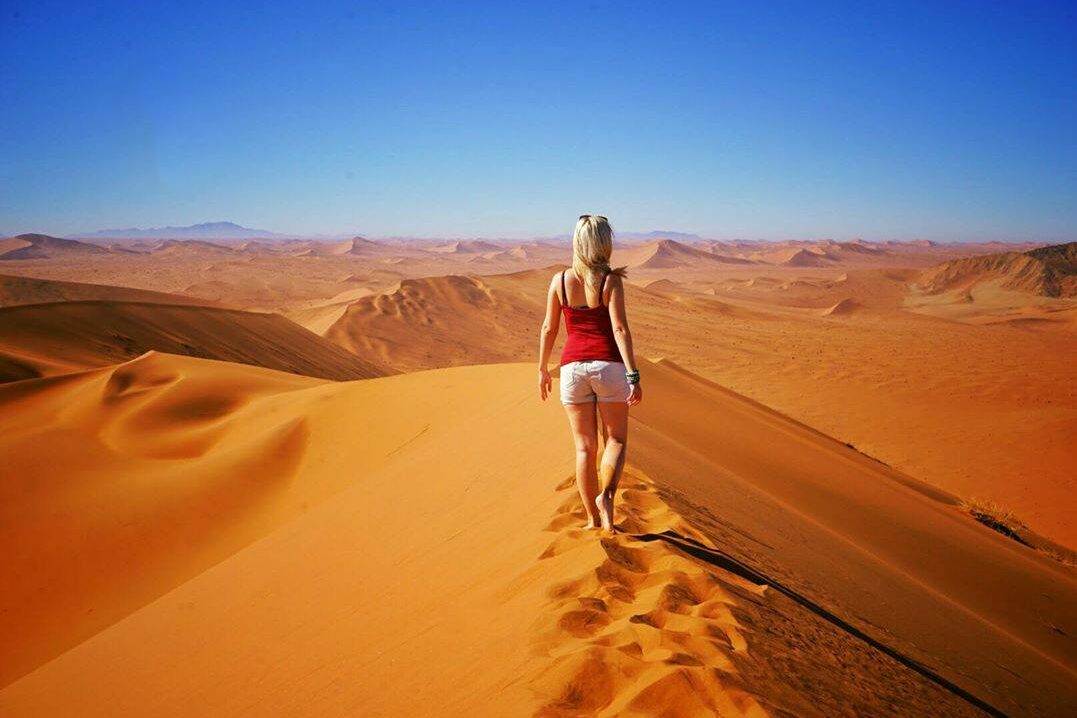
My road trip around Namibia is the best travel experience I’ve ever had.
Hands down.
I can’t even find the words to describe how fantastic my time in the country was. Namibia has everything. It’s easy to explore independently, it’s safe, it’s beautiful, the locals are lovely, the landscapes are diverse, the wildlife is exciting, and there are so. few. tourists.
I’ve got a dozen posts planned about my time in this amazing country, so brace yourself for an onslaught of information! By the end of the month, you’ll have everything you need to book a trip to this kickass country. And hopefully you’ll decide to do exactly that.
This is what it’s like to travel in Namibia.

Where is Namibia?
Let’s start off with a little bit of context. Where even is Namibia?
Namibia is a Southern African country on the west coast of the continent. It’s located above South Africa , below Angola, and to the west of Botswana.
Interestingly, Namibia is where you’ll find the world’s only quadripoint, which is defined as the place where the corners of four different countries meet. Yes, in the far north-eastern reaches of this country, Namibia nestles up against Botswana, Zambia, and Zimbabwe. There are over 150 tripoints in the world, but only one quadripoint, making this a very special place on the planet.
Unfortunately, it’s in a part of the country that few tourists choose to visit, at the eastern end of the Caprivi Strip, which is isolated from many of the main tourist activities. Somewhere that’s much easier to visit, however, is the Tropic of Capricorn! Most visitors end up driving past the iconic Tropic of Capricorn sign while driving around Namibia, and fortunately, it’s marked on Google Maps, so you won’t have to worry about missing it.
Namibia is the Perfect Introduction to Africa Travel
If you’re dreaming of travelling in Africa but have no idea where to go first, head to Namibia. It’s one of the safest and least intimidating countries I’ve travelled through.
One of my aims with my recent Africa travels has been to prove you can easily travel around much of the continent independently. So many people opt to jump on overland truck tours in this part of the world, but what I’ve found so far is that it’s really not necessary. And in Namibia you definitely don’t need to join a tour in order to visit.
With the exception of the bad roads, I found it no more difficult or dangerous to travel in than the U.S., Europe, or Australia. And when you’re traveling independently, you’re in control of your schedule and where you stay and what you do.
On top of that, the official language of Namibia is English, which makes independent travel even easier. You can ask questions, you can get directions, you don’t have to mime all the time… it’s all so easy .
Namibia also felt like the safest country in Africa I’ve been to so far. Outside of Windhoek, you really don’t need to worry about much at all. The locals are friendly and welcoming, theft is rare, and your only real concern will be how many flat tyres you’ll end up with on the seemingly-endless gravel roads.
Not only is Namibia safe and easy to travel through, but it also has just as much to offer as other countries in Africa. Head to Etosha National Park and you’ll get to drive alongside elephants, giraffes, lions, black rhinos, and more. You can hit up the Namibian desert for sand dune climbing at sunrise. There are beaches and coastlines full of shipwrecks to explore. The darkest skies in the world are in Namibia, so the Milky Way is always shining brightly above your head at night. Oh, and there’s a ghost town in the middle of the desert. Badass.
In other words: Namibia is the best!
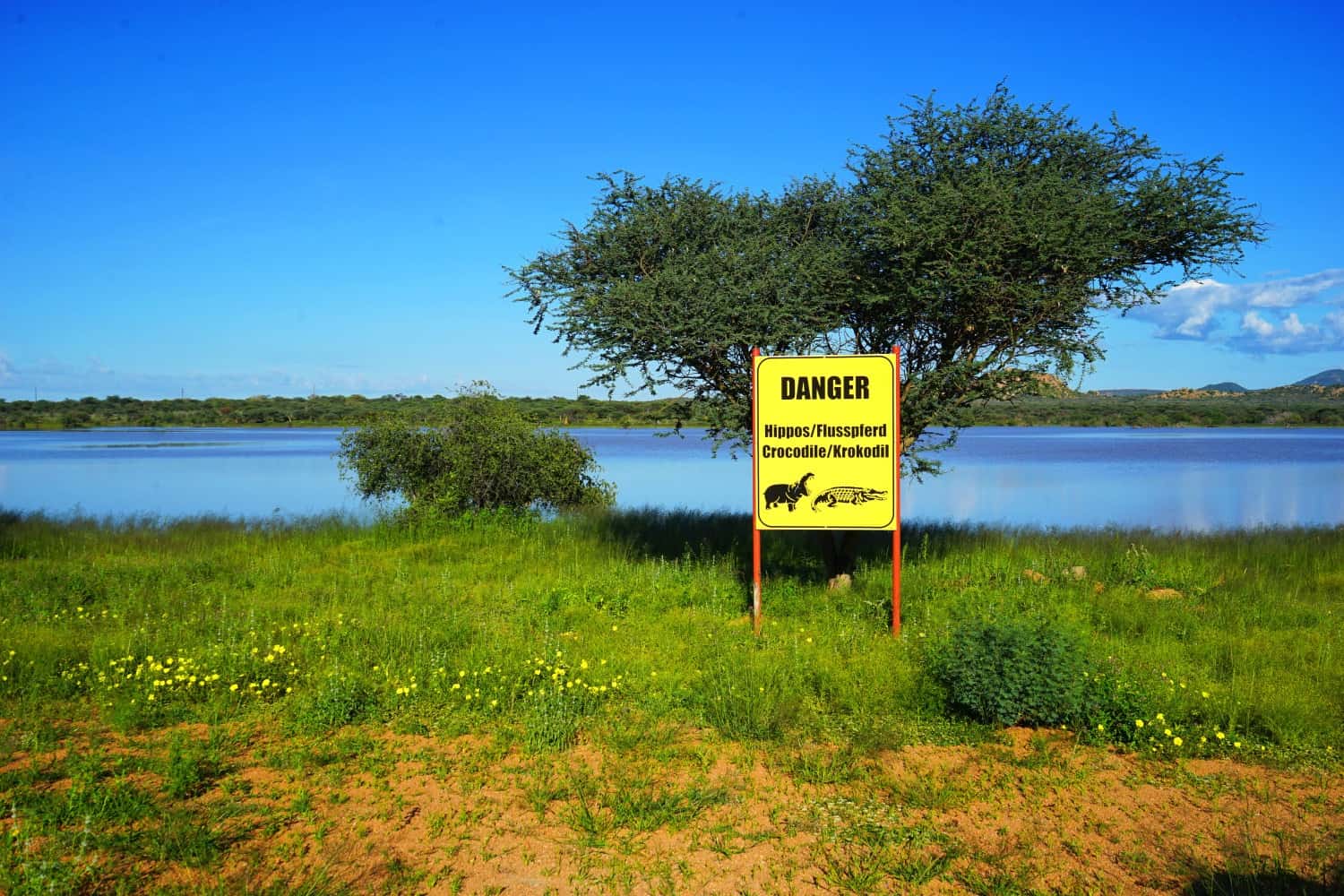
Not Many People Will Know Where You’re Going
I couldn’t believe it: after six years of travel, Namibia was the first country nobody seemed able to locate on a map. In my digital nomad community here in Portugal — so, y’know, people who have travelled full-time for many years — a surprisingly number of people had never even heard of Namibia.
I get it: it’s a country that isn’t often spoken about outside of travel blogging circles, but it was still surprising to be met with blank faces when I spoke about where I was visiting next.
The bonus of this? Hardly anybody decides to visit the country, so there are hardly any tourists around!
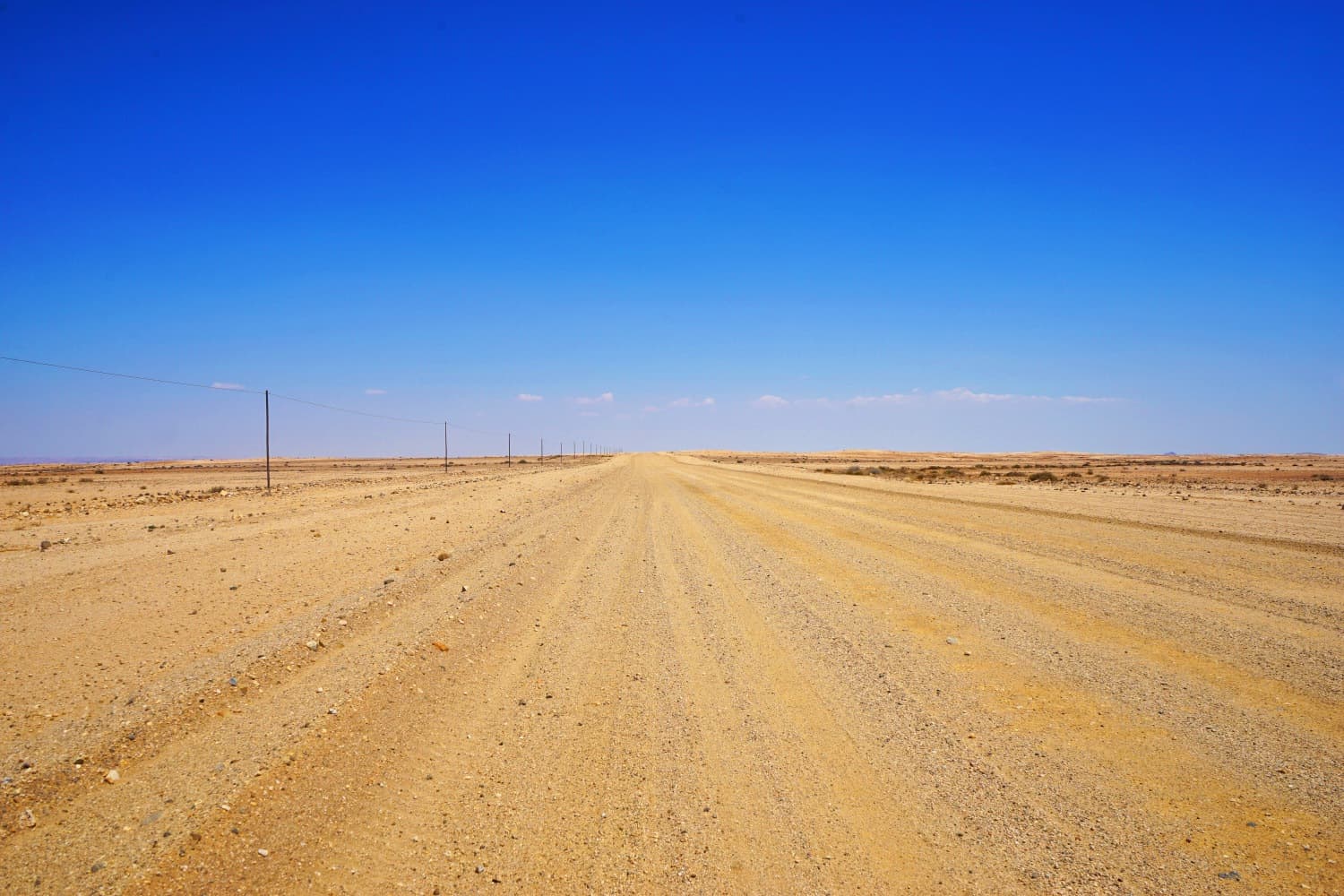
It’s Ridiculously Sparsely Populated
Namibia is the second-least-densely populated country in the world, with an average of just five people for every square mile. And it’s easy to see why: desert takes up the bulk of the country and so outside of its short rainy season, it’s a very arid place.
This was one of my favourite aspects of travelling around Namibia, though: you could drive for four hours straight and not see a single human, car, or building over that time. As an introvert with a love of wide, open spaces, I couldn’t get enough of the isolation.
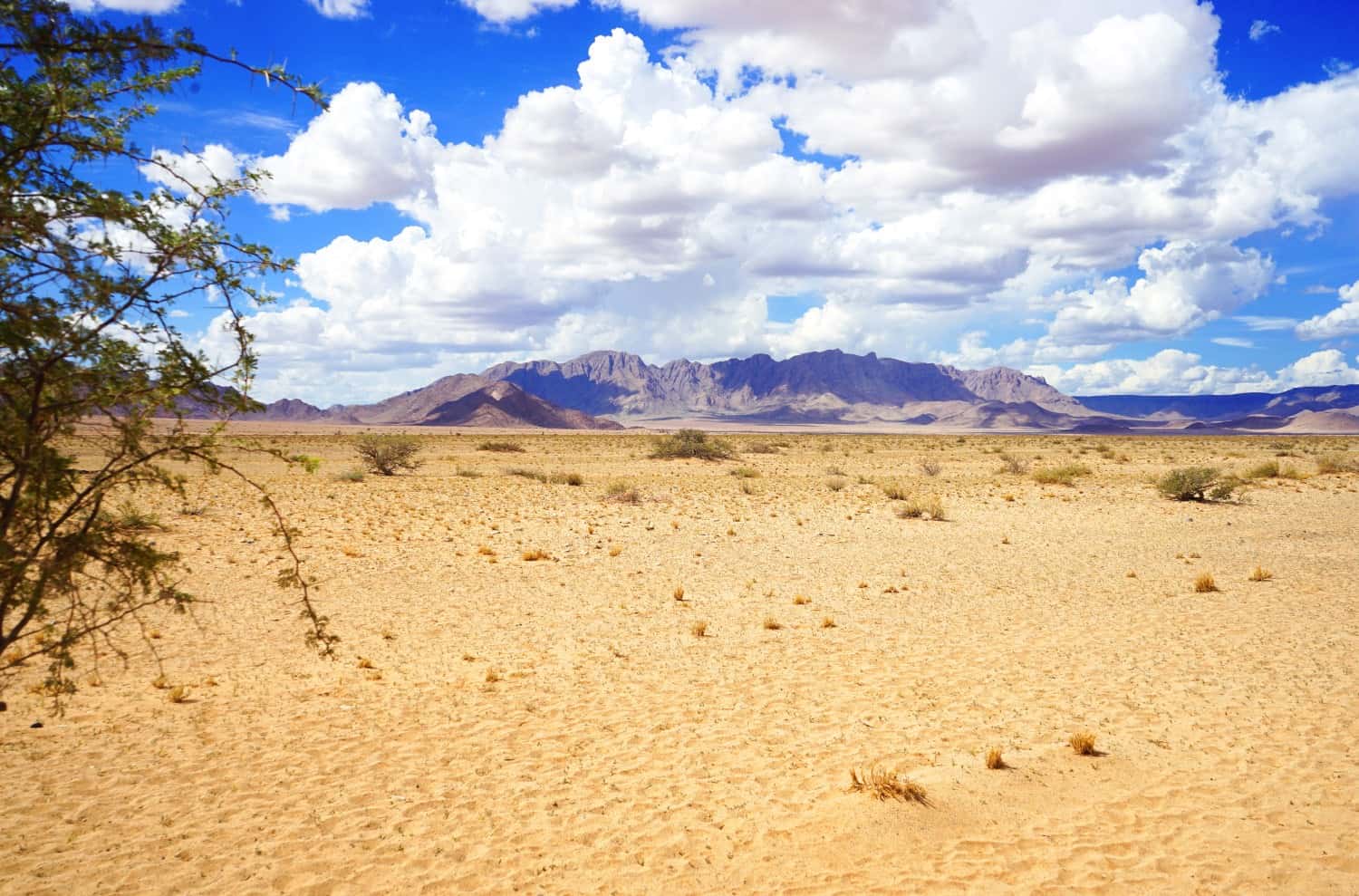
Planning Where to Stay Is… Interesting
Because the country is so sparsely populated, the majority of places you’ll stay at will be lodges that feel as though they’re in the middle of nowhere. Because they kind of are.
There aren’t many major towns and cities in the country — and honestly, the best parts of Namibia are outside of them — so that makes finding accommodation tricky. The best places to stay at are often hours from the nearest signs of civilisation and miles down a tiny gravel path.
I found booking.com best for finding places to stay. First, decide on which major destinations you want to hit in Namibia. For us, this was: Windhoek – Etosha National Park – Swakopmund – Sesriem – Luderitz – Windhoek. Most of these destinations are so far from each other that you’ll have to break up the drive into two days.
Next, on Booking, search for all hotels in Namibia, and once you’re on the search page, click on view on map. Once you’ve got a map view of every hotel listing in Namibia, zoom in on the route you’re planning to take and see which lodges pop up close to the midpoint between two distances. We did this for almost everywhere we stayed in Namibia and found some incredible lodges as a result. In fact, some of the highlights from my time in the country were getting to stay outside of the main tourist trail.
And if you can’t find anything suitable or affordable on the drive, just googling “where to stay between Swakopmund and Sesriem”, for example, will bring up a ton of forum threads with recommendations from other people. Not everywhere is listed online, so there were a few places we had to book through email.
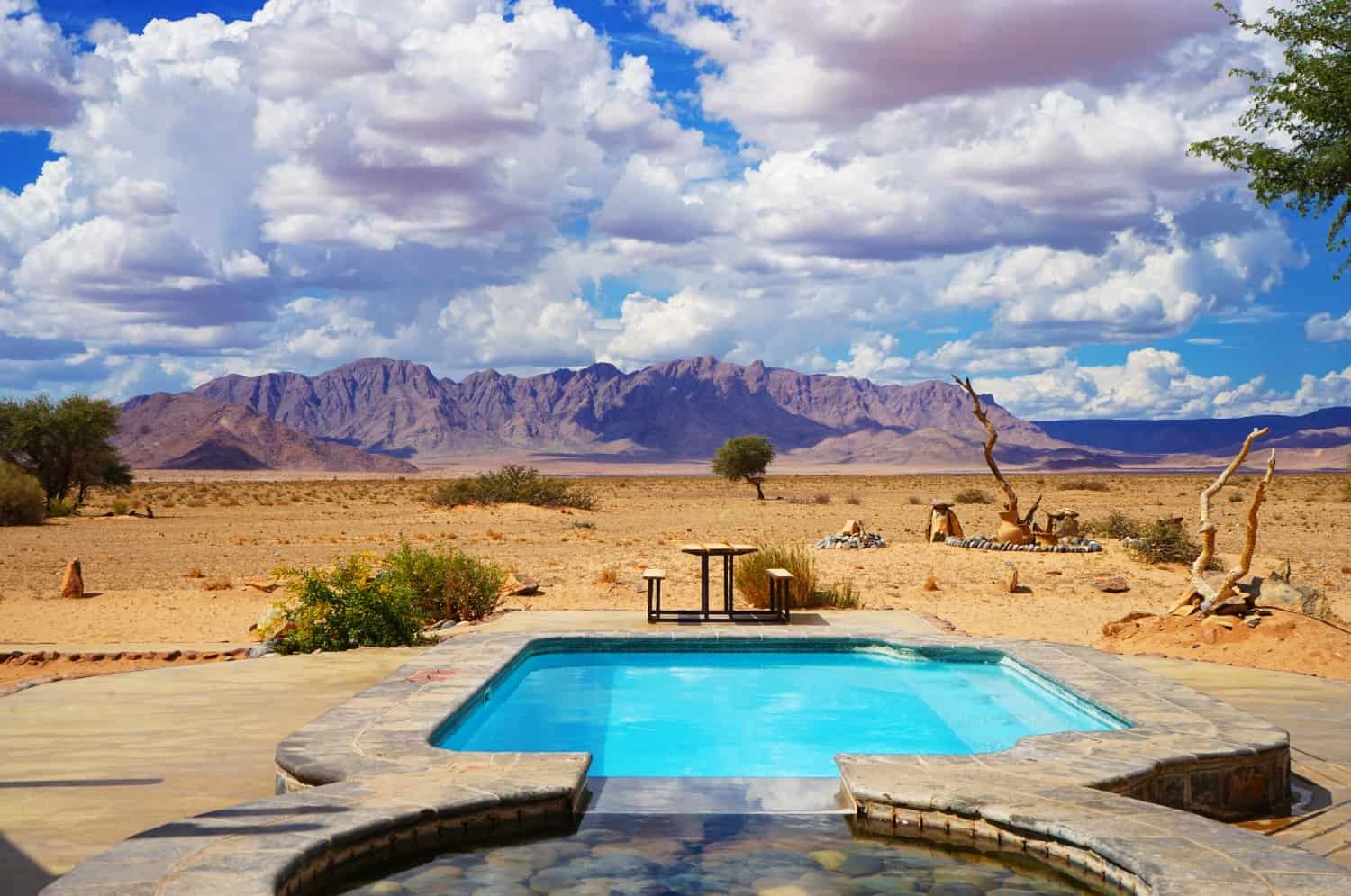
Frustratingly, It’s Tough to Visit on a Budget
In Namibia you have two options: expensive or camping.
I’m all about that budget travel life, but in Namibia I had to give up my aim of spending $50 a night on accommodation and quadruple it for much of our trip. Yep, almost every lodge we stayed at in Namibia was well over $100 a night, and we were nearly always booking the cheapest option we could find. And we were visiting in low season, where accommodation prices are around half what they’d be in high season!
Unfortunately, if you want to save as much money as possible on your trip, your only real option in Namibia is to camp. Most lodges will offer a camping option for around $30 a night, so if you’ve got your own gear, this is an easy way to save money on accommodation.
The only exceptions to the crazy prices are the cities: Windhoek has cheaper options ($50 a night), and so did Swakopmund ($40 a night) and Luderitz ($50 a night).
Everything else wasn’t too bad when it came to price. Our rental car — a Toyota Corolla — had us up for $30-a-day, which is pretty standard for most countries around the world. Activities and entrance fees (around $6) were also affordable. Food could get a little pricey at the camps and lodges, which made sense because they were so isolated, but nothing was over-the-top extreme. We’d usually pay around $10-15 for dinner each night.
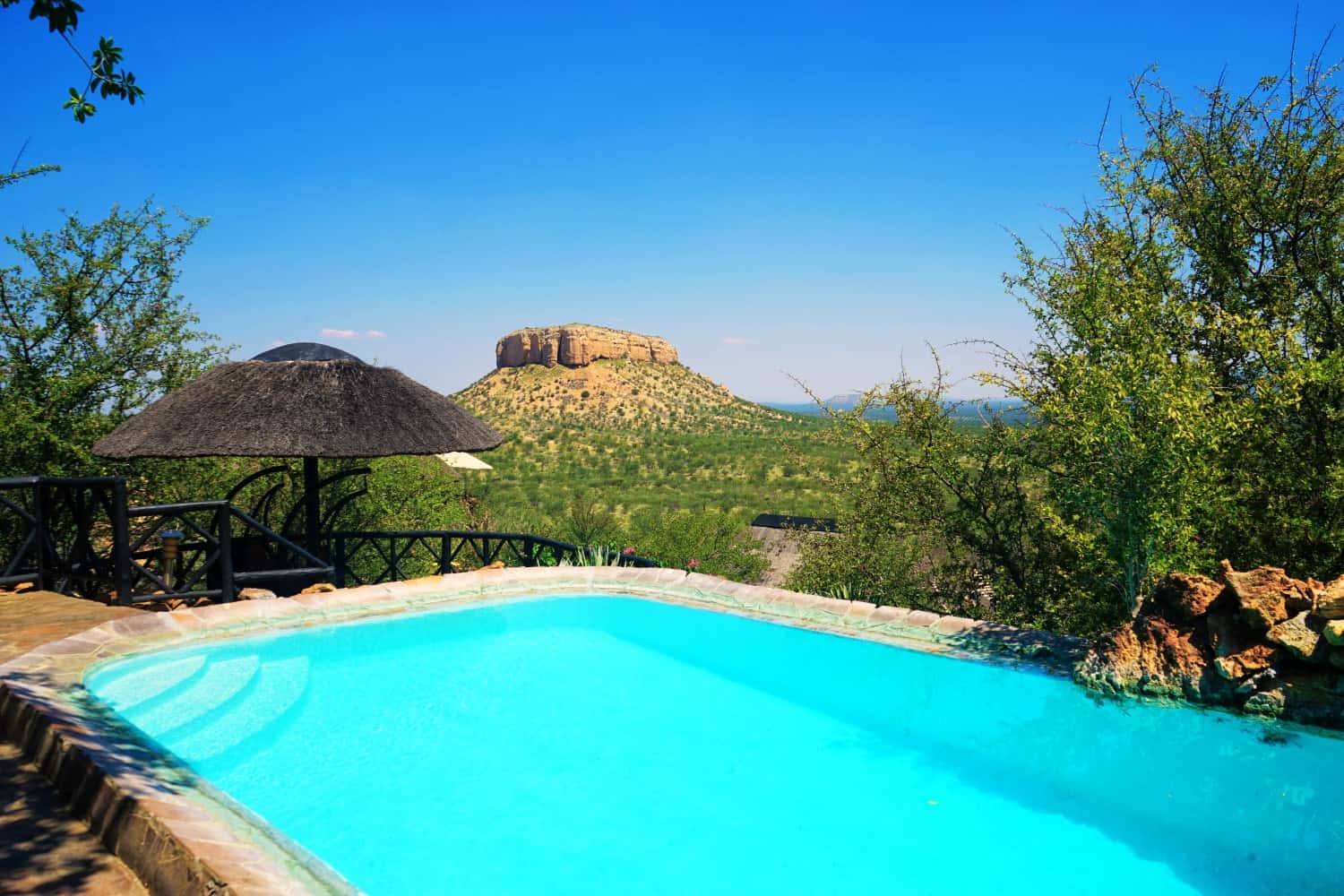
But the Lodges are Amazing
Some of the best hotels I’ve ever stayed in are in Namibia. And while you’ll pay a lot for them, they’re worth every penny.
At Ovita Wildlife Restcamp , we fell asleep listening to hippos in the lake outside our room. At Vingerklip Lodge (pictured above), we ate dinner on a towering cliff top, looking over Namibia’s version of Monument Valley. At Sesriem Desert Camp (pictured above Vingerklip Lodge), we slept in luxury tents in the desert with wild oryx roaming outside.
I loved every single place we stayed in in Namibia, and even though they were ridiculously expensive, it felt as though we were still receiving fantastic value for money.
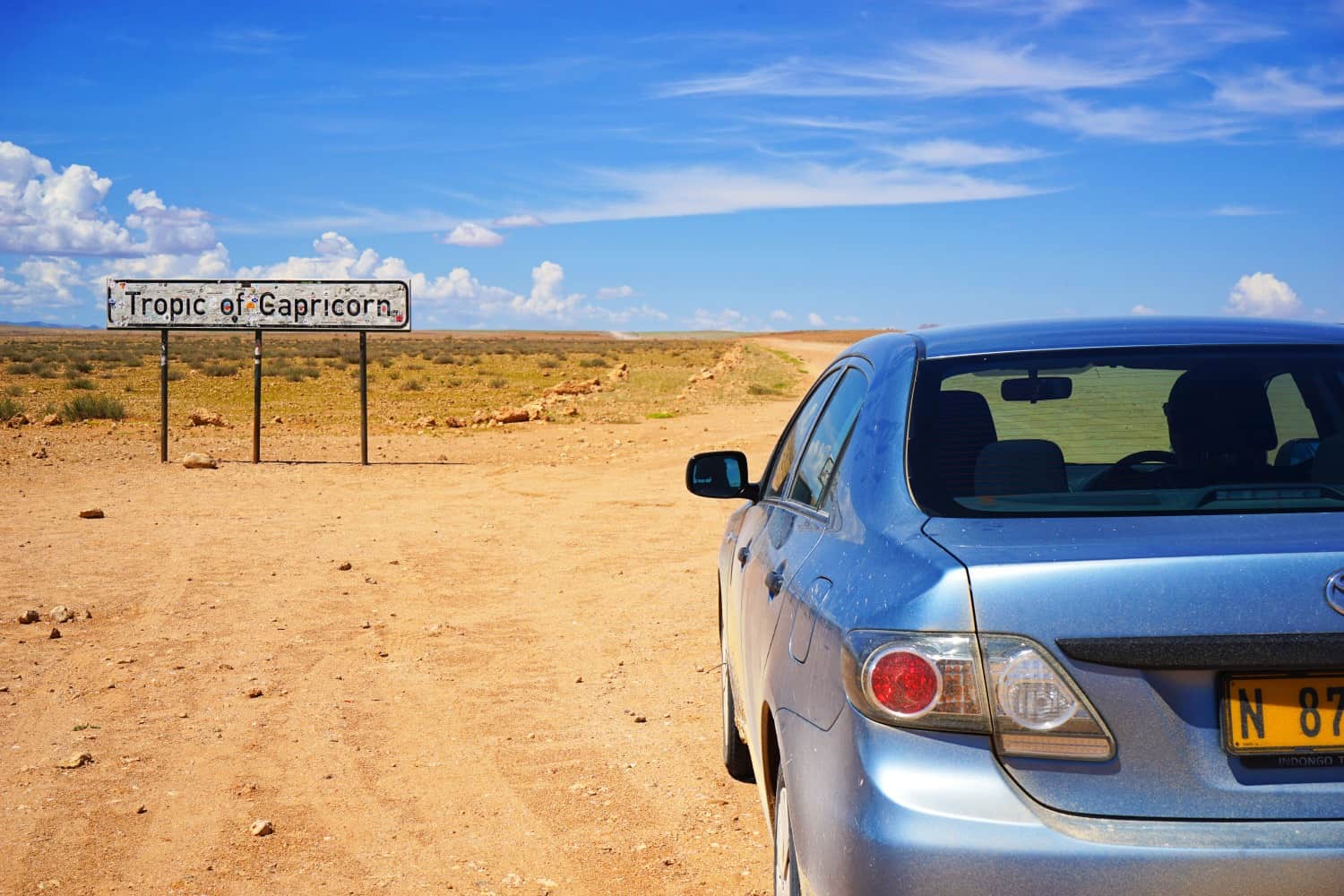
You Will Need Your Own Transport
Public transport doesn’t really exist in Namibia, so if you’re not going to take a tour, you’ll most likely need to hire a car. As for what type of car, it depends a lot on the time of year you’ll be visiting and how confident you are on gravel roads.
My Kiwi boyfriend grew up racing falling-apart cars on gravel roads in New Zealand, so he had the driving skills of a Namibian and we were happy opting for a tiny Toyota Corolla to make the trip for us. Guesthouse owners were always shocked to see us rocking up in it, but honestly, we had next to no problems with it. If you’ve got the cash, opting for a two wheel drive with higher ground clearance would be a smart idea, as part of the bottom of our car fell off on our second day of driving, thanks to all the rocks that had been flicked up into the undercarriage.
People advise to go with a 4×4, and especially if you’ll be visiting in the rainy season, but we decided against it for several reasons. First, it’s over double the price for a 4×4 (around $100 a day), second, being so high up makes the car easier to roll, and third, um, did I mention it’s expensive?
If you can’t drive? You won’t be able to visit Namibia without taking a tour or hiring a driver. You could take a bus between major destinations, but I believe you’d miss out on a lot of the wonderful lodges that make travelling in Namibia so wonderful. There are also reports of travellers rocking up in a hostel, getting together with a group of travellers, and car-sharing their way around the country, so this could be an option if you’re willing to take the risk of potentially finding nobody to travel with.
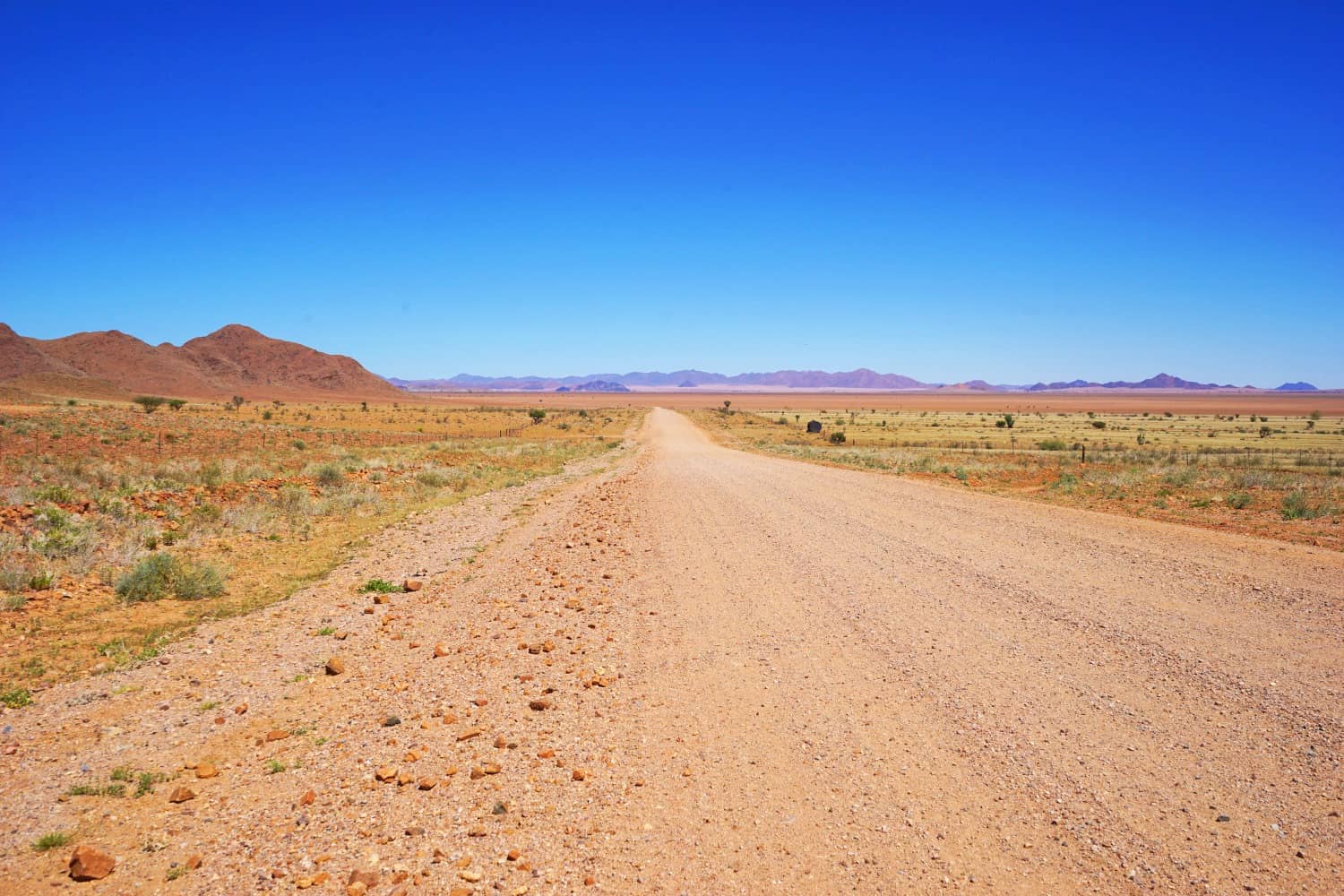
The Roads are So Bad
We drove 4000 kilometers in Namibia and probably only several hundred of them were sealed.
Yes, in Namibia, get used to urging your car over gravel, sand, rocks, and more. Because of this, travel days are long and bumpy — we rarely drove for less than six hours each day, and even listening to podcasts was a struggle over the crunching noises of driving over gravel while rocks pinged into our car
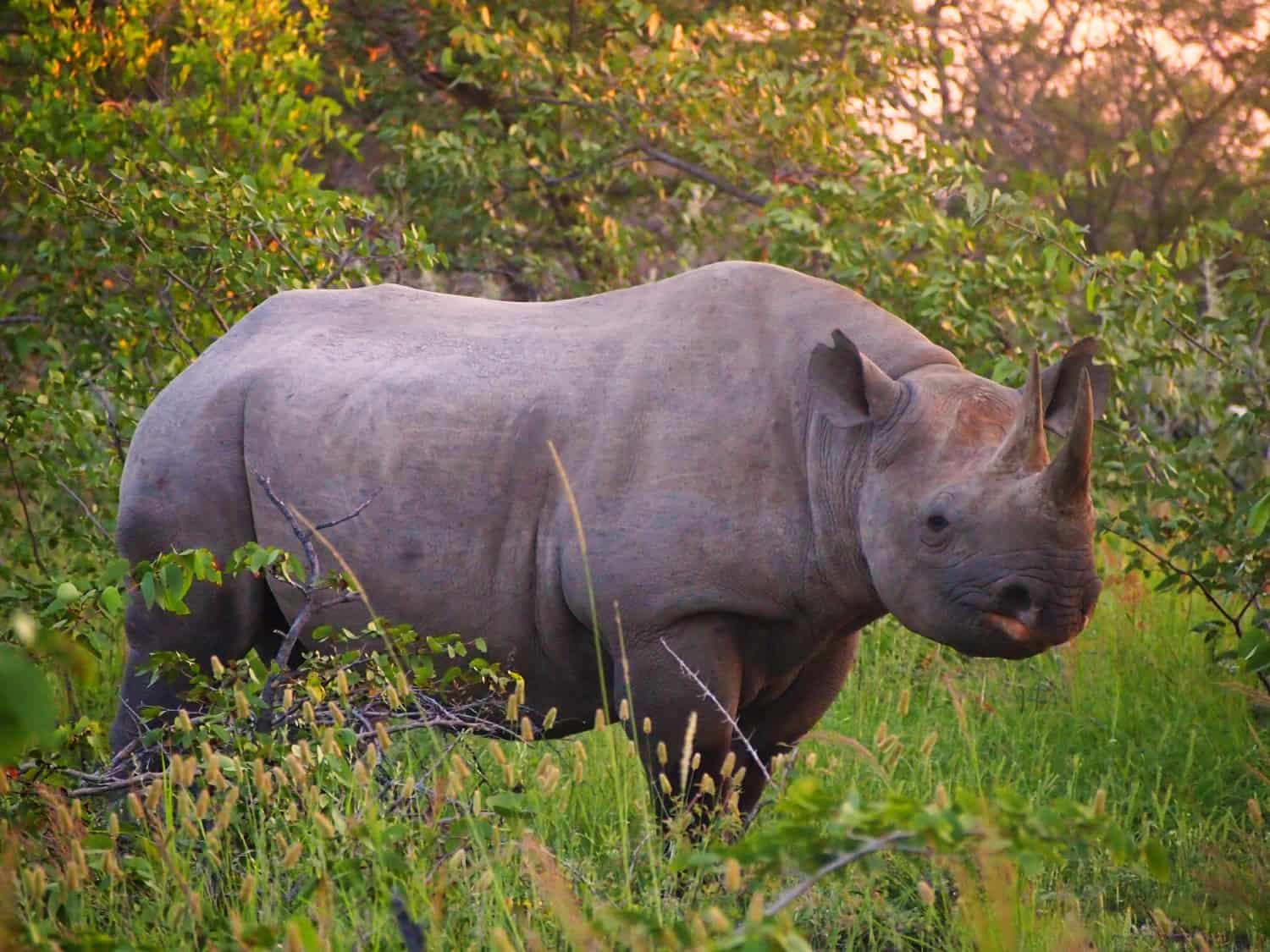
Get Yourself a SIM Card, But Expect to Rarely Use It
Getting connected is tough in Namibia, so if you work online like I do, resolve to spend most of your time on vacation.
Wi-Fi was sometimes around, was always slow, and often expensive. It’s worth getting a SIM card, though, as although we rarely got more than an EDGE signal, leaving our phones on while we were driving around usually meant we’d pick up a signal here and there to download emails.
We picked up a SIM card at Windhoek Airport upon arrival and it was super simple to do. The SIM card costs 50 US cents and 1 GB of data is a whopping $2.50. Too Many Adapters has a comprehensive guide for buying a SIM card in Namibia if you need any extra information. When it’s that cheap, there’s no reason not to get one.
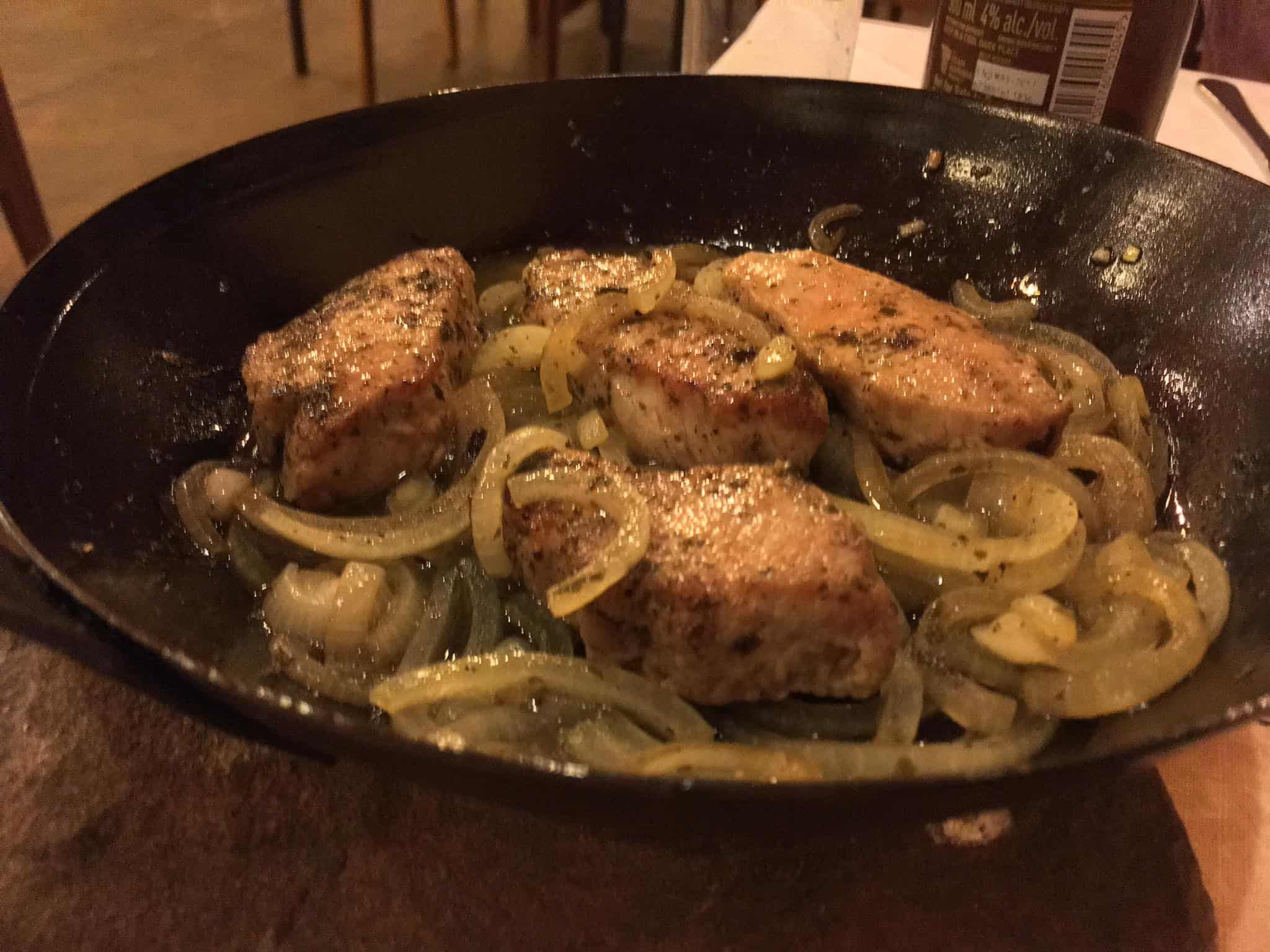
You’ll Get to Try Some Interesting Game Meat
One of my favourite aspects of eating in Namibia was getting to try so many of the delicious game meats on offer. The biggest surprise was warthog, which was delicious, but I also loved kudu, impala, oryx, zebra, and more. Most of the lodges will have some kind of unusual game meat on offer each evening, so it’ll be easy to access and you’ll soon grow used to it.
If you’re vegetarian, you’ll most likely struggle to eat super well in Namibia. Everything was very meat based at the lodges although bizarrely, Greek salads were available in basically every single restaurant, so you won’t have to go hungry. Just prepare yourself for a hell of a lot of feta cheese!
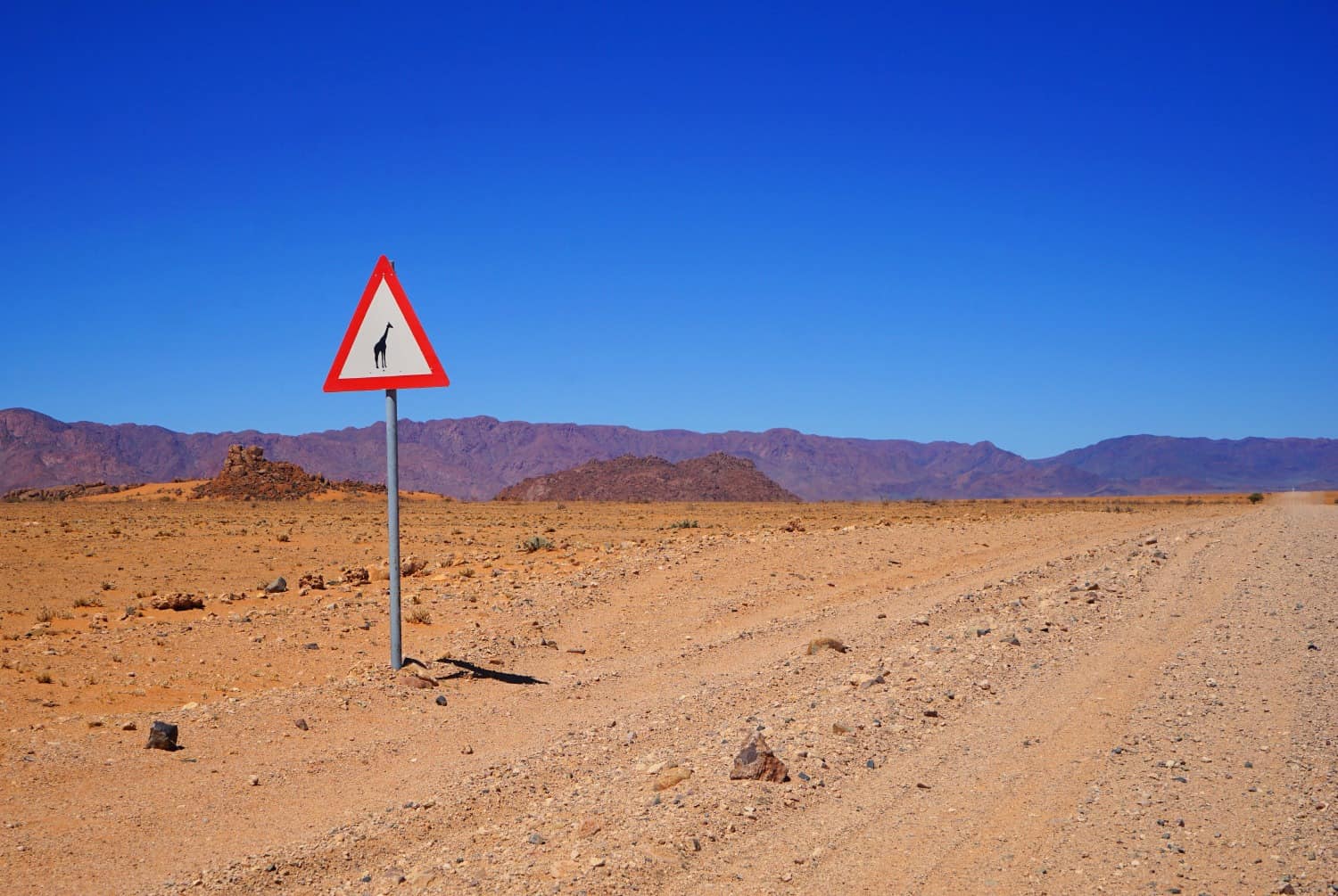
Namibia Has the Best Road Signs Ever
One of the highlights from our time in Namibia was the kickass road signs we came across while driving. The giraffe one above was one of my favourites. In addition to that, we saw signs for zebras, elephants, warthogs, and more. And even better: we actually saw some of those animals wandering around in the wild! There’s nothing quite like seeing a desert-adapted giraffe wandering through the sand.
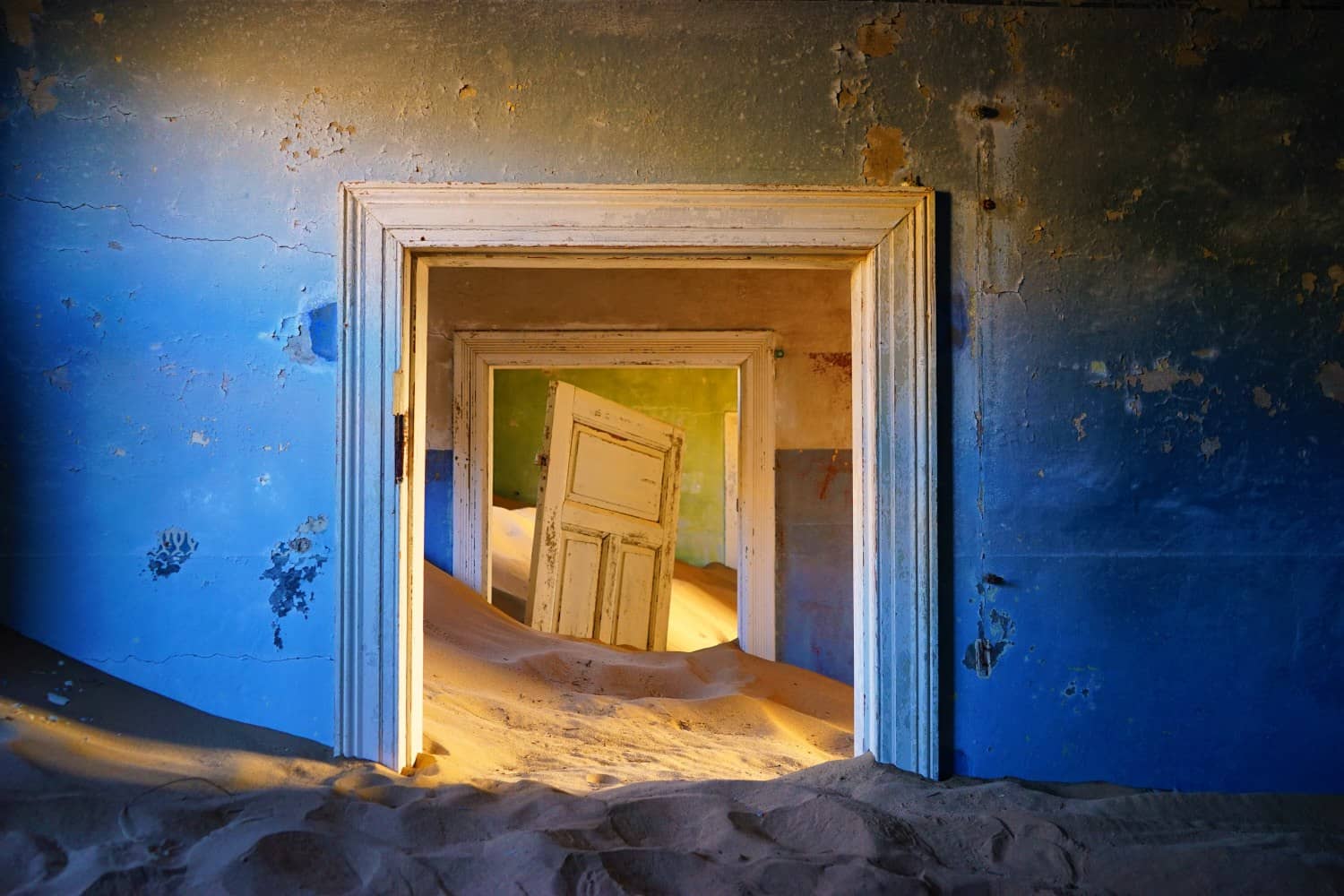
The Bradt Namibia Guide is Invaluable
If you’re planning a trip to Namibia, you need this guidebook .
Not only was it essential for planning our trip, but we used it on an hourly basis while we were in country. When it comes to Africa, Bradt guidebooks are king, so don’t even consider picking up a Lonely Planet for this part of the world; almost all of them have terrible reviews as well as outdated and too-condensed information.
Because you’ll be unlikely to have data coverage while you’re driving, and sometime even in lodges, the guidebook made our trip so much less stressful. When we wanted to figure out which animal we’d just spotted by the side of the road, the wildlife section had a photo to help us out; when we decided to stop for a lunch break in a tiny village, we could look up if there was anywhere to eat, and if so, which place was best; when we were planning our driving for the day, we could look up route recommendations and find out which attractions we might want to stop at along the way.
I don’t often recommend using guidebooks (I think I’ve only done it twice before!) because I believe you can get a lot of the information online for free, but in Namibia, this guidebook definitely helps. We struggled to find detailed information about the country both before we arrived and while we were there, so our Bradt book was 100% invaluable.
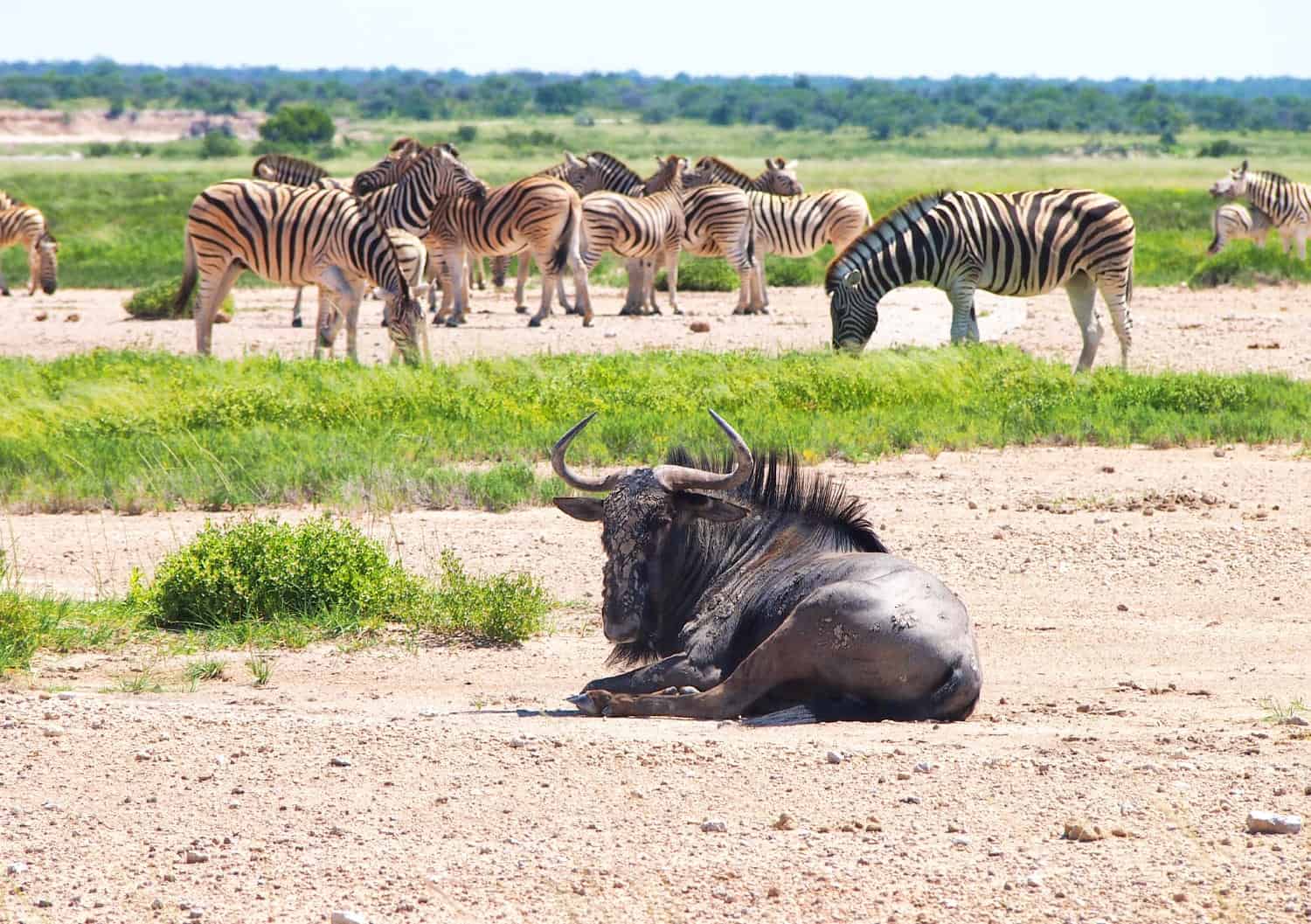
Two Weeks is the Perfect Amount of Time to Spend in the Country
I spent just under two weeks in Namibia, and feel as though I saw almost all of the highlights. If I’d had three weeks, I would have spent time at Fish River Canyon in the south, a few extra days in Damaraland, and some time exploring the Caprivi Strip in the northeast . Still, I feel as though two weeks is a good amount of time to dedicate to the country, which is refreshing as most places I visit have me feeling as though I need to explore for a minimum of three months just to start scratching at the surface.
I wanted to share my two-week itinerary here, because I feel as though I got it pretty close to perfect.
Day 1: Landed in Windhoek, picked up our rental car, and drove straight to peaceful Ovita Wildlife Restcamp . You can read about my first day in Namibia in my article, The Perfect First Day in Namibia . Day 2: Time for wildlife! We drove north to Etosha National Park and stayed within the park at Halali . We spent the afternoon sitting at the camp’s waterhole to see if any animals emerged. You can read about my experience in Etosha National Park in the dry season: Desperately Seeking Elephants at Etosha National Park . Day 3: For our first full day at Etosha, we drove around the eastern region of the park for almost 12 hours. We saw dozens of giraffes, zebras, and a rare black rhino, then spent the night back at Halali. It was magical. Day 4: On day four, we opted to drive around the central parts of Etosha for the entirety of daylight hours, then switched up our accommodation to spend the night at Okaukuejo . Day 5: For our final morning in Etosha, we decided to explore the western region of the park, then at lunchtime, drove to beautiful Vingerklip Lodge to spend the night. You can read about how incredible Vingerklip was in my article, Finding Paradise in Vingerklip: Africa’s Monument Valley . Day 6: Day 6 brought a long drive to Swakopmund, where we spent much of the day on terrible roads. Still, getting to drive part of the Skeleton Coast was amazing, and we even got to see a shipwreck stranded off the coast. We spent the night in an Airbnb apartment. Day 7: For day 7, we took a day trip out to nearby to Walvis Bay to see its seal colony, which is one of the largest in the world. You can read about this wonderful experience in the article, Seals, Swakopmund, and the Skeleton Coast . Again, we spent the night in our Airbnb apartment. Day 8: We spent this day relaxing and exploring Swakopmund. You could use this day to get your adventure on if you wanted, as Swakopmund is the adventure capital of the world. You could try your hand at quad biking on the nearby sand dunes , for example. Once more, we spent the night in an Airbnb apartment. Day 9: The following day, we drove to Sesriem and spent our afternoon climbing Dune 45. I highly recommend doing this, as we practically had the entire park all to ourselves. We slept at Sesriem Desert Camp , which was magnificent. Day 10: We got up at sunrise to enter the park, climb Big Daddy sand dune, and explore Deadvlei. This day was spectacular and you can read about the experience in the article, Climbing Big Daddy: An African Travel Highlight . That afternoon, we drove south to Betta Camp to spend the night. Day 11: The following morning, we drove down to Luderitz. We spent the afternoon exploring this adorable town and spotting pelicans as we drove around the areas just outside of Luderitz. It was a fairly relaxed day after all of the movement, and we spent the night at Kairos B&B . Day 12: We saved the best for last, because for day 12, we drove to Kolmanskop at sunrise and and had the entire place to ourselves. Kolmanskop is an old mining town that has since been abandoned and is now being taken over by the desert. It was incredible and we spent a full three hours taking photos. I wrote about it in-depth in the article, Exploring Kolmanskop: Namibia’s Ghost Town in the Desert . In the afternoon, we drove to Maltahohe Hotel to break up the long journey back to Windhoek. Day 13: Final day! Sad face. We spent this day driving from Maltahohe to Windhoek and left Namibia in awe of how much the country has to offer.
This was one of the best trips of my life and I highly recommend putting together a similar itinerary if you’re planning a trip to Namibia.
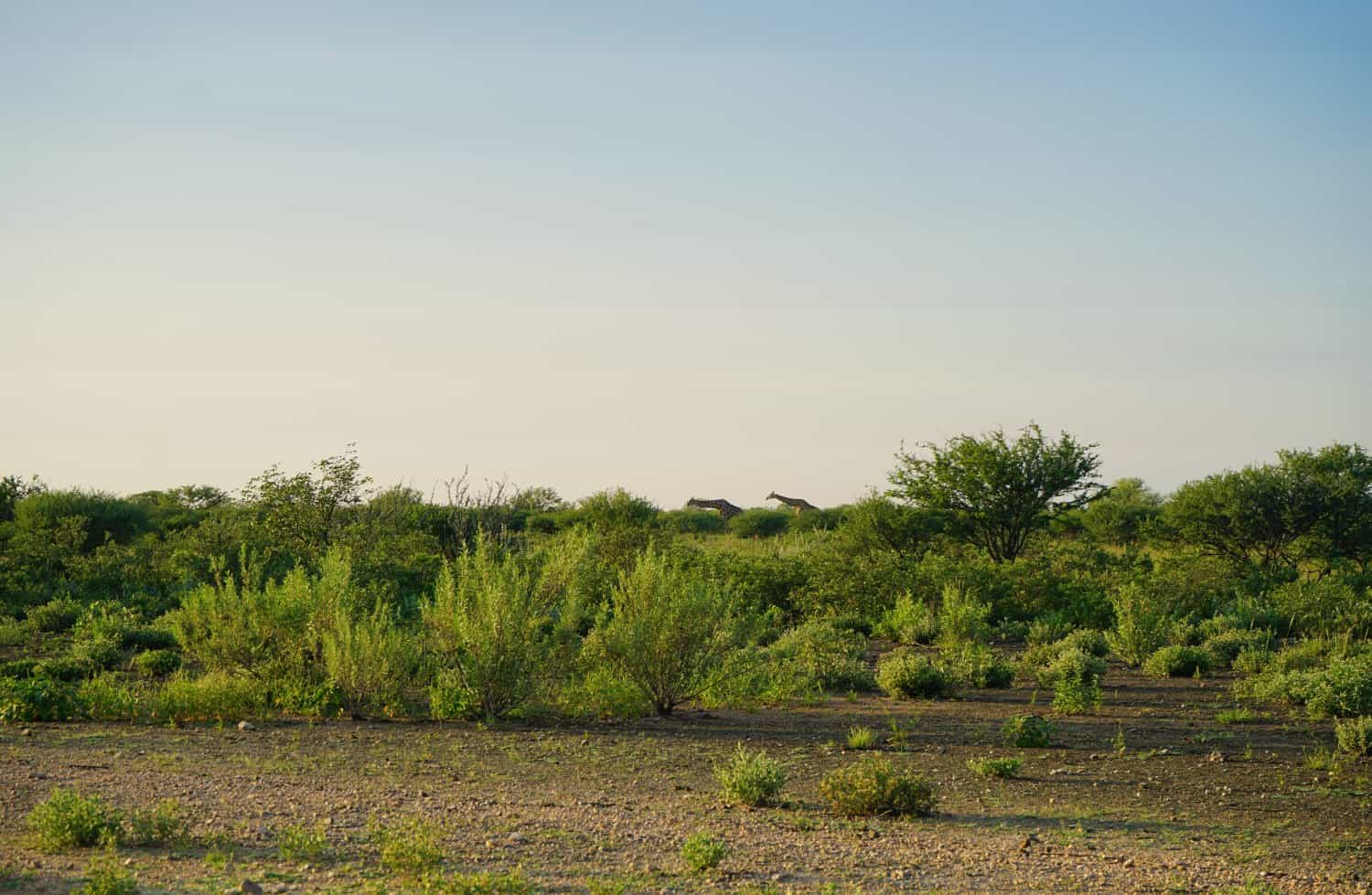
Yeah, You Should Definitely Get a Zoom Lens
The biggest regret of my trip? Not splashing out on a zoom lens for my camera and then getting uniformly awful photos in Etosha.
I ventured into Namibia with my Sony 28-70mm lens and while it was absolutely fantastic for landscape photos, it was nowhere near good enough for the wildlife. Had my boyfriend not packed his 80-300mm lens, I would have had close to zero photos of any animals. Because we were in Namibia in the rainy season (more on that below), the animals at Etosha were hiding in dense grass and hard to spot, so it was rare for us to get up close to them.
If you’re going to Namibia and will be hitting up Etosha while you’re there, make sure you’ve got a decent zoom lens for the trip.
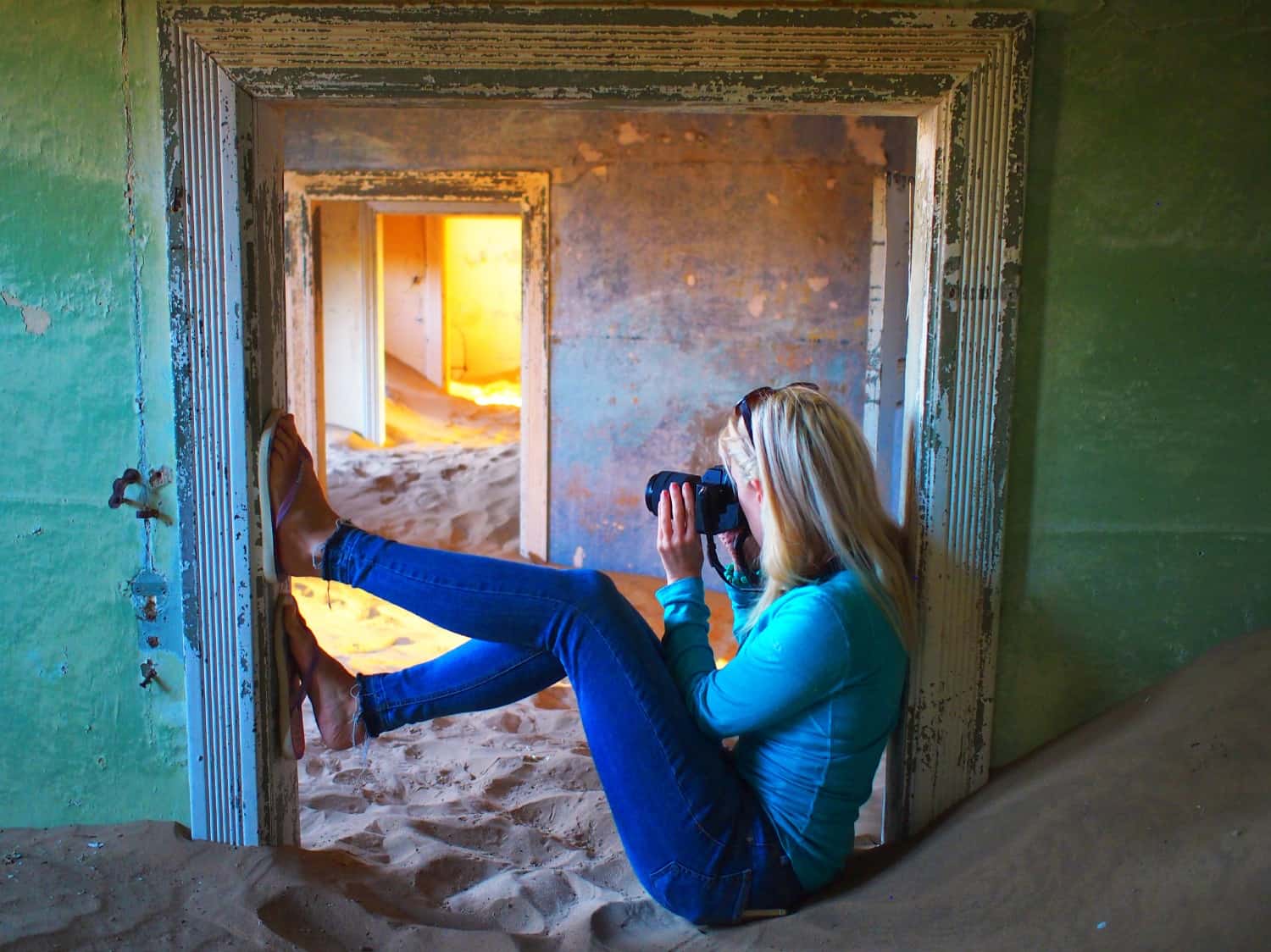
Get Yourself Some Excellent Travel Insurance
You know I’ll always yell at you if you’re dumb enough to skip out on travel insurance , but in Namibia, it’s an essential.
Why? Because Namibia has the highest car-accident death rate in the world, with 45 people killed on the road for every 100,000 citizens. On top of that, malaria hangs out in the northern parts of the country, and there are several other awful-sounding tropical diseases you definitely don’t want to contract.
Travel insurance will cover you if your flight is cancelled and you need to book a new one, if your luggage gets lost and you need to replace your belongings, if you suddenly get struck down by appendicitis and have to be hospitalised, or discover a family member has died and you need to get home immediately. If you fall seriously ill, your insurance will cover the costs to fly you home to receive medical treatment.
I use SafetyWing as my travel insurance provider, and recommend them for trips to Namibia. Firstly, they’re one of the few companies out there who will actually cover you if you contract COVID-19. On top of that, they provide worldwide coverage, don’t require you to have a return ticket, and even allow you to buy coverage after you’ve left home. If you’re on a long-term trip, you can pay monthly instead of up-front, and can cancel at any time. Finally, they’re way cheaper than the competition, and have a clear, easy-to-understand pricing structure, which is always appreciated.
With SafetyWing, you’ll pay $1.50 a day for travel insurance.
On top of standard travel insurance, you’ll also want to make sure you get some of the best car insurance money can buy. Most tourists get a flat tyre in Namibia at some point at a minimum (we got one roughly an hour from the airport on our final day) and replacing them/repairing the rental car can be pricey. We rented our car through rentalcars.com , bought their insurance, and they refunded us for all of our car disaster expenses in Namibia.
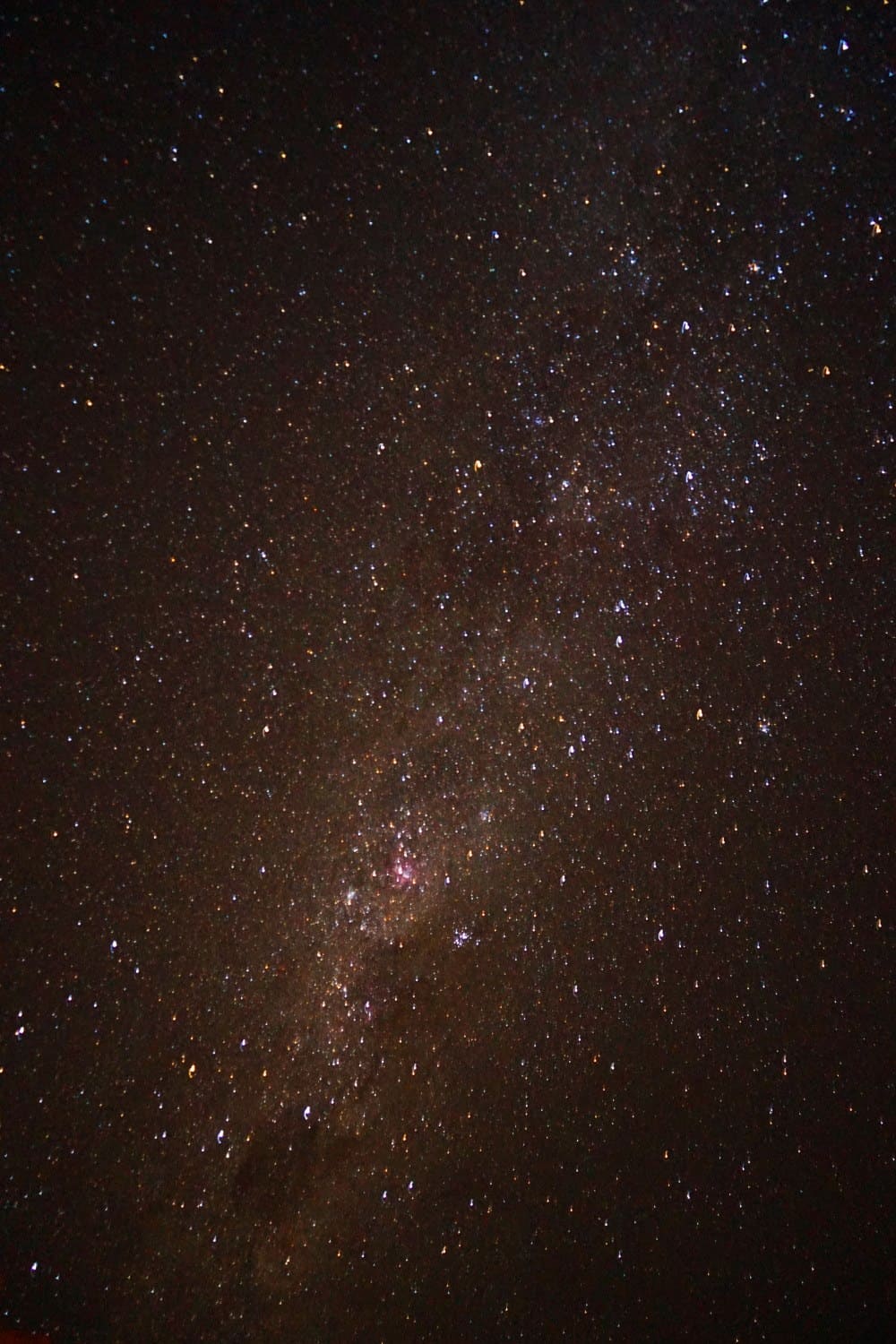
You’ll Never Have Seen This Many Stars Before
Namibia is home to some of the darkest skies in the world , and I couldn’t believe how magical the night sky was. With the exception of the cities we stayed in, we fell asleep every night with the Milky Way twinkling above our heads. And with the lack of light pollution in the country, you didn’t even need to wait for your eyes to adjust.
If you’re all about stars, this is one destination not to miss.
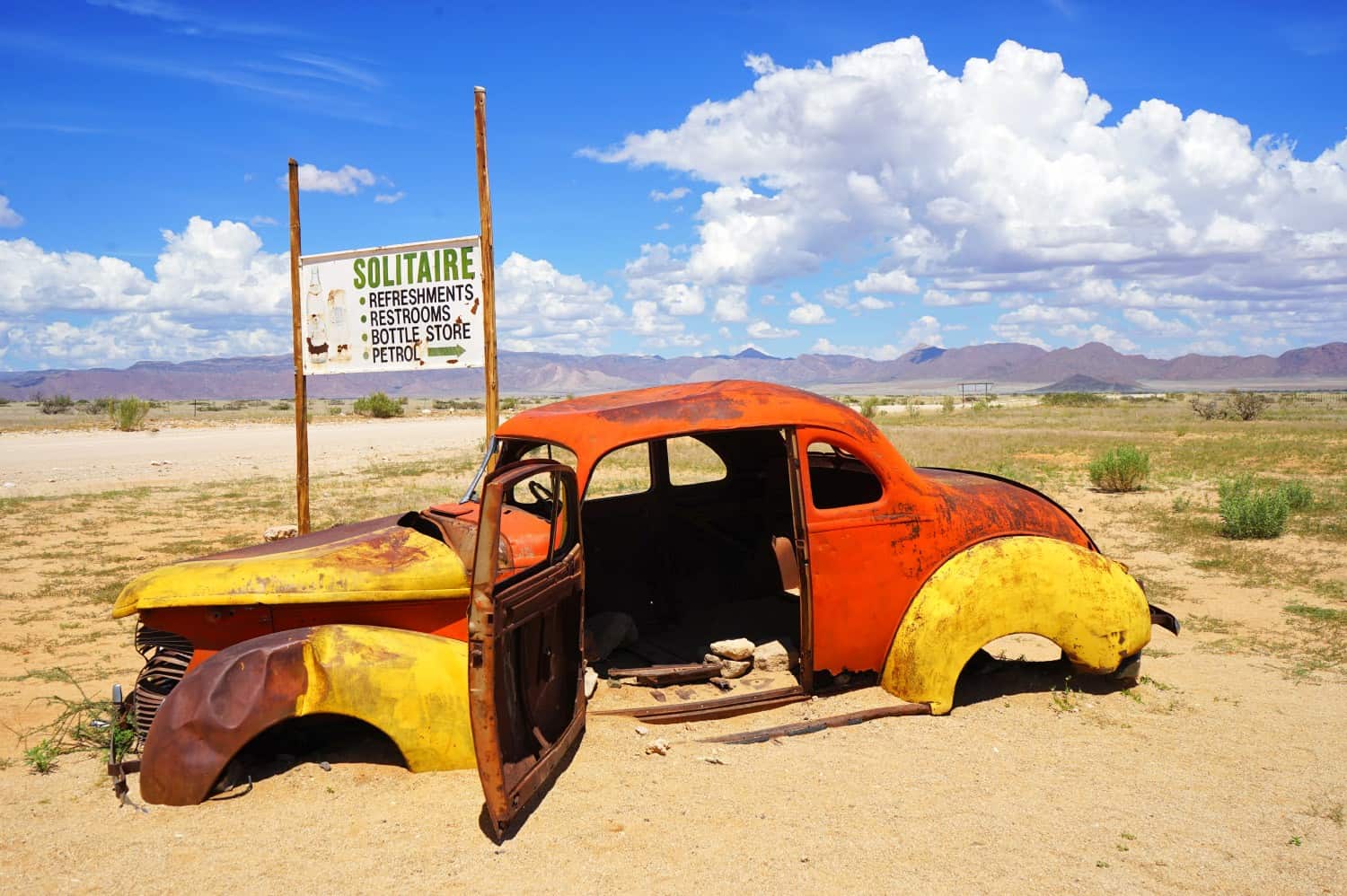
I Loved Visiting During the Low Season
Well, low-ish season. We hit up Namibia in March, which is typically the final month of the rainy season.
We experienced just one hour of rain and the rest of our trip was full of gloriously blue skies. There were fewer tourists, prices for accommodation were almost half what they’d be in high season, and the weather wasn’t bad at all. I highly recommend considering a shoulder-season visit because of this.
Surely there has to be a downside? Yep. We struggled to see anything at Etosha. There are thirty-odd waterholes inside the park and during the dry season, they usually look like this:
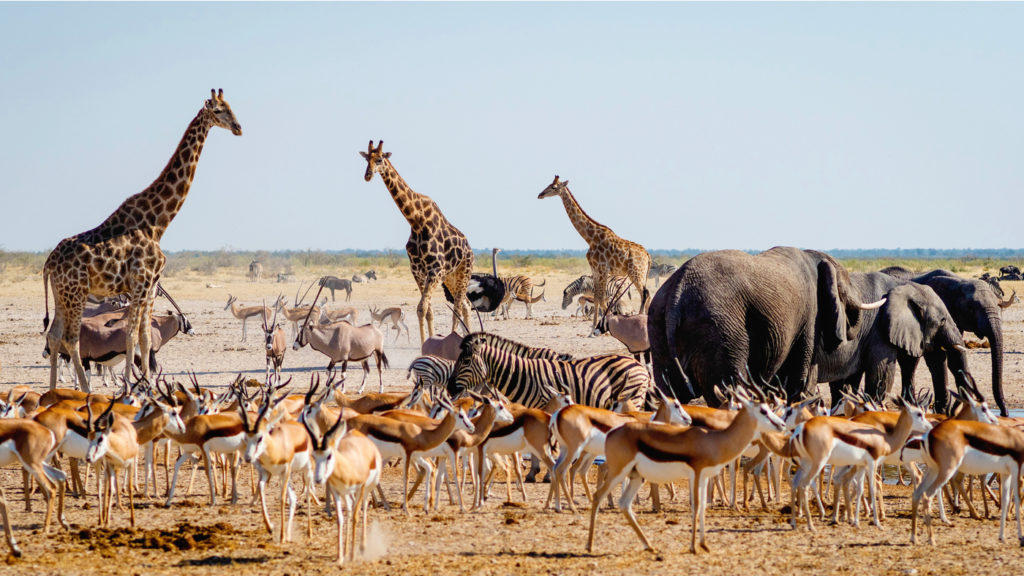
Well, over three whole days of 12-hour drives, Dave and I saw literally nothing at any of the waterholes. Our waterholes looked like this:
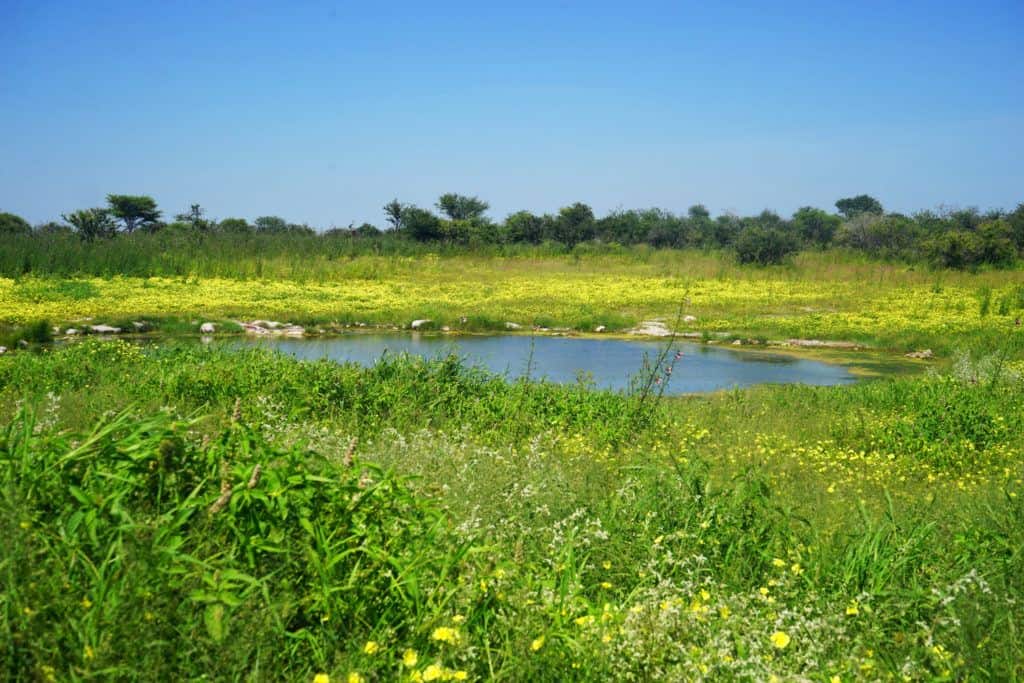
We didn’t even see a bird.
The problem is: during the rainy season, there’s no reason for the animals to go to the waterholes because there’s water everywhere. And being on the tail end of that meant that instead we had to drive around in search of animals in the bushes. We didn’t come up empty handed, though: while we didn’t see a single elephant, we managed to see three black rhinos (super rare) and countless giraffes (my favourite animal).
It was funny, though, to have seen so many spectacular photos of Etosha before arriving, then to end up spending 90% of our time driving from deserted waterhole to deserted waterhole.
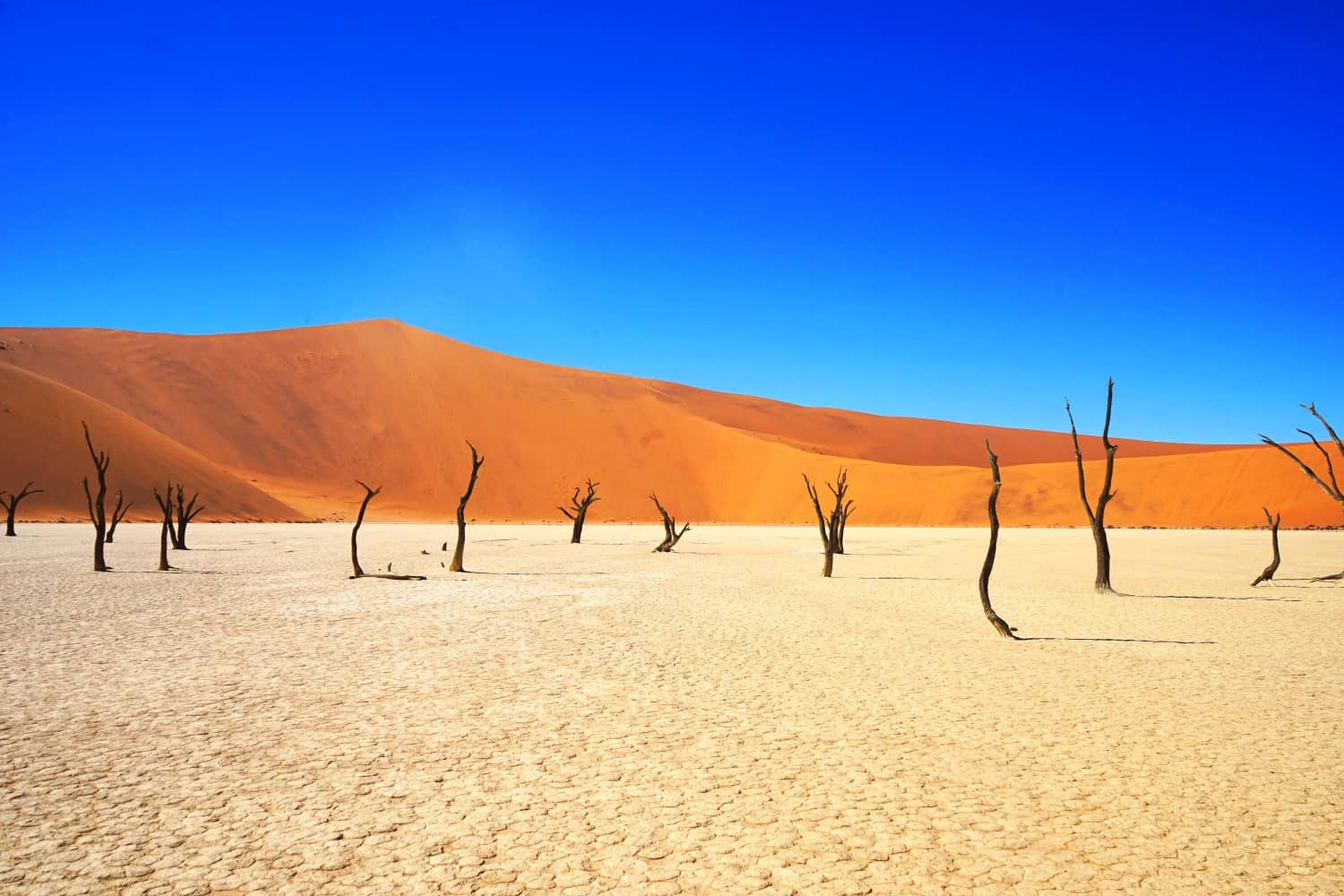
Have I Convinced You to Visit Yet?
I’m not exaggerating when I say travelling in Namibia is one of the best experiences of my life, and I can’t wait to start sharing every incredible minute of my time there. Next up: a detailed itinerary guide followed by dozens of stories to convince you to add Namibia to your bucket list! :-)
Have you been to Namibia before? Would you like to visit?
Related Articles on Namibia 💰 The Cost of Travel in Namibia: My Detailed Budget Breakdown 🦛 The Perfect First Day in Namibia 🐘 Desperately Seeking Elephants in Etosha National Park 🏜 Finding Paradise in Vingerklip: Africa’s Monument Valley 🦭 Seals, Swakopmund, and the Skeleton Coast 🥾 Climbing Big Daddy: An African Travel Highlight 🏚 Exploring Kolmanskop: Namibia’s Ghost Town in the Desert
Lauren Juliff
Lauren Juliff is a published author and travel expert who founded Never Ending Footsteps in 2011. She has spent over 12 years travelling the world, sharing in-depth advice from more than 100 countries across six continents. Lauren's travel advice has been featured in publications like the BBC, Wall Street Journal, USA Today, and Cosmopolitan, and her work is read by 200,000 readers each month. Her travel memoir can be found in bookstores across the planet.
Related Posts

The Cost of Travel in Mauritius: My Detailed Budget Breakdown

How to Spend One Week in Mauritius: An Itinerary for First-Time Visitors

What’s it Like to Travel in Liechtenstein?
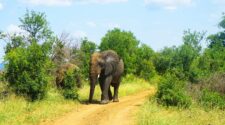
Why You Need to Take a Game Drive in Swaziland/eSwatini
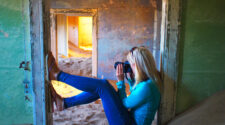
Exploring Kolmanskop: Namibia’s Ghost Town in the Desert
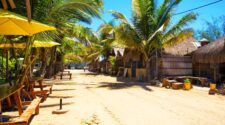
Introducing Tofo: My African Beach Paradise
100 comments.
I have never heard a bad thing about Namibia, and though we haven’t hit Sub-Saharan Africa, it would definitely be atop our list – maybe alongside Botswana? And on top of all you’ve listed, I’ve also heard that they have some decent German beer there since it was a German colony for a while. Any truth to that rumor?
There was *amazing* beer in Namibia! I’ve heard Botswana is pretty expensive and really tough to visit independently, but it’s very high on my list nonetheless. I know you guys would definitely love Namibia though!
Windhoek Lager (best beer in Africa)
Have you convinced me? Actually you have, I would have never thought of visiting there but it looks super amazing and peaceful! It sort of reminds me of Arizona. It sounds like heaven compared to NYC where I am currently at!
-Rachel @ Backcountry Petite
Score! I actually commented several times to Dave that I felt as though we were driving through the U.S. Southwest a lot of the time.
Great post, Lauren! I love all your pictures – especially the one of the night sky and the doors with the sand. It looks SO different than the places I’ve visited in Africa (Uganda and Zanzibar) that I’m very intrigued.
I think you’d love Namibia, Ashley! It’s very different to the other African countries I’ve been to, as well — so arid and empty!
Wow your pictures are absolutely stunning! Namibia has been calling my name lately but as you said it’s so darn expensive. Hopefully one of these days I’ll save up enough to see it. Did you find the food expensive even at local restaurants?
The problem was there often wasn’t any local restaurants. You’ll stay at lodges where the nearest town is several hours away, so you usually have to eat where you’re staying. In Swakopmund and Luderitz, food was slightly cheaper at around $8-10 per meal.
Wow Namibia looks wonderful! Thanks for writing this complete guide. Good to know it is safe. x
It really is the perfect introduction to travel in Africa :-)
Yep! I’m convinced! All I knew of Namibia was the rockin’ sand dunes. But with all this extra awesomeness (aside from the lodging prices) sound right up my alley! What city do you fly into?
I’ve heard of Namibia before, I’m surprised so many others haven’t. It looks wonderful! You have 100% convinced me!
I was there in march and I loved it. I highly recommend it to every one. It’s very safe!
Best regards!
Glad to hear you enjoyed it as well, Rui! :-)
You have definitely convinced me to go to Namibia. I had never thought of it before, but I think I will have to look into a bit now. Look forward to reading more posts about your trip.
I’m so happy to hear that! It’s definitely worth the visit :-)
I enjoyed the read! Amazing photos. Thanks for the tips <3
Glad you enjoyed it, Nadia!
I’ve been to Namibia on honey moon in 1995. Afraid to go back and see it changed. Apart from the occasion, it has been the most fabulous trip I have made. Did you miss the Skeleton coast?
We saw a small part of it while we were driving down to Swakopmund. Managed to see one shipwreck on the beach, but didn’t have enough time to get anywhere else. I would be interested to know if it has changed — it didn’t feel like the type of place that was changing quickly, but that’s totally just me guessing!
Namibia was my first ever solo trip abroad (around 8 years ago) and it was incredible. Yes the driving days are long but it is definitely worth it. The landscapes and hiking are fantastic, like nowhere else I’ve been, and the wildlife is so diverse. Other than South Africa I don’t know what country you can see penguins at one end and all the traditional safari animals at the other end. Looking forward to reading more posts to relive my trip/see how it’s changed.
Totally agree with you, Laura! I was surprised by how diverse the landscapes and wildlife were, and how empty the country the feels.
Looks and sounds like a great trip. Thanks!
It was amazing :-)
Wow, it really looks amazing. Must have been an incredible experience visiting the country.
As I said, the best trip I’ve ever taken. I loved every second I spent in the country :-)
I have to say Namibia looks amazing – it’s never particularly been on my radar, but it definitely is now! Looking forward to more posts on your time there. :)
I’m so happy to hear that, Clazz! It’s one of the coolest countries I’ve ever been to.
And great for children too. The number of ‘cute’ animals identified for airlifting to a proposed zoo in our back garden was extensive! Animals are everywhere: on the beach, by the side of the road, wandering around your lodge or tent. The whole family loved every bit of the holiday.
Ooh, I can imagine! I was filled with childlike excitement over every animal I spotted in Namibia.
I haven’t been before but you have me just about convinced! I’ve heard that the oysters from Namibia are something else as well.
Yes! Oh my god, I had the best oysters of my LIFE in Namibia!
Yep, I’m convinced! Everything looked amazing! Where did you flew from and how much did it cost you?
I flew from Portugal for $250 return with TAAG.
To be honest, this is the first time I’ve heard of Namibia. Probably because I’m from the other side of the globe.. or maybe I need to travel more! Nevertheless, thank you for this post! Very inspiring!
Well, you’re definitely not alone! But hopefully it convinced you to try to make it there one day :-)
Awesome photography. Thank you for sharing these amazing pictures and your experience in Namibia. I can’t wait to visit.
This place looks so stunning. I am one of those who had never heard of Namibia…..glad you shared this post. Thanks!
Glad you enjoyed it, Alex!
Namibia is terrific. I have been there only once but I still remember its beauty…yes it does gives you a lot of pocket pinch but then it’s worth it.
100% worth it!
I’m really excited to delve into the rest of your blog posts about Namibia. I have to confess I knew nothing about it before you visited but it looks like such an incredible country. Loved this introduction into what it’s like the travel there.
Happy to hear you enjoyed the post! Namibia is so underrated!
Namibia has been on my bucket list since I first set foot in Africa, After seeing your images and reading your blog I need to get there! Perhaps it will be the destination booked when I visit Africa again rather than the Safaris I did in 2010 or the Gorilla trekking in Rwanda! Great post!
I highly recommend it! :-)
Good to know, where would you suggest other than sousevlei and kolmanscop?
Walvis Bay, Vingerklip, and Etosha!
Honestly I don’t think it’s that expensive in the grand scheme of things. Sure, it’s not backpacking on a tight budget, but the prices aren’t that bad compared to the rest of the world. And if you compare what you get for the money with what you’d pay in somewhere like Australia, it seems like you definitely got your moneys worth.
That’s true. I guess the only problem is that there isn’t a super easy way to visit on a budget without missing out on a ton of awesome stuff. Most countries around the world will have hostels in most destinations. In Namibia, there isn’t really that option if you want to get outside of the cities and towns. But I agree: if you usually spend this amount of money in other countries as you travel, you’d feel as though you got a lot for your money in Namibia.
If Namibia is ‘Africa for beginners’, as is often said, what a wonderful place to start. Stunning photos, especially the view from the Sesriem Desert Camp. It’s perfect.
Absolutely! It was so easy to visit, and probably my favourite country I’ve now been to in Africa.
Fantastic post about a country I don’t know a lot about. Do they have a dress code in Namibia at all? Do women have to cover up while travelling in the country?
Not really. I would cover up my shoulders sometimes, but usually wandered around in a t-shirt and shorts. Almost all of the tourists I saw in the country were wearing shorts and t-shirts.
Wow it does sound amazing, how many days was this trip? My hubby turns 60 in October, after much nagging he has chosen Namibia.
Great decision! We spent 12 days in the country. Ovita for 1 night – Etosha for three nights – Vingerklip for a night – Swakopmund for 3 nights – Betta Camp for 1 night – Sesriem for 1 night – Luderitz for 1 night – Maltahohe for 1 night – drive to Windhoek and out!
Dear Lauren I am a Namibian, who often enjoys reading visitor’s blogs about my beloved country. It is always interesting to see Namibia through the eyes of other’s…..your photos and posts have been great fun to read. Thanks for the free advertisement……..might I add, Namibia is quite clean, it helps to have a small population density. Nonetheless, we do take pride in keeping it clean, hope you noticed that! Enjoy your travels, hope you make your way back here for an extended journey and with many other wide-eyed visitors in tow! P.S. the dust gets to me too!!! Regards Indileni
Yes, I definitely noticed that! I’m so glad to hear you’ve been enjoying my posts — it’s been a fun country to write about :-)
Hi! Looks like it was a great trip to Namibia. In search of things about this country I found your article. I am interested to go this year there. Can you tell me if you took pills for malaria or vaccine for yellow fever. Thank you
I took malaria pills for my time in Etosha. No yellow fever vaccine — they don’t have it in Namibia.
Hi Lauren, I’m currently finding out as much as I can about Namibia from books and the net, which is where I stumbled on your blog, which I’ve got to say, is excellent. I’d really like to hire a car and go camping, probably with a roof top tent, and only in campsites. My main concern is waking up in the middle of the night, wandering out to go to the toilet and having a close encounter with wild animals. Any advice? Thanks, Tony
It’s not my area of expertise, as I didn’t camp when I was in Namibia, but I’d imagine that you’d be okay in campsites. The animals are very spread out across the country, so it was extremely rare to see them while we were staying anywhere.
Your pictures are so amazing that I want to cry. This is on my list of possibilities for next summer. Thanks for the information!
Ah, thank you! It was easy to take great photos of such a beautiful country :-)
Thanks for a great blog series on Namibia! Great information and very helpful. I’m planning on doing a big road trip in the fall of 2018 and am really looking forward to it!
Sweet! You’ll have an amazing time, Rand :-)
I would like to drive myself through Namibia as I like the independence. However, I know nothing about mechanics and shamefully I’ve never been able to change a flat tire (I’ve tried but I’ve never had the strength to get the bolts off.). So is a tour package the only way to go for me?
You could look into hiring a guide to drive you. That’ll be cheaper than a tour and then you won’t have to worry about tackling the bad roads yourself.
Greetings for Oranjemund,Namibia Lauren,
Thanks so much for highlighting our beautiful country, I see you made Luderitz. Next visit head down to the deep South , Oranjemund was a forbidden town since 1936 due to the vast diamond deposits and only opened to the public towards the end of 2017. We walk amongst the Gemsboks in our streets down here. On the way to the beach last night, I had to stop and shout out the window at all the wild springboks hogging the road. They did not even scatter, but rather stood there giving me the evil eye…. Anyhow, Next time if you make it down here, give us a shout! Thanks again.
Ooooh, I would love to go! Sounds amazing :-)
Awesome read! Namibia is really one of the those countries people don’t seem to know about unless they’ve travelled to Southern Africa, or actually come from the area, like myself. ;) Well, South Africa, but I spent a good few years in that amazing country. Atleast South Africa gives you an idea of where it is directly in the name!
The endless nothingness on the roads is amazing, especially when you drive for hours without seeing a soul.
The amount of wildlife is another incredible thing about Namibia, unfortunate time to travel there in March, whilst you got to experience Nam at its greenest (or there abouts), the animals had plenty of watering holes to choose from, which is a pain when you want to see them ;)
For travelling during the low season, guided tours really are worth it, as the guides all communicate with one another and give each other live information about animal sightings etc. They can be rather pricey though :/
For anyone making a short trip, Erindi Private Game Reserve is a good stop, especially during the low season, the park is one of the largest privately owned reserves, but it is also tiny compared to Etosha, with a lot of the animals you could see in Etosha, the guides are very informed and make a real effort to get you to the animals you want to see (and the tours aren’t too expensive), it’s probably the most worthwhile 1 or 2 nights stay for anyone looking into some wildlife during the low season.
Otherwise, October/November is probably the best time to visit Etosha.
So I think the real question is, when are you visiting again? ;)
Amazing! Thank you so much for sharing! I’d love to get back within the next couple of years — especially because I need to have a better Etosha experience!
Awesome pictures that reminds me of my journey to Namibia although it’s been almost 6 years meanwhile… would go there again any time.
I’ve also published some of my black & white pictures in a Blurb photo book.
Maybe that would be an option for you as well? :)
For all the would-be tourists out there: I am a Namibian and love my country with all my heart! The reasons for my addiction to Namibia`s wild open spaces, spectacular scenery and incredible wildlife are numerous, but the ones standing out for me is the silence (you hear yourself breathe), the fact that you can stop anywhere alongside the road for a cuppa or to pitch your tent without fear of any danger (be it human or nature) and above all….the solitude! Take your 4×4 for an excursion into Damaraland and the Kaokoveld and have your soul completely rejuvenated! The friendly and helpful locals are just the icing on the cake – Namibia for ever. Hope to host you guys soon in our beatyfull paradise – so peacefull, quiet and serene.
Thank you for this post, Lauren! My grandparents lived in Namibia and I was lucky enough to visit them when I was 16. We stayed for 2 months and did a little bit of traveling. Now, 20 years later, I’ve been dreaming of a trip to Namibia with my 14 & 15 yr old daughters and decided to do a little research to see if it was still as empty and beautiful as I remember… From your post it looks like it’s still the perfect place to visit and I’m looking forward to planning a visit next summer. Thanks again.
I just came back from South Africa and that has made me want to visit Namibia. Your blog has now convinced me, although it seems like the dry season is best for animals. What’s the best way to get to Namibia? Is it best to fly to Cape Town and then catch a flight to Windhoek?
Either that or via Angola with TAAG Angola Air — they have some seriously cheap flight deals from Lisbon.
So glad to have come across this overview…
I nabbed a cheap ticket to Cape Town for May of 2019 and am planning on a 3-week Namibia road trip as the focus of my visit.
Looking forward to digging into the accompanying posts soon!
You’re going to have the best trip ever, Chris! Namibia is one of my favourite countries in the world :-)
I recall learning about the Welwitschia plant of Namibia while in school. Recently, an opportunity to travel to Namibia came up and I actually might be able to visit this intriguing country. This post got me even more excited. And the photos are crazy beautiful. thank you!
Oh, wow! I hope you do get to visit, Misael! It’s such a beautiful country :-)
I’m a bit worried that we haven’t booked enough in between stops for our upcoming trip! I have only allowed one day to get from Walvis Bay to Sesriem and one day between all our other destinations. Hopefully our experience of travelling in the Australian outback will help us in Namibia – we have driven over 1,000 sand dunes in our Simpson Desert and tackled corrugated roads like the Gibb River in the Kimberley. We have hired a 4×4 and will be camping – my only fear is meeting a lion in the shower when we do a side trip to Rooiputs in Botswana. I might just use baby wipes for those 2 days!
I have just come across this blog – and just WOW! Namibia looks amazing and the thorough description and itinerary is superb. I’ve recently watched Romesh Ranganathan’s Misadventures where he went to Ethiopia which is another astounding yet non touristic place that people would not think of visiting. I have travelled around the majority of Morocco in a 4×4 over a month and that wasn’t enough time. I’ve travelled all around Australia and NZ over a year – in the outback, NT and WA which have some similarities in terms of plenty of driving and not seeing anyone else for miles and plenty of unsealed road. Both in Aus and Morocco we didn’t seem to have problems with flat tyres but we were deflating / inflating when appropriate. Crazy how you did the trip in a Toyota Corolla.
Sorry for waffling on, I get excited with planning new trips – especially when you say you only need 2 weeks! Anyway just a few questions if you still remember from your time there – How much did you roughly spend during the two weeks, excluding flights, travel insurance, vaccinations. Although these details would be handy to know. – What was the heat like, was it still cool (ish) after rainy season? And were there places to buy / stock up on bottled water or did you kind of need to ration to make it to the next lodge or gas station. – What was the price of gas roughly? – Apart from flat tyres, did you have any major problems or was there anything you were worried out before you went or whilst you were travelling through the country – malaria, insects, the heat etc?
Maybe I need to check out your travel anxiety course again and stop asking questions and just dive right in. It’s been almost a year since I got back from Aus, so I’m gagging to travel properly again but still anxious about Africa. Thank you!
Your website/blog is a true gift. I stumbled on it while planning my trip to hike Hadrians wall and went exploring to see if you had been to Namibia. BINGO. You have an itinerary and everything I need to know for both trips. I can’t tell you how excited and fortunate I feel to have found this site. Thank you!!!
Hi Lauren…We are starting our “Journey Down That Path” yearlong family trip around the world July 1st. Our first month we are renting a 4×4 and touring Namibia.. It’s been on my bucket list since I gave up an opportunity to do Peace Corps work there in the early 90s. We can’t wait to experience all these sites. Thanks for your inspiration!
Hi Lauren. We are travelling to Namibia for the first time in October. I’m just wondering about travel injections. We will be getting Typhoid, Hepatitis A and advised to take Malarone anti malaria tablets as we are visiting Etosha National Park and staying outside of it at El Dorado Guest Farm. Is it necessary to get the rabies vaccine? There are a lot of dogs at this farm. Maybe I’m just being over cautious. Any advice would be greatly appreciated for first timers. Itinerary is arrive in Windhoek, drive to El Dorado Guest Farm in the morning, spend two nights there and then head southwards. Many thanks
I wouldn’t bother with the rabies vaccine. It’s highly unlikely you’ll even be bitten by a dog, and I can’t imagine the owners would be keeping rabid dogs on their property, either! You can tell when a dog has rabies, so the owners wouldn’t just let them hang around their other animals and endanger them and themselves :-)
I don’t see how you would get bitten because I doubt anyone would allow wild dogs roam free on commercial property. You would be fine, don’t just overthink it.
Great tips! In retrospect, would you have splurged on a bigger car better suited for the roads, are was the struggle with the bad roads in your little car worth it? And did you get any flats or have other car troubles?
There are definite pros and cons for each option. If we’d had a bigger car, there’d have been a greater chance of it rolling on the bad roads, for example, and they can be much more expensive to rent while also using more fuel. We really didn’t have too many problems with our car, so would stick with what we drove. We had one flat tyre, right at the end of our trip (on the first bit of paved road we’d had in a fortnight, haha), but it was no big deal. A local actually pulled over within two minutes of us stopping and changed the tyre for us!
If you don’t have much experience on gravel roads, maybe go for the 4WD option, but we didn’t really have any major problems with our Corolla. And the rental cars are definitely well-equipped for any flats you might have, with a spare tyre and a jack.
It just looks like the most beautiful country in the world! I can see why you loved it so much. I bet they’re probably doing ok with COVID with their population all spread out!
I spent 4 months in this beautiful country; 25 years ago. I would highly recommend Waterberg plateau, you would struggle to find a more stunning place on the planet. I will never ever forget this country, I have travelled around the world and visited some fantastic countries, and I can say without a shadow of a doubt, Namibia is by far the country that I will never forget. The stars, the sunset and sunrise, the scenery and the tranquility are my cherished memories.
Namibia has been on my wishlist for several years. You don’t mention renting the jeeps with tents attached. Are you familiar with this option?
Greetings from Canada, perhaps i missed this ,but what would you pack? i see you in jeans in pictures, certainly I dont need safari attire? off to Namibia in September.
Nope, no need for safari attire; I just wore my normal clothes that I wear at home! Jeans and a t-shirt, shorts and a t-shirt, a hoodie in the evening, etc. Everybody else that I saw was just wearing typical clothes, too — very casual. There’s no need to try to camouflage yourself from the animals in Etosha as it’s usually a dusty plain so everything stands out against it!
Hi Lauren, Great article, thanks so much. I was wondering if you booked your hotels before you left for Namibia or just booked as you went during your trip. I’ll probably just follow your itinerary, but I wasn’t sure if I should book ahead. Planning to go in May or June. Thanks, Peter.
I booked in advance. I don’t think any of the places I stayed in were fully booked but I was there during the low season. If at all possible I would recommend booking in advance, though! In some parts of Namibia, the accommodation is spread so sparsely across the country that if you turned up somewhere and couldn’t get a room, you might have to drive for an hour or two to get to the nearest property!
Leave a reply Cancel reply
Your email address will not be published. Required fields are marked *
Meet Lauren Juliff

Namibia Travel Tips: 9 Things to Know Before Traveling in Namibia
- Pinterest 571
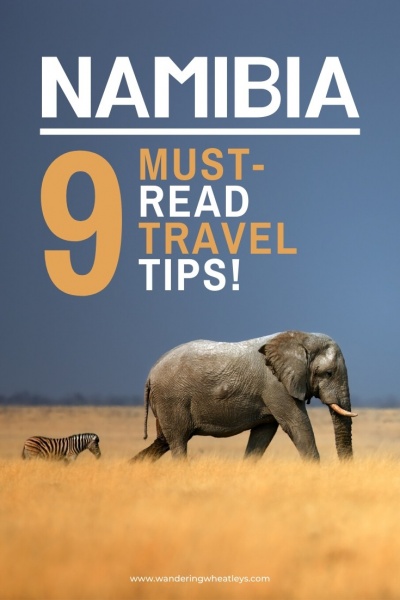
Namibia was on our bucket list for about a year before we had the opportunity to visit. We kept seeing gorgeous photos on Instagram, we read countless blogs about road tripping around the country, and we figured that camping in remote areas while surrounded by wildlife was unreal. We also did our research and learned that Namibia was quite a bit safer than its neighbor, South Africa.
So we booked a ticket, rented a truck with a tent on the roof, and planned out a detailed 3-week itinerary . The process of renting a truck was smooth but lengthy and we detailed our experience here .
We found that most of what we’d heard about Namibia was correct. But we also encountered a few unexpected surprises along the way. Read the 9 things to know before visiting Namibia to ensure that you are ready for anything and everything in this beautiful country!
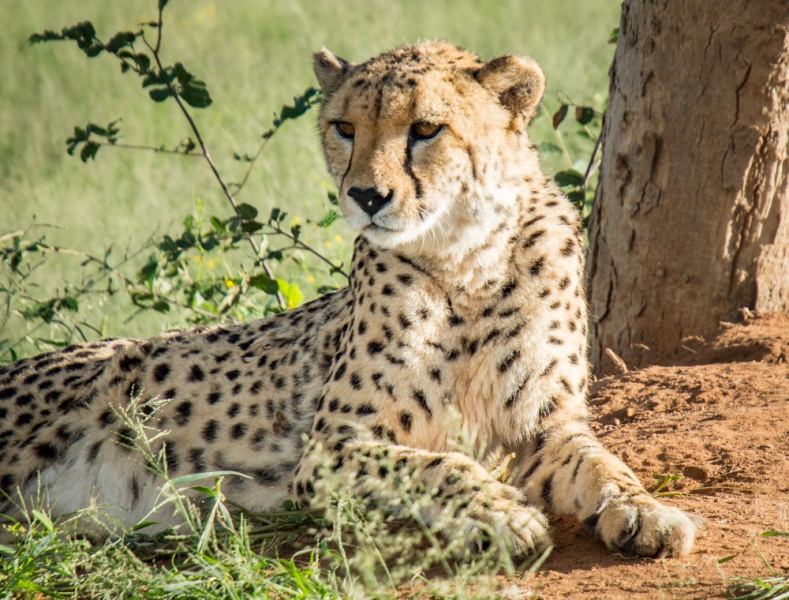
Disclaimer: This post may contain affiliate links. If you make a purchase or booking through one of our links we may earn a small commission (don’t worry, it’s at no extra cost to you).
9 Things to Know Before Visiting Namibia
1. it’s really expensive to travel in namibia.
To put this in perspective, road trips are always pricey so Namibia isn’t outrageously more costly than any other country. But considering that you’ll be spending at least $80/day on renting a 4×4 truck with a tent (if that is your choice of accommodation), probably $60/day on gas, plus money on groceries, park entrance fees, and then pay per person to camp – it adds up really fast.
We laughed at ourselves for somehow managing to spend $300 each day even though we were dining on ramen noodle packets for dinner each night.
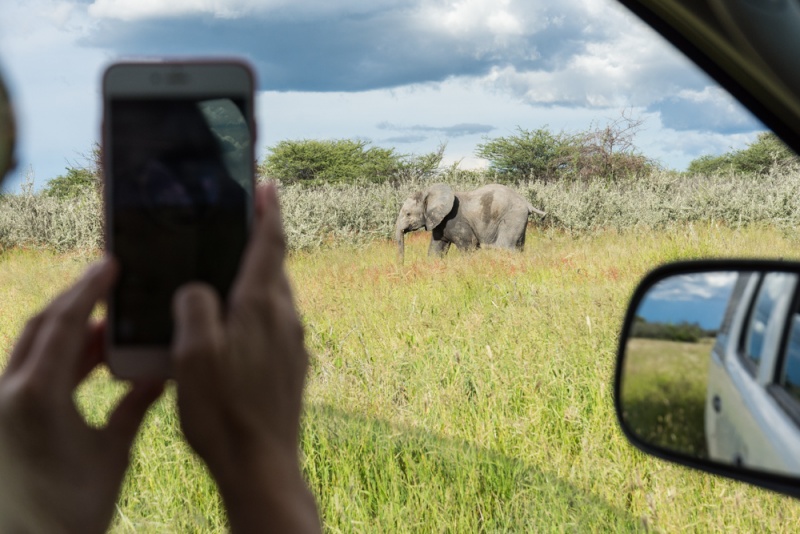
It’s just really easy to drop $300/day without even really doing anything other than driving, eating, and sleeping. Expect campsites to cost around $15-20 per person per night. And if you decide to stay in luxury camps or do a guided safari, the costs will increase dramatically.
Be sure to budget accordingly and to build in a little cushion in case something goes wrong with your vehicle or any of your camping gear. And buy a lot of wine, shockingly it’s the only thing that’s cheap here.
2. A 4-Wheel Drive Vehicle is Highly Recommended
Paved highways in Namibia are few and far between. In order to visit the most impressive highlights of the country, such as Etosha National Park, you’ll be more comfortable if you rent a car that has 4-wheel drive and, even better, high clearance. Especially if it’s been raining.
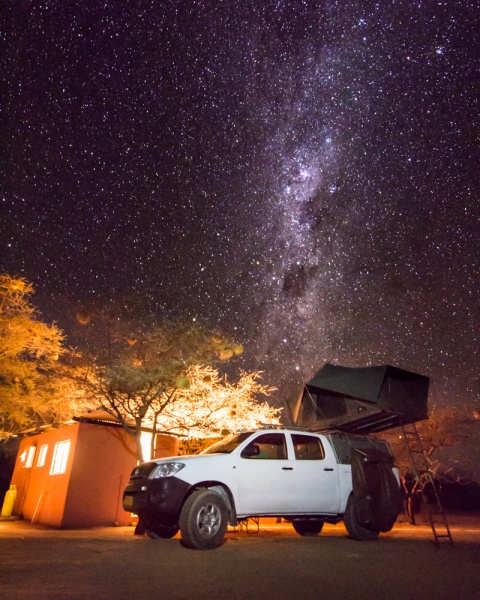
We briefly considered renting a smaller vehicle and staying in lodges rather than camping but we soon realized that would have been a huge mistake. We enjoyed having the freedom to take seemingly questionable roads without worrying about completely bottoming out our rental car. Plus our truck came with 3 spare tires, just in case.
If you do rent a regular-sized sedan for your trip, be sure to check road conditions prior to setting out each day. And make sure that you have a spare tire with good tread prior to leaving the rental car lot.
3. Namibia is Safe… Relatively…
Everyone we talked to that lived in Namibia raved about how safe it is. But when we’d tell them we were going to walk to a restaurant for dinner or check out the town after sunset, the response was always “oh no, you don’t want to walk around at night here.”
And every time we parked to go to the grocery store or to grab a bite to eat at a restaurant, we had someone insist on “watching our car” while we were inside. Even in the middle of the day with loads of other cars and people around. We figured it was worth giving them a small tip for peace of mind.
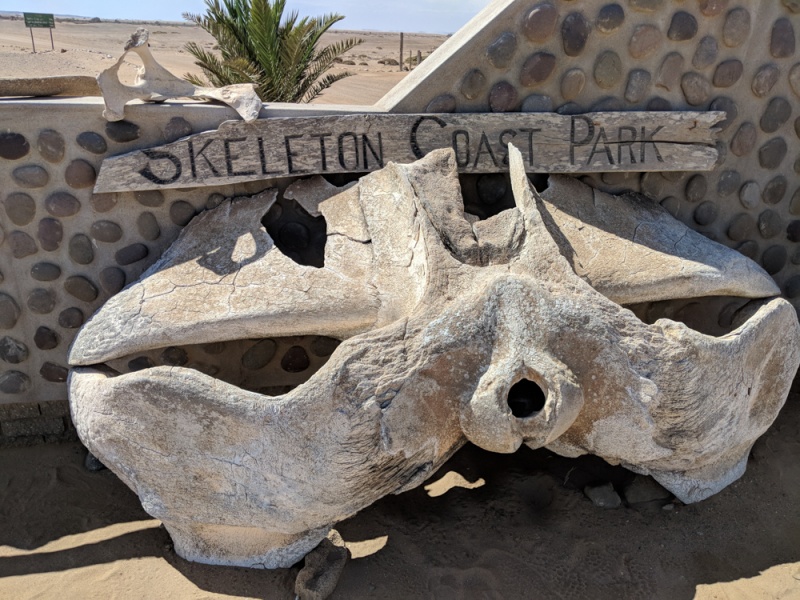
Throughout our trip, we learned that Namibia is definitely safer than South Africa, but probably not as safe as we expected it to be. The danger is more opportunistic than actual physical bodily harm but you should be as cautious as you would be in any large city. Never leave anything valuable in visible sight in your car and be sure to keep your doors locked, even while driving.
4. Everything Takes Longer Than You Think it Will
Most rental car agencies have rules about driving in the dark. Wild animals are everywhere and they can be incredibly difficult to spot at night. Visitors are strongly encouraged to limit their driving to the hours between sun up and sundown. And fitting in all of your daily activities with the long distances that you’ll need to travel during those hours can be daunting.
When planning your daily routes it’s easy to take your Google Maps directions at face value. “Google says it will only take us 3 hours, we can leave at 10 am and have plenty of time!” But in reality, it will probably take you closer to 6 hours and you’ll end up limiting the number of times you stop for photos or snack breaks just to get to camp before dark.
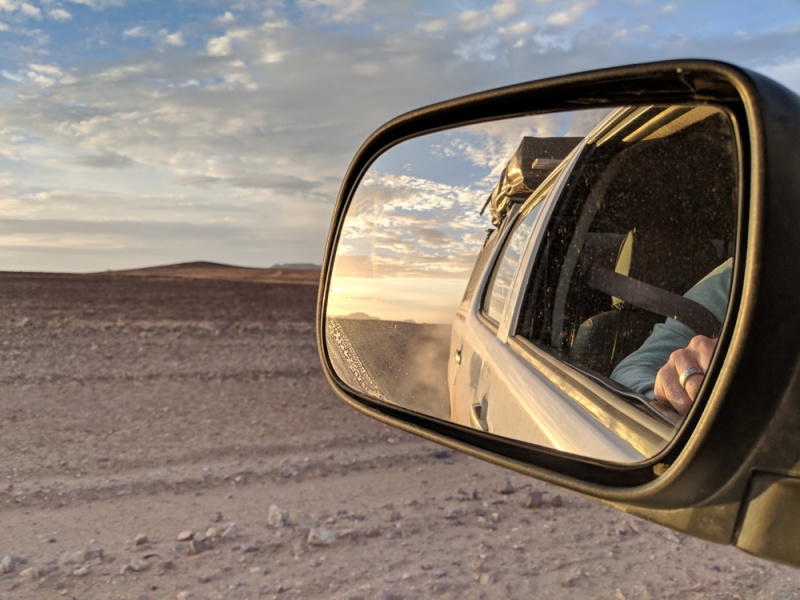
Be sure to leave yourself enough time to get where you need to go. Especially when visiting Etosha National Park where you can actually face a fine if you’re not out of the park before dark!
5. You Won’t be “Roughing It” in Namibia
When we’ve taken road trips in the past there were plenty of times we went days without showering and were forced to use the great outdoors as our toilet. We showered in gas stations or rivers when we couldn’t bear our own stench any longer.
That is definitely not the case in Namibia (unless, of course, you choose to wild camp).
All of the campsites that we encountered had well-maintained bathrooms, hot showers, shaded campsites, and flushing toilets. Many of them also offered campsites with their own electricity, picnic table, barbecue area, and freshwater faucet. Many even offered Wi-Fi and a pristine pool!
If aren’t an avid camper and your upcoming trip is giving you anxiety, fear not! Even the most high-maintenance person can handle this “glamping”.
6. You’ll Spend a Lot of Your Time Driving in Namibia
We easily packed on five extra pounds during our three weeks in Namibia. There aren’t very many opportunities for hiking and most of the highlights of the country can be easily accessed by car. And since everything takes longer than you think it will, and you have to cram your driving into daylight hours, you’ll spend a huge portion of every day sitting on your butt in the car.
And while you’re driving it’s only natural to snack. All of the sitting combined with the snacking is a recipe for waistline disaster.
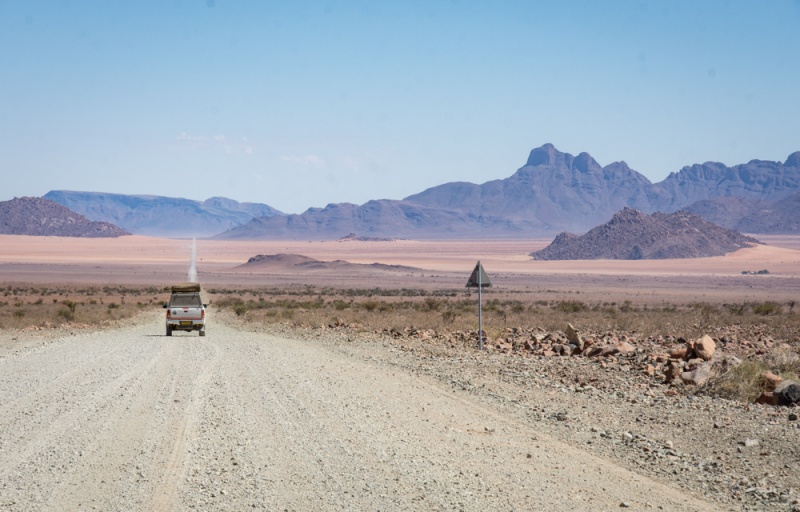
Not only is it challenging to keep the weight off in Namibia, but the long drives can be incredibly boring. There are several really amazing stops along the Skeleton Coast drive but much of it is just, well, barren. There’s nothing all that interesting to look at and the washboard roads make for an uncomfortable journey.
Check with your rental car agency to ensure that your truck has Bluetooth or aux cord connectivity (or pack an FM transmitter if they don’t) so you can keep yourself entertained during long drives.
7. Locals Try to Flag You Down
While driving through Namibia, especially in the north, you will encounter countless locals who will try to get you to stop. It may be because they would like a ride (many locals use hitchhiking as their primary means of transportation), or because they want you to give them food, money, or water.
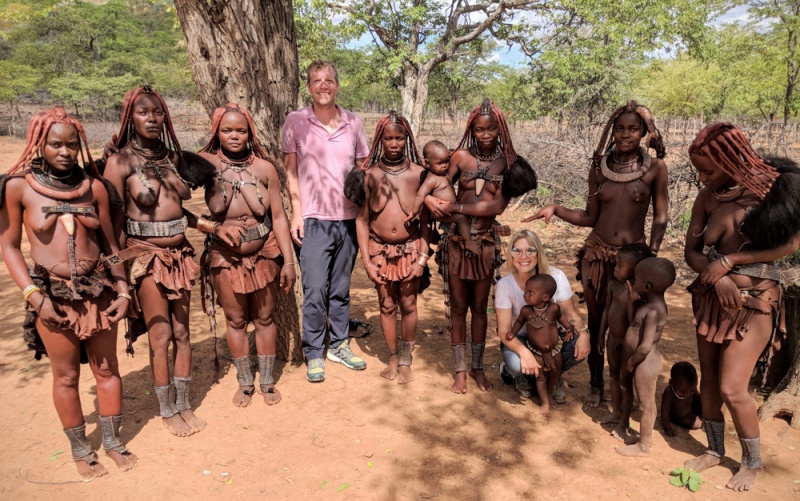
It is especially common on the road leading from Opuwo to Epupa Falls. It can be a bit disconcerting if you aren’t expecting it. We even had a man run alongside our car, attempting to get us to stop. We gave water to a few people who were working along the road and gave rides to several Himba women. But if we’d stopped for everyone it would’ve taken us forever to get anywhere.
Don’t feel obligated to stop or to pick anyone up unless you feel totally comfortable. If you would like to help these locals, keep fruit, veggies, or water in the front seat of your car to hand out along the way.
8. A Regular Travel Adapter Won’t Work in Namibia
Most plugs around the world are included in a standard universal travel adapter like this one . But unfortunately the plug you’ll need for Namibia and South Africa has prongs that are quite large and require their own specific converter. Make sure you buy one that is specific to this region either before you leave or at the airport when you arrive.
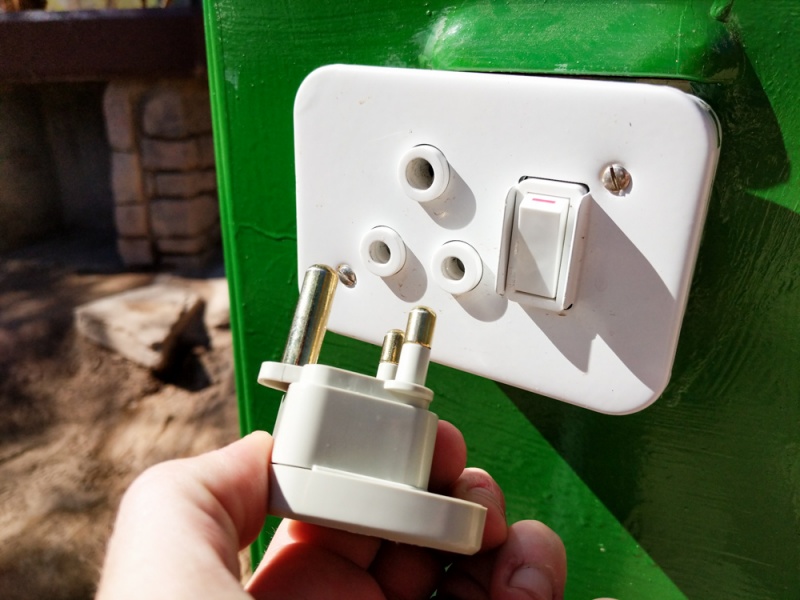
And be sure to check out our entire Namibia packing list when preparing for your visit!
9. Everyone Wants a Tip in Namibia
While tourism is steadily increasing in Namibia, sadly most of the people continue to struggle with poverty. And at times that leads to desperation which is why you may experience or hear about opportunistic crimes, such as car thief.
Many locals have gotten creative in an attempt to solve both problems. When you pull into a parking lot, you’ll likely get approached by either a child or a man in an official-looking vest who will offer to watch your car while you’re inside. Expect to give a “car guard” 2-3 NAD if you are making a quick trip or 5 NAD if you plan on being away from your car for an hour or more.
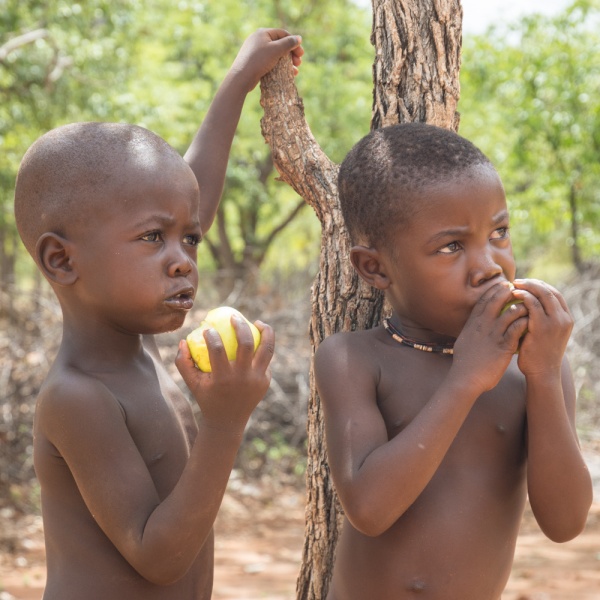
At the time of writing the exchange rate was 13.91 NAD to $1 USD so you’ll rarely tip more than $1 unless dining out.
You’ll also be expected to tip:
- Your gas station attendant 5-10 NAD for pumping your gas and washing your windshield.
- The person who bags your groceries at the market. 1 NAD per bag is appropriate.
- The parking lot security guard (unless you have a car guard).
- 10% or more at restaurants.
- Tips at hotels are customary and expected. Most have a “tip box” at the reception desk that is shared by all.
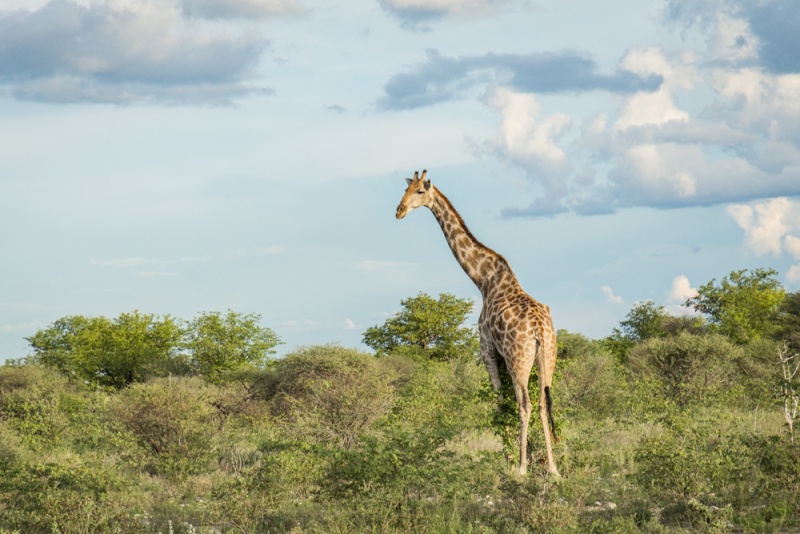
We hope these Namibia travel tips help you have a great time traveling in Namibia!
Want more help planning your trip to Namibia? Check out our favorite travel guides!
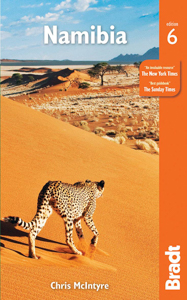
SHARE THIS ON PINTEREST
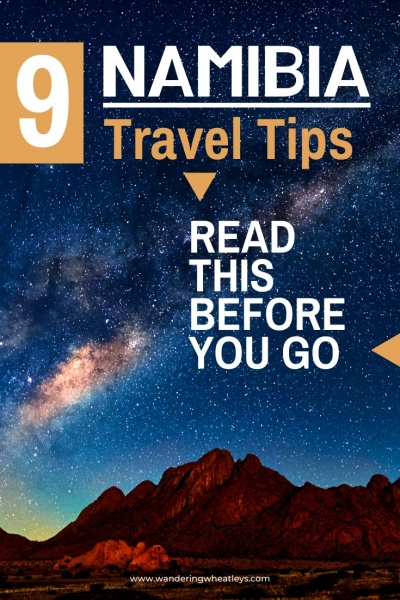
About the Author:

Val grew up in Portland, Oregon but moved to Oahu on a whim back in 2013. She sold her house and all of her belongings and bought a one-way ticket. Since then she’s taken two around-the-world trips and has visited 60-ish countries while living out of a duffel bag. Val started documenting the Wandering Wheatleys travels back in 2013 as a way to update friends and family about her whereabouts and to relay humorous daily interactions. The only readers were her mom and her mother-in-law but that didn’t stop her! These days you’ll find Val dreaming up future trips, creating new travel content, managing a team of amazing travel enthusiasts, and chasing around her two adorable but naughty kids.
View all posts
Related Posts
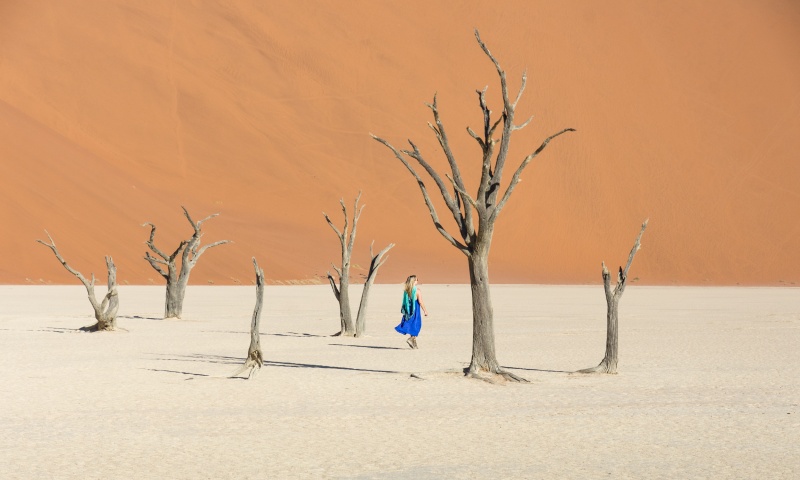
Namibia Packing List: What to Pack for Namibia
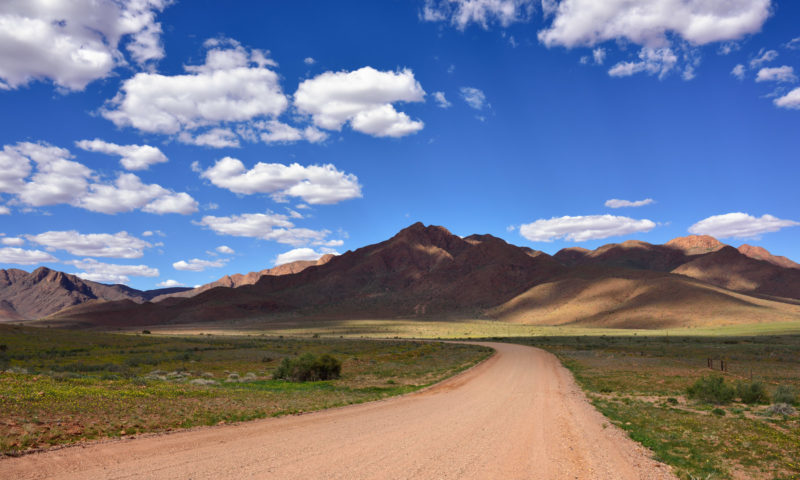
Guide to the Naukluft Mountains Waterkloof Trail Hike
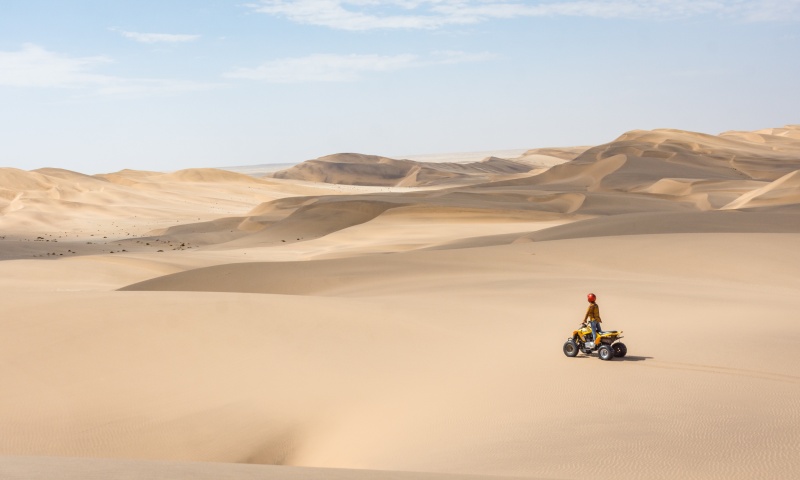
The 12 Best Things to do in Swakopmund, Namibia
1 thought on “namibia travel tips: 9 things to know before traveling in namibia”.
Very very informative article. Well articulated. I’m planning a Nairobi to Windhoek drive and this was quite an eye opener. thanks.
Leave a Comment Cancel Reply
Your email address will not be published. Required fields are marked *

Namibia Travel Tips: 27 Essential Things to Know Before Your Trip
By Author Jurga
Posted on Last updated: January 20, 2023
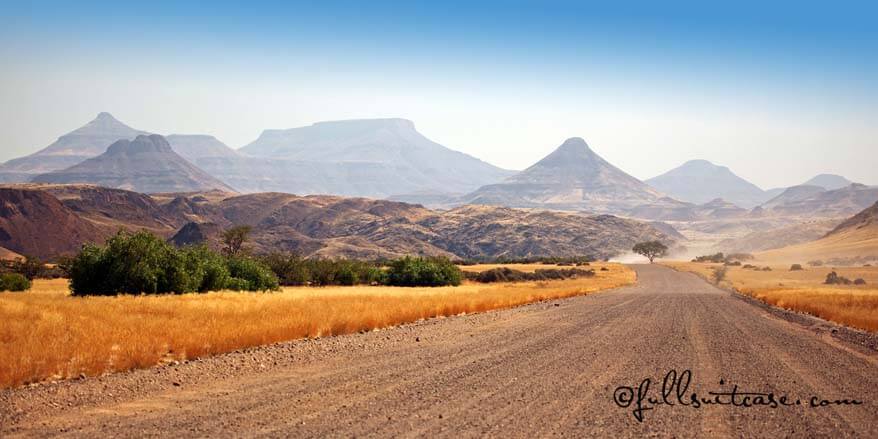
Traveling to Namibia and wondering what to expect? This article contains all the information that I wish I knew before our trip – our experience-based Namibia travel tips . Find out!
There are so many things I wish I had known before traveling to Namibia! Is it doable and a good idea to road trip in Namibia? How are the road conditions and why do some people say that you cannot do a self-drive tour? Should we start our trip with Etosha or should we end there? Do I need closed shoes in the Namibian desert? Etc.
I strongly believe that you enjoy any trip more if you are well prepared and know what to expect. It is especially the case when you travel with children or when you visit remote areas where good preparation is vital.
I spent lots of time looking for all kinds of information for our family trip to Namibia . However, I never found all the answers to my questions in one place. Therefore I put this extensive guide with many practical tips to help you prepare your trip to Namibia. Take a look!
Namibia travel tips:
1. Book Well in Advance
Many places in Namibia are very remote and accommodation can be limited. Family rooms are very hard to find, so it’s really advisable to book well in advance if you are traveling with children or if your dates are not flexible .
This is especially the case in Etosha where travel agencies block lots of rooms a year in advance and so they can get practically inaccessible to individuals. It’s often easier to book this type of accommodation through a travel agent.
We booked our trip almost a year in advance and still had to look for alternative places/dates for some accommodations.
2. Prepare a Good Itinerary
There is a lot to see in Namibia and the distances are big, so you have to do some thorough research before booking your trip .
If you are self-driving and covering a fair bit of the country, make sure you know exactly what you expect to see and do each day. Good planning is essential so that you don’t spend too many hours driving and have enough time to see all those incredible places.
Make sure that you always have some spare time for unforeseen circumstances or just to be able to stop and smell the roses along the way. This is figurative, of course, you will not see roses in the Namibian desert. But you will see plenty of wildlife and amazing landscapes, and you will regret having to pass on it because of the time pressure.
Sometimes long driving days are unavoidable if you want to see a lot of different places in one trip. Just make sure your that the whole trip is not spent sitting in the car.
LEARN MORE: Namibia Itinerary
3. Plan Your Driving Times Well
Days are rather short in Namibia and you really cannot travel in the dark so plan your driving times accordingly. 4-5 hours driving time is about the maximum you should plan in one day.
Also, take into account that you cannot drive fast on gravel roads. 80km/h is about the maximum speed. However, often you will have to drive much slower than that. You can never know in advance how it will go as a lot depends on the condition of gravel.
It’s also good to know that most lodges organize all kinds of activities like safari rides and sundowners in the late afternoon. So make sure you reach your next lodge in time if you want to join one of the rides.
You can contact your lodge in advance to check what’s available and if there is any special activity that you are interested in. But generally, they will not leave for the evening safari before 3 pm, and most sundowners start even a bit later.
4. Visit Etosha NP at the End of Your Trip (North-Bound Itinerary)
We were told that it’s best to plan your Namibia trip in such a way that you visit Etosha National Park towards the end of the trip . I have to agree with this.
You’ll appreciate all the other places much more if you haven’t first been spoiled by the Etosha safari experience.
So if you are just starting out with your Namibia itinerary planning, see if you can end in Etosha rather than start there. If your trip is already fixed and you are going to Etosha first, don’t worry – you’ll love it either way!
5. Don’t Drive Fast and Don’t Drive in the Dark
Driving in Namibia is done on the left side of the road. Namibian roads are mainly gravel, but there are quite a few tar roads as well. Main gravel roads are regularly maintained and in good condition.
You might have read that driving in Namibia can be dangerous. I wouldn’t say it’s any more dangerous than anywhere else in the world. It’s just different.
There are just two main rules: don’t drive too fast on gravel roads and don’t drive at night .
Driving in the dark is dangerous, mainly because of wild animals. The roads are not marked well either, so driving in the dark outside the cities is really out of the question. You will also see that most rental companies only allow driving during daytime hours.
6. Check if You Need an International Driver’s License
You’ll need an international driver’s license in Namibia if your driver’s license is not in English or if you stay in the country longer than 90 days.
7. Rent a 4×4
If you only travel from Windhoek to Swakopmund or from Windhoek to Etosha National Park, you can do it with a regular car. Etosha roads are gravel, but you can – in principle – drive there with a regular vehicle (just make sure to check with the car rental company first).
However, you will be missing a lot of Namibia if you decide to stay on tar roads only. Actually, you will be missing the most beautiful places. So don’t make this mistake.
If you are serious about exploring Namibia, you will need a 4×4 . Here are a few examples of the famous places you cannot get to without a 4×4 vehicle (or a plane, but I assume you are driving): Sossusvlei, Damaraland and UNESCO site of Twyfelfontein, Fish River Canyon,…
Renting a camper is not recommended in Namibia. It will take you a very very very long time to get to places. The roads are really meant for 4×4. If you want to camp, you should rent a 4×4 camper vehicle with a tent you can put up on the roof. It sleeps 2 to 4 people and can be a good choice for a couple or a smaller family.
8. Take Full Insurance for Your Car
I always recommend getting complete insurance coverage when renting a car. In Namibia, it’s really a must! You never know what happens on those gravel roads. Not even talking about wildlife crossing the roads…
Our experience. We got a crack in the windshield of our car when a stone hit it. It was not our fault and there was no way we could have avoided it either. Because we had full insurance, we didn’t have to deal with any of the formalities and the car rental company took care of everything.
TIP: We now rent all our cars via this car hire website when traveling anywhere in the world. They give you the option to select full insurance and we always do it. It’s always much cheaper than at the counter. We once had to make a claim and it was all handled online with a few clicks, and the money was reimbursed to us in less than a week.
9. Get Two Spare Tires
Tire punctures are very common in Namibia. So if you do one of the most popular road trips that include Etosha, Damaraland, Sossusvlei, and/or Fish River Canyon, you should reserve a second spare tire for your car! Most car rental companies offer this as an option. And even though it costs a bit more, it’s really a must.
Some people are so unlucky that they have two or even three flat tires in one day when driving in rural Namibia. Some others – like us – spend weeks and drive thousands of kilometers without any problems whatsoever. But you better be safe than sorry. Otherwise, you can get really stuck and it’s not something you want to experience in the middle of nowhere.
If you travel through even more remote areas (e.g. North of Palmwag, or the coast between Luderitz and Waalvisbaai) you may want to take three spare tires with you and also a couple of extra fuel cans.
Leaving regular tourist roads is probably not the best idea for individual travelers. I would advise traveling in a group of at least 2-3 vehicles or booking a guided tour if you want to visit truly remote places.
10. Keep Your Gas Tank Full
During your road trip through Namibia, make sure to fill up your car whenever you can . Most maps of Namibia indicate where the petrol stations are located, but keep in mind that this information is not always up-to-date. We have experienced this several times.
So never rely on this information and make sure that you get gas whenever you can. This is especially the case when driving in more remote areas far from the main cities.
Namibia is really not a place where you want to risk running without gas.

11. Pack a Travel Booster Seat if Traveling with Kids
While children’s car seats are not required in Namibia, they are highly recommended. Renting children’s car seats is not very expensive, but you have to reserve them in advance.
Alternatively, you can take your own booster seat with you. I highly recommend that you do that because the quality of car seats we saw at the car hire places is really questionable.
We took our own booster seats for all three kids. It’s helpful if the booster is quite high – that way the kids sit higher than in a regular booster seat, and they can see the animals better.
LEARN MORE: Best Travel Booster Seats
12. Don’t Be Afraid to Travel to Namibia with Kids
Before our trip, we were wondering if it’s a good idea to travel to Namibia with young children. My answer is yes, absolutely!
We took our 4, 4, and 6-year-old kids for a month to Namibia and had a great time there. It was one of the most special road trips we ever did and I’d go back in a heartbeat!
I think that Namibia is a perfect family destination with children of any age. You can read more about it in our other articles and find out why we think Namibia is the best African country for a family trip.
LEARN MORE: Namibia with Kids & Safari with Kids
13. Check Medical Info & Get Good Travel Insurance
It’s essential to check medical information when traveling to Namibia! We use and recommend the website of the Institute of Tropical Medicine in Belgium for any medical travel advice.
You’ll be glad to know that there is practically no malaria in Namibia (except in the very North of the country). If you travel to Namibia in the dry season (April-November) and don’t go further North than Etosha, you don’t really need to worry about malaria. You don’t need a Yellow Fever vaccination either.
Make sure to check for the most up-to-date situation before you travel and talk to your doctor if you have any questions. Also, make sure that you are ok with the regular immunizations (tetanus, diphtheria, pertussis, measles, polio, hepatitis…).
In Namibia, you will often be at least half a day’s driving distance from the nearest doctor or pharmacy, so travel well-prepared . Most lodges are foreseen to provide first aid if needed, but it’s wise to carry any medication you think you might need with you. Also, make sure to take a basic first-aid kit with you.
Good travel insurance (in case you need to be repatriated by plane) will give you peace of mind too.
14. Pick the Right Season to Travel to Namibia
The best months to visit Namibia are probably September and October. It’s dry season, there are no mosquitoes, no malaria, and animal viewing is very good. However, it’s also the most popular and the most expensive time.
Summer school holidays – July and August – are also very good months to travel to Namibia, but it’s much colder.
Don’t expect to go swimming if you are traveling in June, July, or August as swimming pools are not heated in Namibia and the water is really too cold to swim. Our kids went swimming on several occasions despite the cold, but it’s not something you should expect to do a lot.
May and June are also very good months and there are significantly fewer tourists in that period.
The wet season (November to April) is not the best time to visit Namibia as it can get really hot and some roads might get flooded if it rains. On top of that, game viewing can be really limited in this period. However, it still rarely rains and if you get lucky, this might be a good time to visit Namibia on a lower budget and no crowds.
15. Know That Namibia is One of the Safest Countries in Africa
Is Namibia safe? This is one of the main questions I get from our readers. Namibia is one of the safest African countries !
We never ever felt unsafe in Namibia – not in towns and not in the rural areas.
You should worry more about driving safely or about wild animals than about crime. Of course, use common sense and be careful, lock up your car, and don’t leave valuables unlocked in your hotel room, but that counts for anywhere you travel.
16. Pack Warm Clothes if Traveling in Namibia in July or August
July and August are winter months. And while the days are generally very warm, it can get really cold at night in winter in Namibia. So you definitely need to pack a windproof jacket and a sweater.
We had freezing temperatures at night in Southern Namibia in July. During the day shorts and t-shirts are sufficient, but you will need a sweater and long pants the moment the sun goes down (and before it rises). Don’t forget sunglasses, a sun hat, and sun cream.
Dress even warmer if you are going camping in Namibia, especially in the Southern part of the country. Pack a warm sleeping bag, a warm jacket, dress in layers, and don’t forget gloves, a scarf, and a shawl.
You will need warm clothing (including a cap and gloves) if you go on a whale-watching tour as well.
LEARN MORE: What to Pack for Namibia
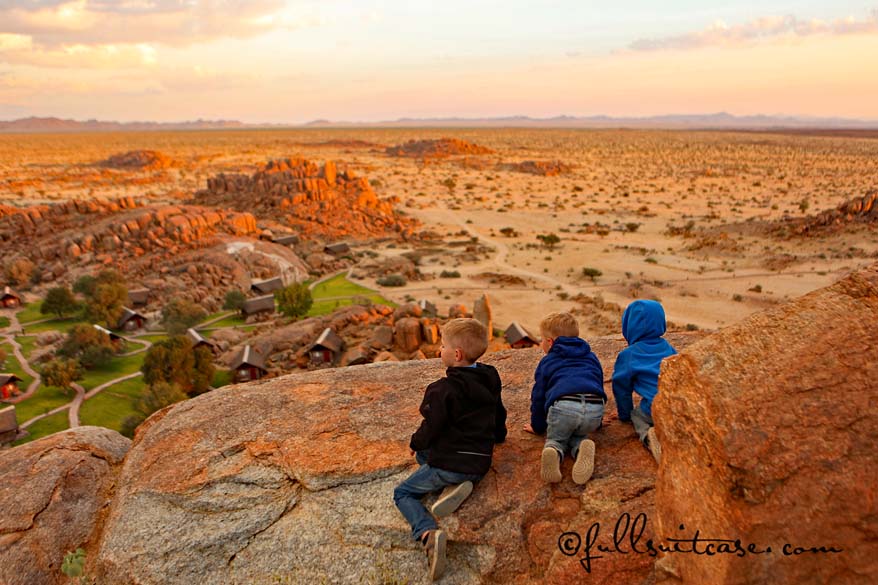
17. Pack Closed Shoes
It’s best to wear closed shoes in Namibia, even if it’s warm. That way you don’t have to worry about stepping on some dangerous animals in the desert (the chances are pretty slim), but that’s not the only reason. You’ll be walking on stones and sand all the time. So your feet will suffer a lot if you don’t wear closed shoes.
You don’t really need hiking shoes, but sturdy walking shoes are advisable. We only wore sandals on a few occasions in Namibia in July. So if you want to travel really light, you’ll be glad to hear you can do pretty well with just one pair of shoes.
If you plan to climb the dunes, you’ll quickly realize that it’s easiest without shoes. You may want to wear socks though as sand can get really hot in the desert. ideally, you pack a pair of old socks with you for walking on hot sand.
18. Enjoy the Food
The food in Namibia is absolutely delicious. If you are worried about the safety or quality of the food in hotels and restaurants, you really don’t have anything to worry about. Every single meal we had in Namibia was really good. They have a European-influenced cuisine with an African touch and it’s amazing that you can find such fine cuisine in such remote areas.
All the lodges where we stayed made an effort to prepare special meals for the children as well. Furthermore, there were usually many more options than the usual spaghetti or fries.
Most hotels in Namibia have breakfast and dinner included, so you only have to worry about lunch. As you can imagine, there are not many places where you can eat during the day when traveling in remote areas.
It’s wise to always carry drinking water and some food with you.
Most lodges offer to prepare a lunch pack for you upon request. But often you have to ask for it in the evening before, so don’t forget.
Alternatively, stop at the supermarket before you leave the town and stock up on water and some food that stays good for a couple of days. Taking a travel cooler (12V) with you will give you lots of flexibility on the road. Of course, you have to also pack it on the plane…
19. Take Cash for Tipping
Namibia uses the same currency as South Africa so you can pay in South African Rand or in Namibian Rand . 200 Rand (+-12 EUR) is considered a lot of money, so make sure you have smaller banknotes with you as well.
You can use credit cards in most lodges and restaurants, but you do need to carry some cash as well.
Tipping is expected everywhere so make sure you always have some small notes on you. When you park your car in the city, at the campaigns, and some other areas, often you will see men asking for some change in order to guard your car. It’s a normal practice in Namibia (and in South Africa) so don’t be greedy.
Food and activities are relatively cheap in Namibia, especially outside the lodges.
20. Pack an Electrical Adapter & a Power Bank
Namibia uses type D/M electrical plugs. You can probably borrow one in the hotel, but it’s easier if you take a few type M travel adapters with you.
Note that some lodges switch off their electricity generators at night, so it’s wise to charge your appliances the moment you get to the lodge.
I also recommend packing a power bank , especially if you are planning to use your smartphone camera a lot. In addition, take a small USB-charger to use in the car , and at least a few spare cables to charge your phone. I recently had a cable break during a trip, and was so glad to have packed two, just in case!
21. Prepare for No Wi-Fi and Bad Mobile Network Coverage
One of the nicest things about a vacation in truly remote areas is that you can disconnect from the rest of the world. No emails distracting your attention, no Facebook feeds, no tweets…
Namibia is not that remote and you will find enough opportunities to check your email, but don’t expect to have an Internet connection every day. Most high-end lodges and hotels will probably have Wi-Fi available, but you shouldn’t count on it. Furthermore, Wi-Fi connection is often pretty slow and unreliable.
You will be able to send an email once in a while, but don’t expect to download or upload lots of data like pictures or videos. Most state NRW hotels (in Etosha or Sossusvlei) don’t have Wi-Fi, and even where they do, it usually doesn’t work.
If you go camping, you will probably be offline during the whole trip, except during your stay in Windhoek or Swakopmund.
Cell phone coverage is good in some places and nonexistent in the others, so you cannot count on it either.
22. Do Your Laundry in Namibia
If you go on a long trip to Namibia and want to travel light, you will need to do your laundry there. Most lodges in Namibia offer laundry service, but it might take some time, so don’t do it if you only stay somewhere for one night.
Also, it can be cheap or quite expensive, depending on the lodge you are staying at. Some people recommend asking one of the maids at the hotel as they usually agree to do your laundry for a minimal fee, but we never tried this.
We didn’t feel like doing much laundry on our vacation, but it’s inevitable on a 4-week road trip. We packed enough clothes for two weeks and did the laundry only once in our hotel in Swakopmund which was just about in the middle of our trip. We booked a self-catering apartment (owned and operated by Cornerstone Guesthouse ) with all the facilities and it was really convenient when traveling with the family.
23. Prepare for Lots of Sand
When you travel in Namibia, sand is everywhere. It really makes no sense to worry about it because you really cannot avoid it. But you can prepare for it a bit.
All the baggage stowed in the trunk of your car will quickly be covered by sand when you drive on gravel roads. So do not take your newest suitcases on this trip!
If you want to avoid sand getting inside your bags, you can place your luggage in a big disposable plastic bag (think plastic trash bags) or at least cover it up a bit. Alternatively, carry a brush to dust off the bags.
Your shoes will be covered with red sand as well, so it’s probably not the best idea to wear a new pair of white sneakers to Namibia.
24. Pack Good Camera Equipment
For most of us, Namibia is really a once-in-a-lifetime bucket list trip. So make sure you pack the best camera that you have ! If you don’t have one, get it! I know you’ll regret it if you don’t.
You will need two types of photo lenses in Namibia – a wide lens for landscapes and telelenses for wildlife. I took 24-70mm and 70-300mm lenses with me and it was sufficient. But if you are really serious about photography and don’t mind the extra weight, you should probably take several lenses that cover 10-400 mm range.
Alternatively, get a good point-and-shoot camera with a strong zoom lens (like, for example, this budget-friendly camera ).
Don’t forget the extra batteries and a battery charger, sufficient memory cards, and a tripod. Buying batteries outside the cities seems to be a big issue in Namibia, so make sure you stock up on batteries in advance.
READ ALSO: Best Cameras and Lenses for Safari Travel Photography Tips
25. Don’t Stay (Long) in Windhoek
You don’t need much time to visit Windhoek. Half a day is sufficient. Better spend the first and the last nights of your trip at one of the many lodges outside the city. You will be glad you did!
26. Stay in Swakopmund
Many first-time travelers to Namibia are wondering whether they should stay in Walvis Bay or in Swakopmund. The two places are just a short ride from each other, and so I would advise visiting Walvis Bay, but staying in Swakopmund.
Walvis Bay has a big colony of wild flamingos and the whale-watching trips also depart from there, but it’s more a town to live in than to visit.
How should I put it? Swakopmund is more touristic, has a nice downtown area, beautiful buildings, lots of restaurants and hotels, a nice beach… It just feels more like a vacation place. For me, it’s by far the nicest town in Namibia.
Swakopmund is the perfect base for various day trips and excursions . If you don’t mind the budget, you can stay in town for a week or two and see half of Namibia just by doing day trips (sometimes by plane) from Swakopmund.
As a part of a road trip, I would plan at least 3 nights in Swakopmund . That gives you time to do a couple of day trips in the area. Also, staying in a town with all kinds of facilities is a welcome break from traveling in the desert for days in a row. There are plenty of dining options, many shops, banks, doctors… For us, it felt a bit like an oasis in the desert.
27. Be Generous
There are many poor people in Africa, so try to help local communities in small ways. Buy something small from a street vendor, leave a tip for the cleaning staff, and be generous when tipping hotel staff and tour guides. Often, the amounts are really insignificant compared to the cost of your trip, but they can make a huge difference to the local people.
Do you have some old clothing or shoes that you plan to throw away after the trip? Don’t. Give them away instead!
I know some friends of mine who buy cheap t-shirts and other clothing to take on their trips to Africa. They give it all away at the end of the trip. You will be amazed how grateful people can be for something which seemingly has no value to us.
More travel tips for visiting Namibia:
- Best Places to See in Namibia
- Namibia Road Trip Itinerary
- Complete Namibia Packing List
- Visiting Indigenous Tribes in Namibia
- Best Place to Stay in Etosha National Park
- My Favorite Photos from Namibia
If you found this post helpful, don’t forget to bookmark it and share it with your friends. Are you on Pinterest? Pin this image!
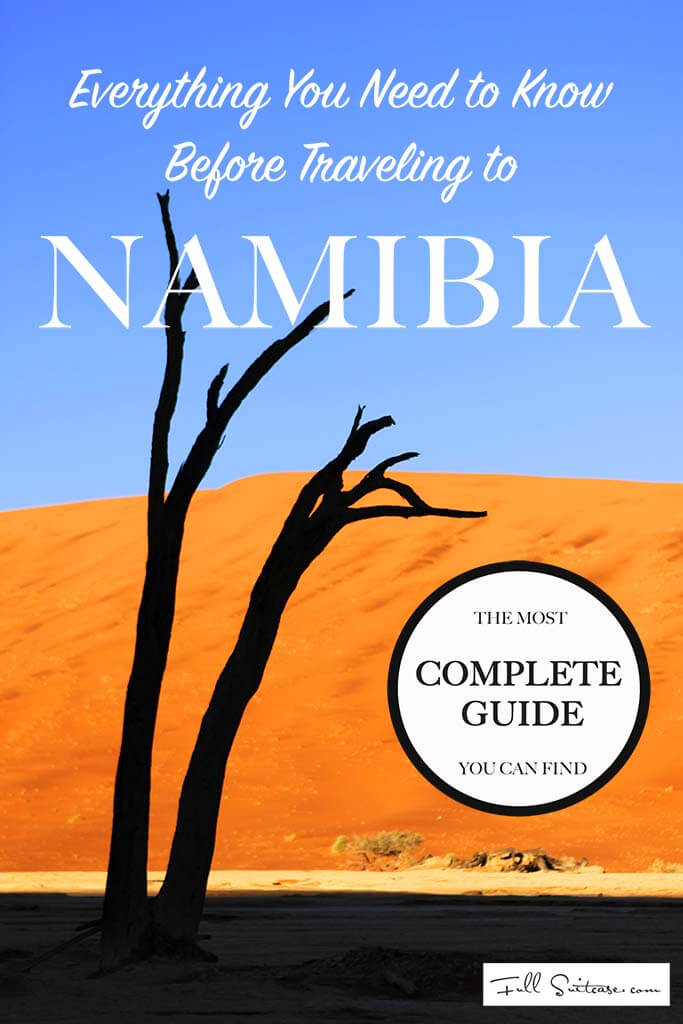
This site uses Akismet to reduce spam. Learn how your comment data is processed .
Monday 24th of July 2023
Your list is great! I found a place to rent an 12V cooler for the trip. 420 NAD for two weeks, so I don't have to pack it in my luggage :) Google knows where to find the camping gear rental in Windhoek :) Thanks for your blog!
I'm sure there are many more tourist facilities in Namibia now than when we traveled, so yes, it's definitely much easier to rent bigger items like a cooler if you can. I would assume that renting camping gear is also possible nowadays. Have a great trip, Marlene.
Friday 16th of June 2023
I just want to say thank you, thank you, thank you for giving such specific details. I am leaving for Cape Town in 9 days and then staying in namibia for about 18 days. I'll be volunteering for two weeks with Ehra, but the few days I'll be in Namibia on my own is starting to feel a little overwhelming. Your blog eases me tremendously. I feel my trip will be amazing just from reading the info you shared. Great job, world traveler!!
Saturday 17th of June 2023
Glad to help, Ginneen. Have a great time in Namibia!
Tuesday 6th of June 2023
Thank you so much for posting all this really helpful information. We're traveling in Namibia, Botswana, and Zimbabwe for four weeks with my daughter (14) and my mother-in-law. I really appreciate being able to read your genuine insights and tips.
Wednesday 7th of June 2023
Glad to help, Meg. Have a great trip!
Julia Jackson
Saturday 16th of April 2022
Thank you for these great tips! My kids (19, 17, 15) and I will be in Namibia for 3 weeks in July. The latter half of the time I’ll be working in Windhoek. Can you recommend a lodge to the north of Windhoek for our first night? We’ll leave the next day for 8 days of exploring.
Monday 18th of April 2022
Hi Julia, I don't have much experience apart from the lodges where we ourselves stayed during our trip (see our Namibia itinerary for details). If you don't want to stay in town and want to drive northwards, it really depends on when you arrive and how far you feel comfortable going on the first day already. I found this beautiful lodge that's not too far from Windhoek and it seems really nice, AND it's relatively close to the main road which makes it a good choice if you just need something for one night. Hope this helps.
Thursday 24th of June 2021
Jurga, Many, many thanks for your amazing collection of information for traveling to Namibia. We will be leaving the end of July for two weeks with our 18 year old grandson and although we have traveled to Africa twice, this will be our first trip to Namibia. Your insight, advice and personal experience has been priceless to us. Happy and Safe Travels! Deb Barrett
Glad to help, Deb. Have a wonderful trip!

Namibia Travel Guide
Your ultimate namibia travel guide, with tips, things to do, and best things to see in namibia. great for first-time and returning travelers..
Lions stalking Blue Wildebeest under the cover of sun-burnt savannah grasses. Desert elephants – smaller than most, and with unusually wide feet – adapted to the blowing sands of the Kalahari.
Termite mounds as tall as my house, and people that throw incomprehensible pops and clicks into their speech at seemingly random times .
This Namibia travel guide will help you plan your next vacation.
Popular Guides
- Walk with Cheetahs
- Kilimanjaro
- Things to do
Our Highlight
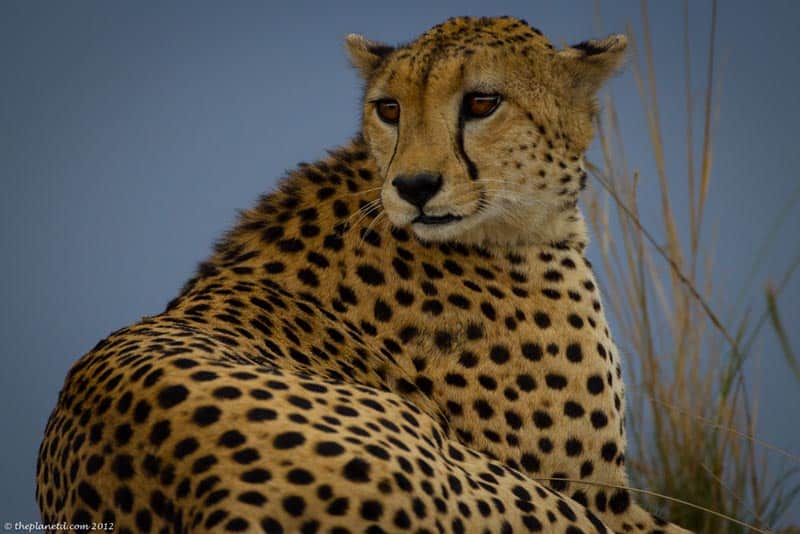
Table of contents
Table of Contents
Fast Facts about Namibia
- Namibia power voltage is 220V 50Hz; Plug D & M
- The Namibian currency is the Namibian dollar and is around 13 NAD to 1 USD.
- Beware of Chikungunya , a viral disease transmitted by the bite of infected mosquitoes. This outbreak continues to affect parts, Africa. Symptoms can take up to 12 days to appear but usually begin within 3-7 days after being bitten by an infected mosquito. Symptoms generally include fever and joint pain; other symptoms can include fatigue, headache, nausea, vomiting, muscle pain, and rash.
- Travelers spending a lot of time outdoors or visiting game parks have an increased risk of being bitten by a tsetse fly which can cause African Sleeping Sickness. Remember that these flies: bite during the day, are attracted to bright, dark colors and can bite through lightweight clothing.
- Namibia banks, as well as Wilderness camps, only accept US Dollars, GBP Sterling, Euro and South African Rand in cash. Travelers’ Cheques in any of the above currencies are also acceptable. MasterCard and Visa are usually accepted throughout Namibia.
- The water is not potable ; drink only bottled water.
Things to See and Do in Namibia
- Namib-Naukluft National Park: Come to the largest game park in Africa. Included are parts of the Namib, the world’s oldest desert, as well as the Naukluft mountains.
- Spitzkoppe: Climb these granite peaks in the Namib desert. Featuring paintings created by the Bushmen, see art from the past while climbing the rock formations.
- Volunteer to work with Cheetahs and wildlife conservation.
- Windhoek’s Christ Church: Step inside this historical German Lutheran Church in Windhoek. Constructed in 1907, it is the oldest Lutheran church in Namibia and is considered a symbol of the city.
- Etosha National Park: See lions, zebras, giraffes, leopards, and more at this national park.One of the best places to see wildlife, you can also head to the salt pan in the middle of the park, which is the largest one in Africa. Camping is available in the park.
- Fish River Canyon: One of the most popular places in Namibia, Fish River Canyon is the largest canyon in Africa and the second largest in the world. Go camping, hike through the Fish River Hiking Trail (53 miles long in total), or just take in unparalleled views of the canyon.
Namibia Travel Guides
- Ultimate Guide to Kitesurfing Cape Town
- We Cycled the Continent of Africa
Accommodation
Budget: You can find a variety of hostels and guest houses for 150-450 NAD per night. These come with free breakfast and Wi-Fi, simple private rooms or dorms, an outdoor pool, and close locations to nearby shops and restaurants.
Mid-Range: For mid-range, expect to pay around 600-750 NAD per night. These hotels come with private rooms, an outdoor pool, a casual hotel restaurant, free breakfast, and a lounge area.
High-End: For five-star hotels, you will pay around 3,500-13,000 NAD per night. Take in the best with private suites with flat-screen TVs and fireplaces, free breakfast, a hotel restaurant and bar, spa services, and activities like birdwatching.
Check out our favorite booking platforms Booking.com , Tripadvisor and Air B&B for the best deals on accommodation in Ireland.
colonial period. Oshifima (millet paste) served with meat and vegetables is a popular meal. Other common meals include oshiwambo (beef, spinach, and maize meal), braaivleis (meat barbeque), and potjiekos (meat, chicken, and fish stew).
Head down to the coast to get fresh seafood or look for street vendors that sell kapana (spicy meat strips). There are more restaurants where you can sample more Namibian cuisine. In total, expect to pay around 100 NAD per day for food.
The Best Ways to Get Around Namibia
Getting to namibia:.
Flights: There are 8 airports in Namibia, but the Hosea Kutako International Airport is the main airport to fly into and is 28 miles from the capital of Windhoek. You can check for the best flights to Namibia on Skyscanner .
Transportation:
Buses: Buses come in two main forms: the minibuses that go throughout towns or long-distance buses that travel between cities and include meals. Reservations should be made at least 72 hours for long-distance buses. Travel from Windhoek to Oshakati in 10.5 hours for 450 NAD
Taxis: Taxis are another way to get around. A typical taxi ride through the capital of Windhoek will cost about 12 NAD.
Car Rental: To rent a car, you generally need to be at least 25 years old and will need a U.S. driver’s license that has been valid for a year. Prices average at 1,070 NAD per day.
Uber: There is no Uber, but there is the rideshare app Lefa, which operates similarly to Uber.
When to go To Namibia
The best time to visit Namibia is between July and October. During these months, temperatures are pleasant (high 60s/low 70s) and there is little rainfall, which makes it the best chance to see wildlife.
Where to Stay in Namibia
Avani Windhoek Hotel and Casino: Centrally located with beautiful views of Windhoek with a Rooftop pool.
Hakusembe River Lodge, Gondwana Collection Namibia : When in Rundu, stay at this great lodge. Relax in wood-furnished bungalows, sleep in canopied beds, dine at the riverside restaurant, swim in the outdoor pool, go fishing, take a champagne river cruise, or relax on the sun loungers. Kids 5 and under stay free.
Protea Hotel by Marriott Walvis Bay : Stay next to the Atlantic Ocean at this hotel. The Walvis Bay Train Station is just 7 minutes away on foot, which is perfect for those who want to explore more of the city. Or you can stay inside and enjoy free breakfast and Wi-Fi, a hot tub, golf, room service, and a hotel restaurant and bar.
Check out our favorite booking platforms Booking.com , Tripadvisor and VRBO for the best deals on accommodation in Namibia.
What to Pack for Namibia
The climate is typically semi-desert with hot days and cool nights. Midsummer temperatures may rise to over 40 degrees Celsius.
Winter days are warm, but dawn temperatures may drop to freezing. The coast is cool with low rainfall and fog that prevails from late afternoon until mid-morning. The rainy season lasts from October to April.
The rest of the year is dry and cloudless. Rejoice, Namibia averages 300 days of sunshine a year!
- Waterproof bag – the bag has two functions, protecting your stuff from the rain and also from the dust, especially if you’re travelling to drier regions.
- Footwear – especially important if going you are heading on a safari! Pack a pair of lightweight, durable, waterproof and comfortable shoes and also a pair of flip-flops or sandals that you can change into after a long day of sightseeing.
- Protection from the elements – pack sunscreen, sunglasses, a hat, a loose sarong or wrap to cover yourself from the sun and bug-spray to prevent getting bitten by a mosquito (that might have malaria!)
- Layers – pack the basic tropical clothes and make sure to include long pants, long-sleeve tops and some warm clothes for those chilly nights. Make sure to pack parka and scarf / gloves for winter
- Avoid packing dark colored clothes – tsetse flies are drawn to dark colors, like blue and black clothing, and their bite can give you African Sleeping Sickness. Stick to light, neutral colors but avoid packing white clothes as they will get dirty and dusty pretty quickly.
- Pack for Humidity – for humid weather it is best to pack fabrics that breathe as much as possible and natural fabrics, like cotton, linen or rayon (avoiding silk, wool and polyester). Clothing should be loose and comfortable to encourage the flow of air and allow moisture to evaporate.
See our packing tips: packing list for smart travel & How to Pack for a Safari
Namibia Travel Guide: Best Booking Resources
Whenever we travel to we make sure to start with these companies. We have tried a lot of different ones over the years and all of these have consistently proven to be the best when it comes to offering great prices.
We have used every one of these personally and continue to do so.
- Booking.com : This is our go site to when comparing prices for accommodation. It usually has the cheapest prices, especially in Europe and we love their interface. Not to mention you get free cancellation and you are guaranteed the best price.
- Trip Advisor : What we like about Trip Advisor is that we can look at all the reviews and then book our accommodation. TripAdvisor is where we go when we want to compare prices with multiple accommodation providers.
- VRBO : is the main search engine we use when we are looking for a home or apartment rental. It can sometimes be cheaper than hotels and it is the best way to stay in areas that offer a more local feel.
- Hostelworld : With one of the largest databases of hostels in the world, Hostelworld is the go-to site when you are looking for budget accommodation.
- Skyscanner : This is the first place we check for flights. It consistently comes back with the cheapest and best options. It allows us to compare a lot of airlines to get the best price.
- Rome 2 Rio : If you want to see how to get somewhere by plane, train, bus, ferry or car Rome2Rio lays it all out for you as well as related costs.I love how they show it all to you on a Google Map and it works offline.
- Get Your Guide: For all your day trip and city guide needs, we use Get Your Guide. It has the world’s largest collection of things to do with more than 30,000 activities in 7500 destinations.
- World Nomads Insurance: When traveling to Italy you should always have travel insurance. We have found the best bang for your buck is by far World Nomads.
Namibia Travel Guide: Related Articles
To browse all our articles and guides about Namibia click here.
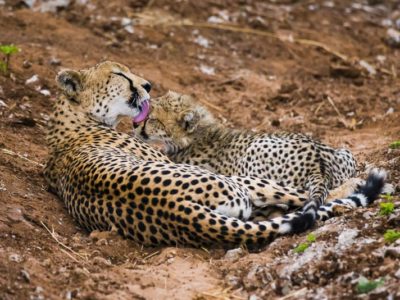
Walk with Cheetahs – Bushmen Conservation in Africa
Traveling in Namibia: 11 Practical Tips and Handy Know-hows
#1 a pair of binoculars is indispensable in namibia, #2 the best time to visit namibia.
- #3 Namibia’s climate
#4 Is traveling through Namibia safe?
#5 tipping is customary in namibia, #6 payment methods in namibia, #7 starting your journey well in windhoek, #8 greetings in namibia may differ, #9 you need a special adapter in namibia.
- #10 Must do: Traveling with a 4×4 and Roof Tent in Namibia
#11 This is the ultimate travel itinerary through Namibia
Traveling through Namibia awakens all your senses. The country is perfect for an exciting road trip that allows you to see the most beautiful places in a short time. We embarked on an adventure with Namibia Nomads . With a rugged 4×4, you cruise through deserted landscapes where you occasionally encounter giraffes, zebras, or ostriches. Namibia’s landscape is mainly composed of rocks and stones, but surprisingly, each destination is completely different. From hundreds of meters high sand dunes to unique rock formations and deep canyons. In the most remote places in the country, you get to know local peoples and their traditional way of life. A trip to Namibia requires some preparation, so we have listed 11 practical tips and useful information below. With these tips, you’ll be well-prepared for your trip to Namibia!
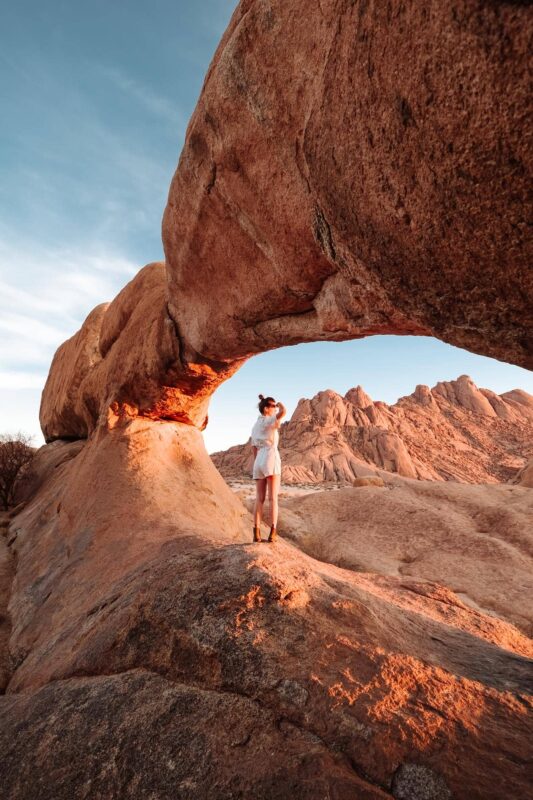
Namibia is a dream destination for wildlife spotting. We spotted a wide variety of animals during our safaris, and binoculars were essential for that. In the largest natural park, Etosha National Park, you’ll find many waterholes where animals come to drink regularly. The landscape is barren, allowing you to scan the horizon with your binoculars or observe the animals up close. This makes spotting easy and even more enjoyable. One of the most affordable yet good binoculars is the National Geographic 10×50. We had a lot of fun with it.
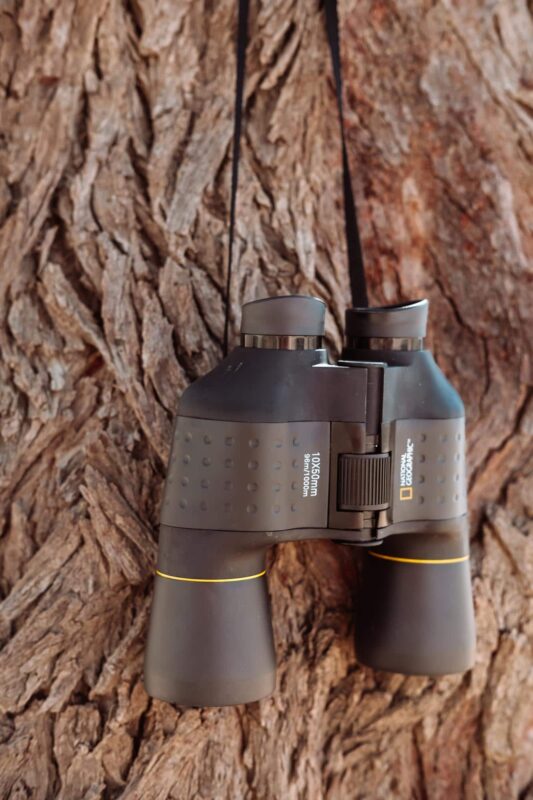
In principle, you can visit Namibia all year round. The best time to visit is during the dry season, from May to October. In these months, there is little rain, and the temperatures are mild. From November to April, Namibia can get considerably hotter, with a higher chance of short, heavy rains. These rains can sometimes cause small floods, requiring you to cross rivers by car. January and February, in particular, are wet months. One significant advantage of traveling during this period is that the nature is beautifully green. We were there in November and had great weather, with only a few showers.
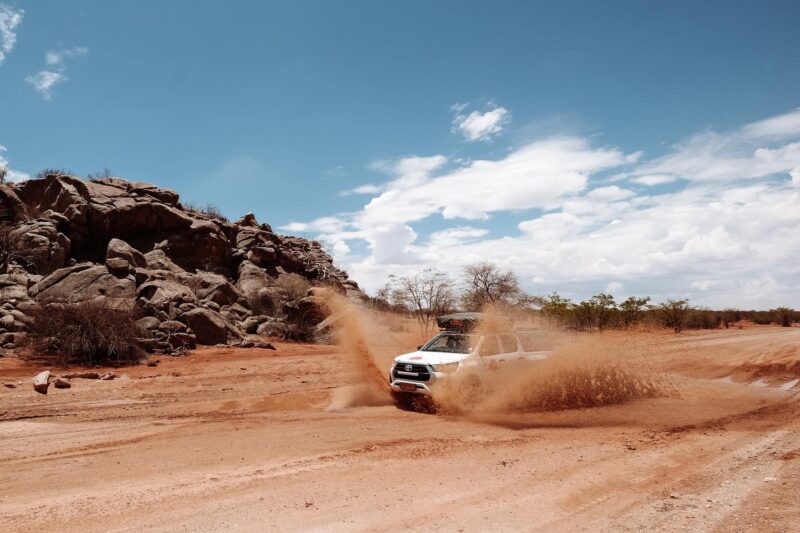
#3 Namibia’s climate
Namibia experiences various climates, resulting in a wide range of temperatures across the country. The majority of Namibia has a hot desert climate, characterized by extremely low rainfall and significant temperature fluctuations between day and night. During the day, the temperature in the hot desert climate can exceed 40 degrees Celsius, while it cools down significantly at night. Along the coast of the Atlantic Ocean, a cool, foggy climate prevails. Destinations like Swakopmund and Walvis Bay have average temperatures around 22 degrees Celsius. There is often mist, and a refreshing breeze blows.
Clothing tip: In addition to lightweight clothing, pack warm clothing as well. Layers are great for cold evenings and for visits to Swakopmund and Walvis Bay. Don’t forget to bring a hat or cap for the hot desert.
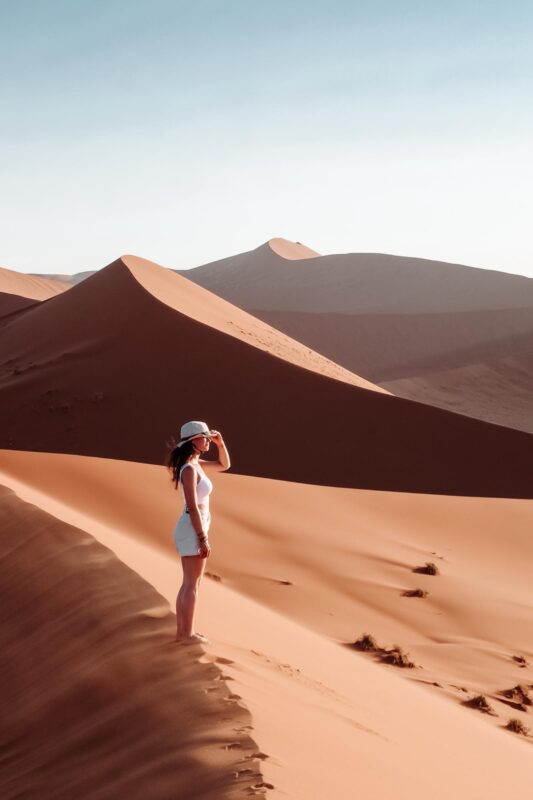
Traveling through Namibia is safe. The country has a stable political situation and low crime rates compared to most other African countries. Windhoek is the only place where you should be a bit more alert, especially regarding theft. If you plan to drive a car through Namibia yourself, it’s essential to be prepared for possible car breakdowns. Namibia is one of the most sparsely populated countries globally, so you’ll traverse kilometers of empty landscapes. If you experience car trouble, it may take a long time before you receive assistance. Ensure you always have enough water in the car, and it’s helpful to watch a YouTube video on how to change a tire before your trip.
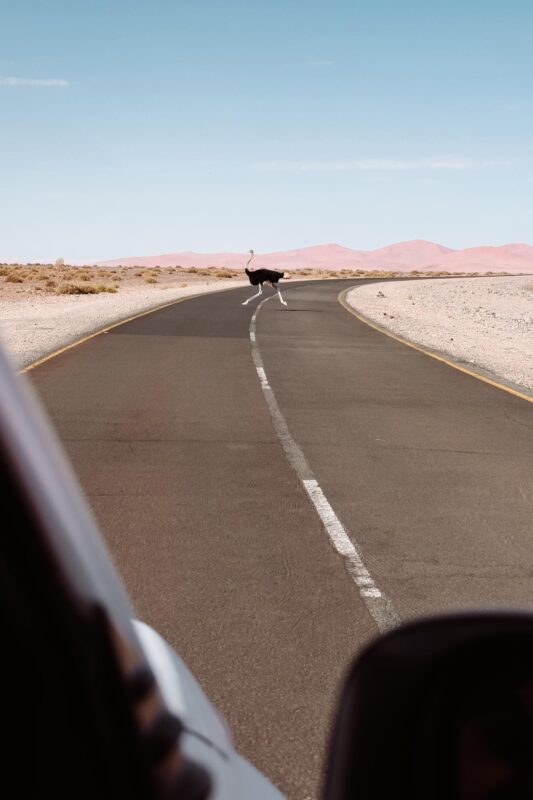
Giving tips is part of the culture in Namibia. In restaurants, you’ll typically receive a pen with the bill, allowing you to write down your tip. It’s customary to give a 10% tip. At gas stations, an attendant will fill your car’s tank and wash your windows. It’s customary to give a tip of 5 to 10 Namibian Dollars (NAD). When you go grocery shopping at a supermarket, there are always parking attendants in the parking lot who are willing to watch over your car. It’s customary to give them some small change in advance. Also, when you’ve been on a guided tour, it’s customary to give a tip of around 10%.
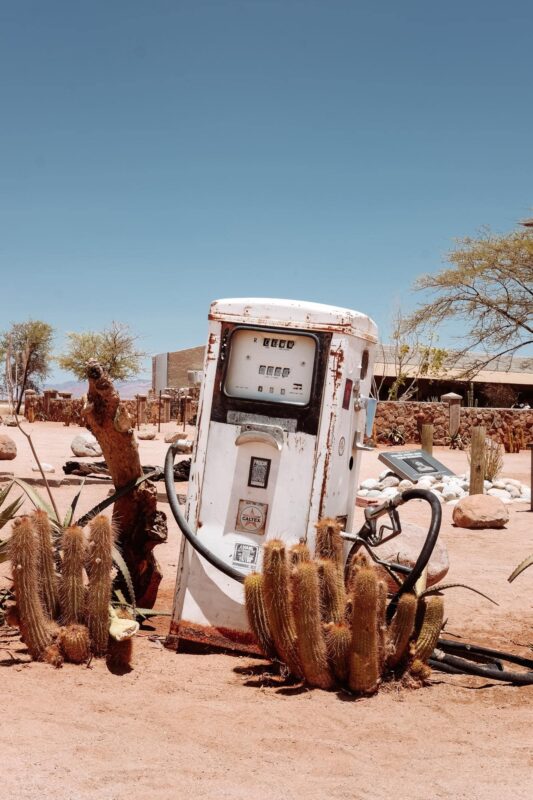
In Namibia, they use the Namibian Dollar for currency. You might not expect it, but you can use your debit card almost everywhere in Namibia. Often, even contactless payments work. However, it’s advisable to carry some cash just in case you encounter a situation where card payments are not accepted. If you’ve been to South Africa before and have some South African Rand left, bring it with you to Namibia because you can use it everywhere. This currency has the same exchange rate as the Namibian Dollar.
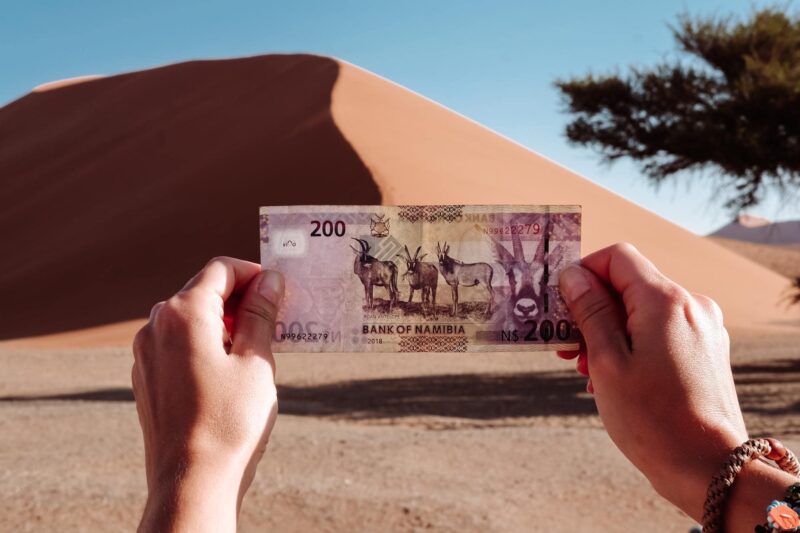
We have some tips to help you start your journey through Namibia on the right foot. Upon arrival at Windhoek Airport, you’ll see an MTC store. Here, you can buy a local SIM card at an affordable price, which includes some minutes, text messages, and most importantly, internet. This is especially useful for when you encounter car trouble and need to make a call, but also for various other moments when internet can be handy on the road. To withdraw local currency, it’s better to use an ATM in the city rather than at the airport since the airport charges a higher commission. LEFA is the local Uber in Namibia. Download the app in advance to quickly and safely order a taxi in Windhoek.
Restaurant recommendations in Windhoek: If you want to dine at a cozy, informal restaurant, Joe’s Beerhouse is the place to go in Windhoek. If you prefer something fancier, be sure to visit The Stellenbosch Wine Bar and Bistro. You’ll dine on a beautiful patio, enjoying delicious dishes and wines. It’s necessary to make a reservation in advance.
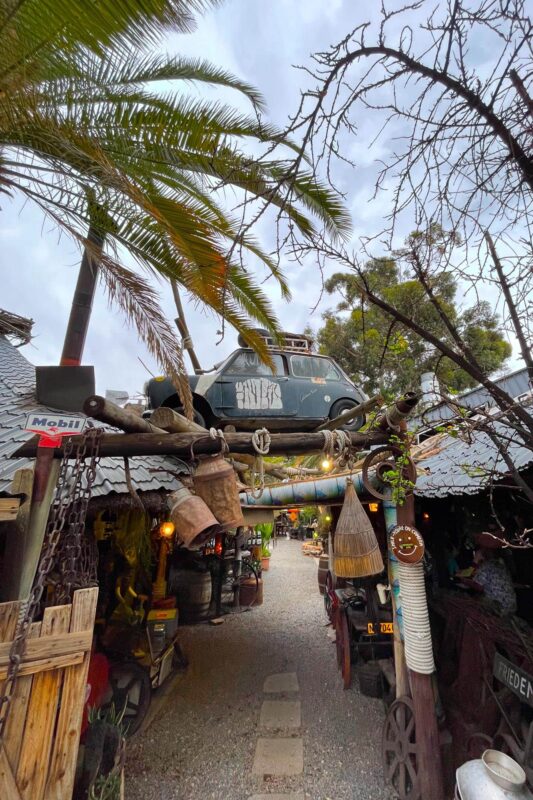
In Namibia, it’s customary to always greet with “Hey, how are you?” Whether you’re at the cashier in a supermarket or showing a ticket at the entrance of a tourist attraction, everyone will ask how you’re doing. Asking how someone is doing is a significant part of the greeting, and you’ll quickly find that it becomes second nature.
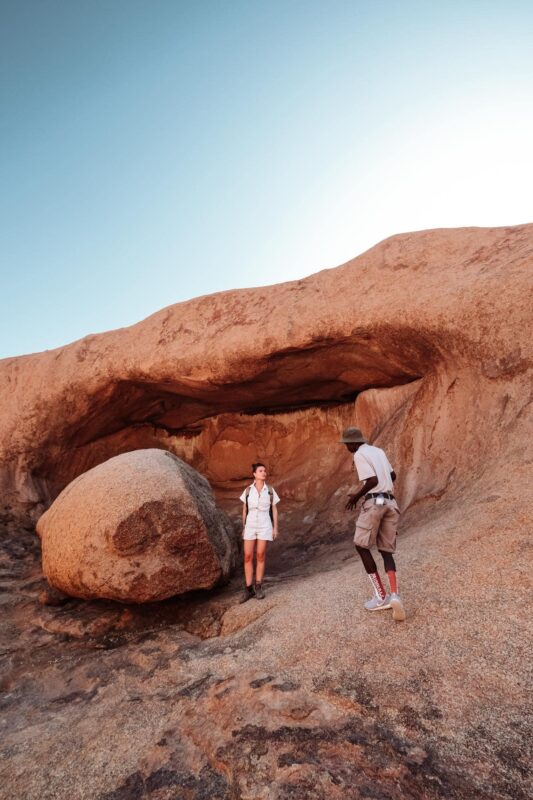
In Namibia, they have different types of electrical outlets, so you’ll need a type M travel plug. Keep in mind that most universal world adapters do not have a type M connection. Some hotels may have standard travel plugs available, but it’s good to have your own, just in case the hotel hasn’t considered this.
Tip: Bring a power strip with you to Namibia so you only need one type M travel plug and can charge multiple devices simultaneously.
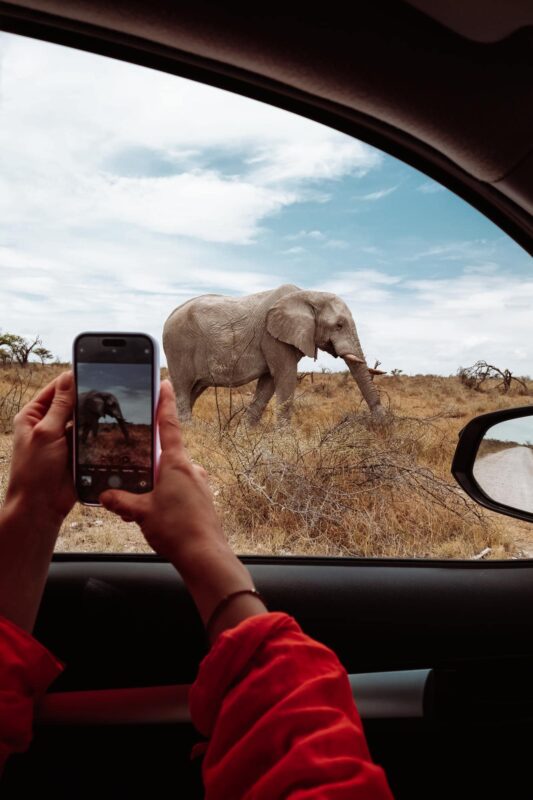
#10 Must do: Traveling with a 4×4 and Roof Tent in Namibia
Namibia is the perfect camping destination due to its many unique campsites. You sleep in the most extraordinary places, right in the African wilderness. Just before you crawl into your tent, you’ll enjoy the clearest starry sky. As the sun rises, the sky turns beautiful shades of red and yellow, and the enjoyment starts all over again. We booked our trip with Namibia Nomads and can highly recommend it to anyone who wants to go camping in Namibia. The car, roof tent, and almost all the necessities are provided, so you can start your road trip without worries. You’ll receive a roadbook with useful tips and discover the most beautiful places in the country. Read about our experience with Namibia Nomads .
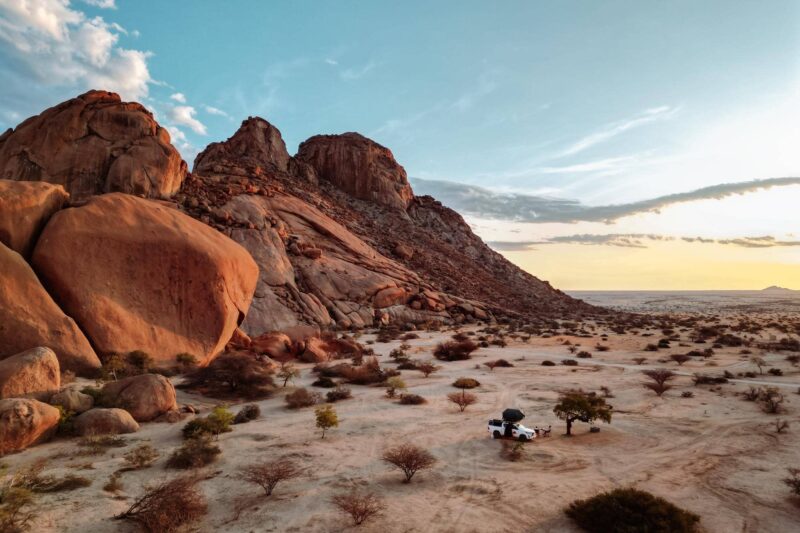
Namibia is indeed a perfect country to hop in a car and embark on an exciting road trip. In less than two weeks, you’ll get to experience the diversity of Namibia. You’ll drive past rugged mountain landscapes, endless deserts, and vast plains. Check out our travel itinerary for Namibia and learn all about the various destinations and highlights of this extraordinary country.
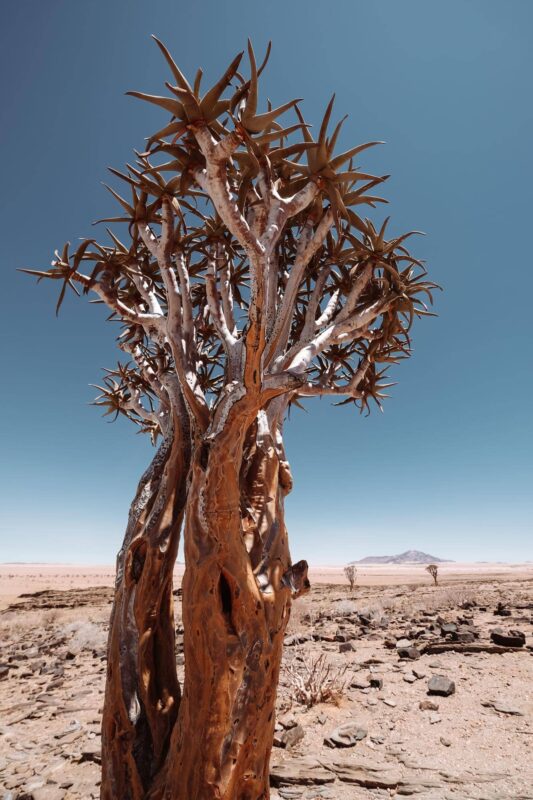
More on Namibia ?
Discover all our articles with tips, itineraries and things to do in Namibia.

About the author
Hi! We are Greg & Irene Two seasoned travelers who are crazy about adventurous journeys. Equipped with a camera and drone, we have been collecting the best travel tips for destinations from all over the world since 2014, and compiling them into useful articles. This way, planning your trip becomes a bit easier and more enjoyable.
What's next
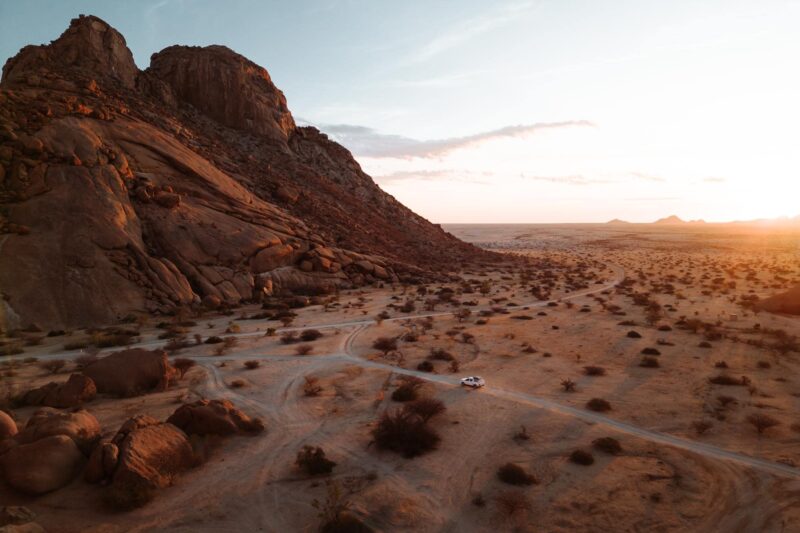
More Travel Inspiration
Start typing and press enter to search.

Namibia Travel Guide
Looking to plan the perfect trip to Namibia ?
Then you’re in the right place!
Namibia is a country in Southern Africa that is known for being one of the most sparsely populated countries in the world, with a population density of just eight people per square mile.
Along with safaris in destinations like Etosha National Park, Namibia is full of adventures like sandboarding in the desert , visiting Fish River Canyon, and hitting the beach in Swakopmund .
Keep reading to dive into a Namibia travel guide that will help you plan an incredible trip.
Note: This guide to Namibia travel contains affiliate links to trusted partners!

Namibia Map
Use this Namibia travel map to begin planning your trip!
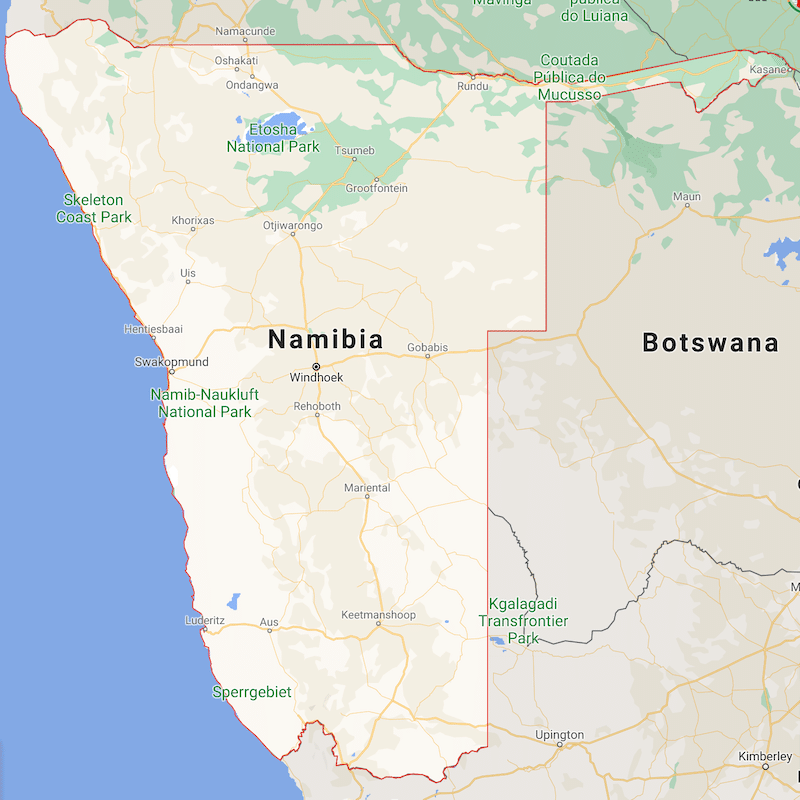
Click here for an interactive version of the above map.
Namibia Travel Guides
Looking for a great Namibia travel itinerary? Here you go!
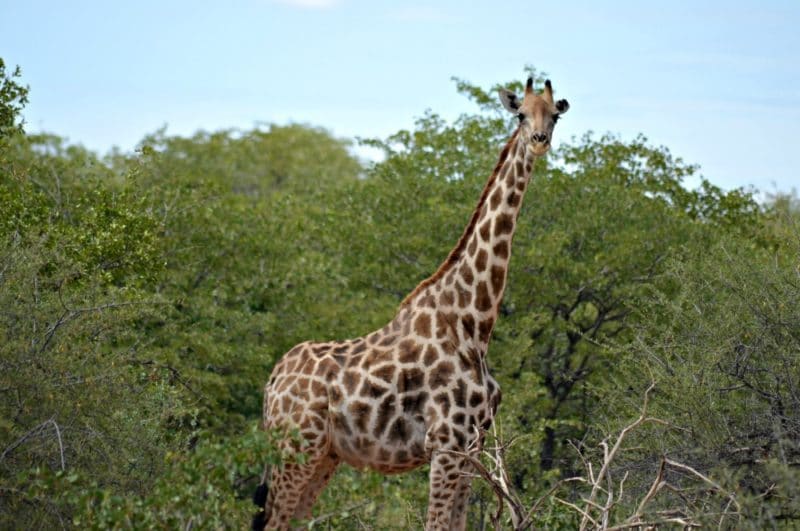
13 Highlights From A Trip To Namibia (Beyond Safari)
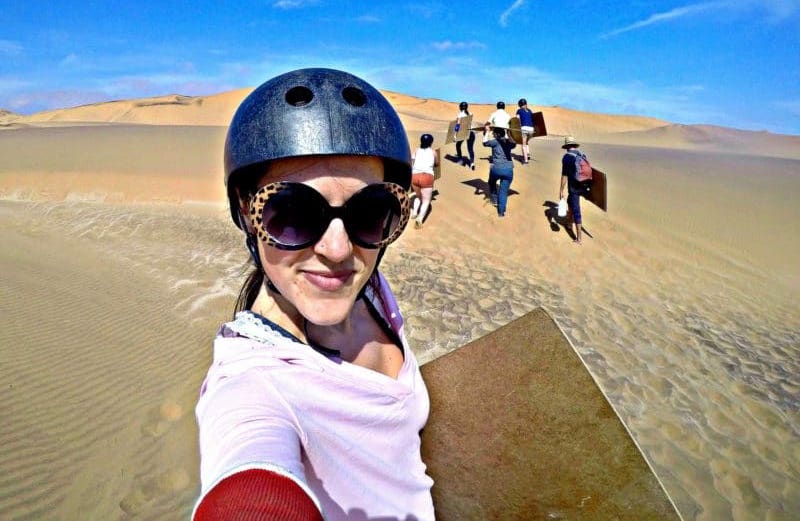
Namibia Adventure: Sandboarding In The World’s Oldest Desert

A Creepy But Beautiful Namibia Road Trip Along The Skeleton Coast
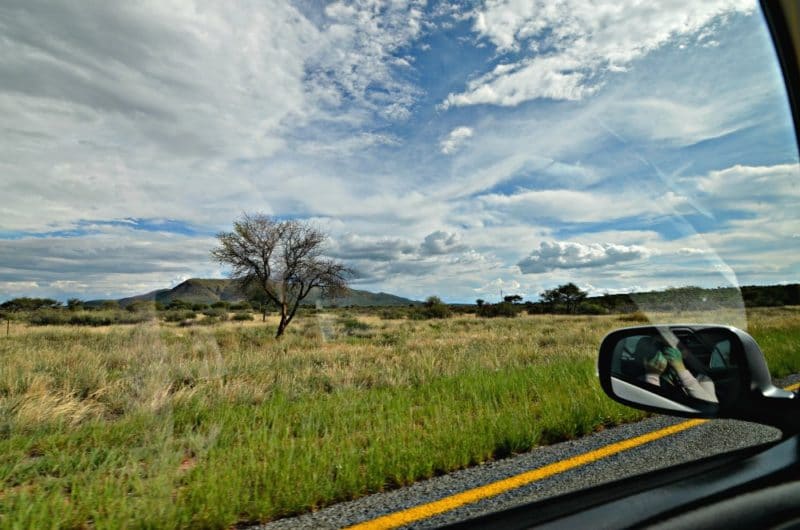
A Fascinating Journey From Windhoek To Swakopmund
Namibia Travel Advice
These Namibia travel tips will help you plan the perfect trip.
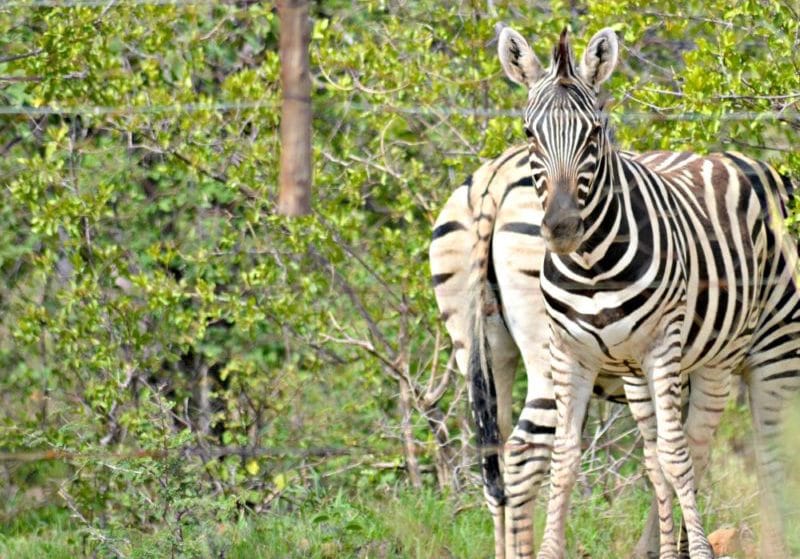
Africa Advice: 9 Essential Namibia Travel Tips
Namibia Travel Insurance
It doesn’t matter if you’re traveling solo or with a group on an Namibia tour. When visiting Namibia — or anywhere else in the world — make sure to get travel insurance.
In my opinion, the best travel medical insurance for travelers is SafetyWing as they’ve got a large network and offer both short-term and long-term coverage — including coverage if you’re traveling for months as well as limited coverage in your home country).
Additionally, SafetyWing is budget-friendly and offers $250,000 worth of coverage with just one low overall deductible of $250.
With coverage, you’ll have peace of mind as you embark on your Namibia itinerary.
Click my referral link here to price out travel insurance for your trip in just a few clicks .
Namibia Hotels
Click here to browse hotels in Namibia!
Prefer self-contained stays?
Click here to check out unique local rentals!
You can also use this map to search for local stays:
Renting A Car In Namibia
Need a rental car for your Namibia trip?
Use Discover Cars to quickly compare your car rental options.
Namibia Travel Guide FAQ
Below, find answers to frequently asked questions about traveling Namibia, Africa.
Q: Which countries need a visa to visit Namibia?
Citizens from many countries, including the United States, the United Kingdom, and Canada can visit Namibia visa-free. Citizens from other countries may be eligible for a visa on arrival in Namibia.
It’s recommended to view your country’s Namibia International Travel Information page for the most up-to-date information on entry and exit requirements — including visa information — for foreign citizens. You can also contact the Embassy of the Republic of Namibia.
Q: What are the top tourist attractions in Namibia?
Some of the most popular tourist attractions in Namibia are:
- Etosha National Park
- Sandboarding in Swakopmund
- Sossusvlei sand dunes
- The Skeleton Coast
- Spitzkoppe granite peaks
Q: How safe is it to travel in Namibia?
Namibia is an overall safe country to visit. Non-violent crime such as theft is something to be aware of, especially in the capital city of Windhoek.
One of the biggest safety threats in Namibia is dangerous roads. Driving at night is never recommended, due to poor visibility and animal crossings.
While most roads are well-maintained, secondary roads can be poorly maintained and hazardous.
Q: What is there to do in Swakopmund, Namibia?
There are so many things to do in Swakopmund ! Located in western Namibia, you can enjoy desert adventures, delicious German food, beautiful beaches and water sports, and more.
Q: Is it possible to drive from Namibia to Victoria Falls?
Driving from Namibia to Victoria Falls is possible, although from the capital Windhoek to the falls, it’s a distance of close to 900 miles (a 14.5 hour drive.)
Q: What is the best time of year to go to Namibia?
The best time to visit Namibia is from July to October. Temperatures are pleasant, and the chance for rain is low.
This is also the best time of year for wildlife encounters, making it the most popular time to visit Namibia.
Q: Do you need malaria pills for Namibia?
There are certain towns and places in Namibia where malaria pills are recommended, though it is best to speak with your doctor before embarking on your trip.
Additionally, it’s wise to always get travel insurance in case you get sick while traveling or something else unexpected occurs.
What information about the country would you add to this Namibia travel guide?

- Travel Tips Namibia for planning and on the go
Book your individual trip , stress-free with local travel experts
- roughguides.com
- travel-advice
- Travel guide
- Itineraries
- Local Experts
- Travel Advice
- Accommodation
Plan your tailor-made trip with a local expert
Book securely with money-back guarantee
Travel stress-free with local assistance and 24/7 support
More travel information for Namibia
From travel safety to visa requirements, discover the best tips for traveling to Namibia
- Eating and drinking in Namibia
- Getting around Namibia: Transportation Tips
- Going on safari
- Sports and Outdoor activities in Namibia
- How to get to Namibia
- Travel Health Namibia
Crime and personal safety
Namibia is an extremely safe country to travel around, even on your own, though petty crime is on the increase in Windhoek and some of the larger towns. That said, being street-savvy goes a long way towards avoiding problems: not wearing expensive jewellery or watches, not opening your bag or wallet to get cash out in a public place, and always making sure your car is locked, the windows are closed, and your belongings are out of sight when you stop in towns or at petrol stations. If you have to leave your car for a time, and there is no guarded, secure car park available, it pays to park in front of a shop or bank, where there will be a security guard whom you can ask (and tip on your return) to keep an eye on your vehicle. Remember, if you do get robbed, you will need a police report to complete an insurance claim once you get home.
Travelling with children
Volunteering, tailor-made travel itineraries for namibia, created by local experts.
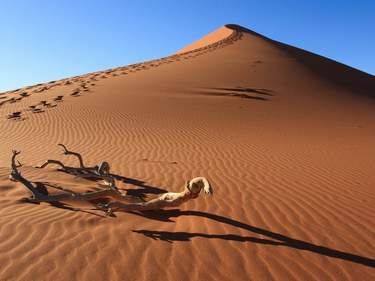
10 days / from 2600 USD
Ultimate Self Drive in Namibia
Explore Namibia on this epic, 10-day self drive trip. Highlights include the Namib, an ancient desert with towering dunes, dramatic mountains and colonial architecture at the waterfront. Additionally, you will visit the Himba people, discover Etosha National Park and more.

14 days / from 6555 USD
Epic Gondwana Adventure: Deserts, Ocean and Wilderness
Experience the best Namibia has to offer with a trip across the country, from the Kalahari to the Namib, the coast to Damaraland, ending off with an unforgettable time in the wildlife-mecca that is Etosha National Park.

8 days / from 16575 USD
Wilderness Safaris by Flight
Take convenient flights to explore the country's remote deserts, luxury lodges, safari camps, and iconic sights, from Sossusvlei's immense dunes to the rugged landscapes of Damaraland and the remote beauty of Kaokoveld.
Culture and etiquette
Greetings are key to ensuring good social relations in Namibia, as in many parts of Africa. Before you ask a question or a favour, you should always make sure you greet the person and enquire after their health. If you can manage that in the relevant local language, then so much the better. Handshakes are the most common form of greeting, especially among men, and always with the right hand. Men will often use the three-part African handshake when greeting other men. Women are more likely to greet each other and men with words, though they may shake hands. If in a more traditional rural setting, a small nod, bow or curtsy may be given by the junior to acknowledge seniority.
Modest dress is also important, especially when visiting rural areas, which are generally dominated by Christian conservatism. In the extreme heat it may be tempting to strip off to the bare essentials, but notwithstanding the risk of sunburn, short, skimpy attire is fine for the beach but can give offence in villages. Generally, men wear long trousers and shirts and women wear something that covers their shoulders and knees.
While on the subject of village life, if offered something to drink or eat , you should always accept the offer. When eating with your hands, often the case in rural communities, you should eat with your right hand even if left-handed, as the left hand is considered unclean.
Photography is a thorny area, which has been badly handled by many tourists over a number of years, especially with regards to the Himba, Herero and the San, where taking photos tends to dominate interactions to a worrying extent. The crass behaviour of some tourists who snap away without permission of the individuals concerned and with minimal interaction with them has led to difficult relations between some Namibian communities and tourists. Some Himba and Herero women in particular are now demanding payment for having their photo taken. Always ask permission if you wish to take a photo, and only after you have spent time in meaningful interaction with the person or people concerned.
Electricity
Electricity is 220 volts in Namibia, and large three-pin round plugs are used, as in South Africa. You’re advised to bring an adaptor with you; for sale in Johannesburg airport and in Windhoek, but hard to come by elsewhere in Namibia.
Full insurance for flights, medical emergencies and personal possessions is highly recommended. Make sure it covers any adventure sports you might want to do. If you intend to rent a car, you might also consider taking out a standalone car rental excess insurance policy, since this can work out cheaper than the additional fees charged by car rental firms to reduce the excess payable in case of accident.
Finding somewhere to access the internet will seldom be a problem in Namibia, even in quite remote areas, though in many parts of the country connections are often slow and the service is unreliable. A few internet cafés exist in Windhoek and Swakopmund and many hotels and hostels across the country have a PC or two available for guest use. However, in most accommodation, as well as in shopping malls and cafés, wi-fi is a more common means of getting online. In lodges, wi-fi is usually confined to the main building, and – understandably – the signal strength is usually fairly weak.
For unlimited Wi-Fi on the go whilst travelling Namibia, buy a Skyroam Solis , which works in 130+ countries at one flat daily rate, paid for on a pay-as-you-go basis. You can connect up to five devices at once. Prices start from as little as €5 a day.
In Windhoek and the larger towns you’ll find launderettes and dry cleaners. In addition, most hotels, lodges and guesthouses offer a laundry service, though this is obviously more expensive.
LGBTI travellers
Sodomy rather than homosexuality is illegal in Namibia, though the Namibian government tends to interpret this as meaning that homosexuality is illegal. Moreover, its attitude towards LBGTI rights is generally one of intolerance. That said, LGBTI travellers can enjoy a hassle-free holiday in Namibia provided they are discreet about their sexuality. What’s more, there are two gay-owned and LBGTI-friendly tour companies in Namibia, as well as lodge owners who are happy to facilitate bookings. Contact New African Frontiers in Windhoek or JJ Tours in Kamanjab for advice.
A range of maps , updated every few years, is widely available in specialist map shops and online in Europe and the US. The bookshops in Windhoek and Swakopmund also stock a selection. The Namibian Tourist Board and most tour operators can supply you with the annually updated Roads Authority Map of Namibia , which also has details of many campgrounds, but is not very useful. Better quality, however, is the Reise Know-How map, which is easy to read, includes almost all lodges, guestfarms and registered campgrounds, community or private, as well as marking petrol stations. This map alone is adequate for most self-drive visitors. If you’re intending to go off the beaten track, on the other hand, then the downloadable Tracks4Africa GPS map – which only works for Garmin GPS – and their new paper map should be high on your shopping list. You can download in advance or purchase the software in Namibia at somewhere like Radio Electronic.
There is generally a high level of press freedom in Namibia, particularly in the print media. The country’s top newspaper , both in quality and circulation, is the mainly English-language (with some content in Oshiwambo) daily The Namibian . The New Era is the state-owned daily paper. Several other dailies exist, including ones in Afrikaans and German, as well as several weekly papers and monthly magazines. There are over twenty private and community-owned radio stations , as well as the ten channels in different languages operated by the government-owned Namibian Broadcasting Corporation (NBC). Many guesthouses, hotels and lodges pay for the DStv satellite package, which is based in South Africa, and predominantly offers a diet of South African and US channels.
The Namibian dollar (N$), often abbreviated to “Nam dollar” in common parlance, has been the official currency since 1993. Coins are produced for 5, 10 and 50 cents, and for 1, 5 and 10 Namibian dollars. Notes are available in denominations of N$10, 20, 50, 100 and 200. Until 2012, the notes exclusively featured Hendrik Witbooi. Then, in 2012, a series of more fraud-secure notes was introduced, featuring the post-independence president, Sam Nujoma, on the ten- and twenty-dollar bills.
To add to the currency confusion, prior to independence the South African Rand was the official currency, and since the Namibian dollar is still pegged to the Rand (1:1), it is still accepted as legal tender in the country. If you’re withdrawing money near the end of your trip, or travelling on elsewhere, it’s better to ask for South African Rands rather than Namibian dollars, as they’re easier to exchange in other countries.
It is relatively quick and painless to change money at a bank, except at the end of the month, when queues can be substantial. The main banks in Namibia are the South African Nedbank, Standard Bank and First National Bank (FNB), in addition to Namibia’s Bank Windhoek, which has 53 branches countrywide. Banking hours are usually Monday to Friday 8.30am–3.30pm, Saturday 8.30am–noon.
Credit and debit cards are widely used to pay for goods and services in Windhoek and the major towns, especially Visa and MasterCard. American Express is less readily accepted. Credit cards are also generally accepted for mid- and high-end accommodation payments. Nearly all petrol stations, however, only accept cash, though this is beginning to change. Thankfully, petrol stations often have an ATM on the premises.
ATMs , though also widespread in the more remote areas, are sometimes out of order or run out of cash, especially at the end of the month or before public holidays. The daily withdrawal limit is usually N$1500–2000. For larger sums you can withdraw cash against a credit card in a bank on presentation of your passport. In the more rural areas, you will need cash; make sure that you carry some of the smaller denominations. Travellers’ cheques are gradually being phased out, but can still be exchanged for cash at a bank.
Police emergency
Namibian tourist protection unit.
061 2092002
Since mobile phones are increasingly more popular than landlines – and indeed the only form of communication in many rural areas – you may want to bring your mobile phone and purchase a Namibian SIM card on arrival. These are available at the international airport and at various locations on Independence Avenue in Windhoek, and you can buy credit with pay-as-you-go cards. Old unlocked mobile phones work best if you just want phone, rather than internet, connectivity. If your phone is locked, you will need to pay a standard charge to have it unlocked, a process that usually takes 24 hours. The mobile provider with the greatest coverage is MTC; check the MTC website for the various packages on offer for smartphones. However, since in many remote areas there is no coverage at all, you might want to rent a satellite phone, which can be done at Be Local , or through your car-rental agency, with advance notice. Skype is also possible, though the slow wi-fi in many places can make it difficult.
To call Namibia from abroad , dial the international access code for the country you’re in, followed by the country code 264. Note that mobile phone numbers in Namibia are ten digits, beginning with 081.
Across the country, there are over 130 post offices , run by Nampost. Their smart, modern exteriors belie a somewhat less than efficient service: while fairly reliable for non-valuable objects, the system is fairly slow. Hours are generally Monday to Friday 8am–4.30pm, Saturday 8am–noon. Both Fedex and DHL have offices in Windhoek, Swakopmund, Walvis Bay and Lüderitz.
Shopping for most visitors to Namibia revolves around crafts and curios . The main area of production is in the north, so if you are travelling to the Kunene, Kavango and Zambezi regions you might want to wait until then to buy, especially since more of the money is likely to go to the artisan. Note that a number of shops sell crafts imported from South Africa and elsewhere; the ubiquitous Namcrafts, for example, which has several outlets in the capital, has “Namcraft” labels on all its products, though they are not necessarily from Namibia. So if the origin is important to you, make sure you make thorough enquiries before making a purchase.
There is no shortage of places to look for crafts, both in the street, where you can bargain, and in shops, where you can’t. The main craft shops are to be found in Windhoek and Swakopmund and there are two large craft markets in Okahandja. The selections, however, are often quite samey: soapstone figures and wooden carvings, particularly of animals; jewellery made from seeds, beads and shell; and batik cloth and cushion covers, again with animal designs aplenty. Namibia is also renowned for its semi-precious stones and crystals but you’ll not find many bargains. Still, the Kristall Galerie in Swakopmund is a good places to garner information, or, if you want to make sure the money is benefiting the local community, try one of the Spitzkoppe roadside stalls, selling uncut gemstones.
Namibia is normally GMT+2hr, but from the first Sunday in April to the first Sunday in September Namibia is GMT+1, known as Daylight Saving Time (DST).
Tipping is always a tricky issue, and the best advice is to ask locally. There is no culture of automatic tipping in restaurants , although for formal establishments 10 percent of the total bill is the norm if the service is decent. For porters at airports or hotels expect to pay N$5 per bag. Similarly, N$5–10 would suffice for the petrol pump attendant who fills your vehicle if they clean your windows, check oil, tyres etc, and for anyone you ask to watch over your car for a few hours while you’re parked in town.
If staying in a lodge for several days, only tip at the end – seek advice once there about what constitutes a fair tip; it will depend to an extent on whether the camp/lodge is budget or high-end and how many people are attached to one guide. Generally, it should not be more than US$10/day per person in a small group. Enquire also about whether there are communal tip boxes for the behind-the-scenes staff, many of whom get paid far less than the more high-profile guide. Many lodges pay very low wages and presume that tips will make up the shortfall. The only way to exert pressure and change this kind of behaviour is to complain to the management and/or give feedback online. That said, many tourists want to tip their guide if they have been particularly helpful and informative.
Bear in mind also that overtipping is not helpful: it sets a precedent that other travellers may not be able to live up to; it can create professional jealousy among workers; and it can upset the micro-economy, especially in poor, rural communities.
Tourist information
At the time of writing, the Windhoek tourist office was operating out of a portacabin on Independence Avenue, in Windhoek, but was due to relocate to new premises in the new Freedom Plaza. It can provide you with basic information about Windhoek and tourist maps for other parts of the country. The national tourist board also operates a moderately useful website, though it is not the easiest site to navigate. In other towns, tourist information is provided privately, often by tour operators. Many hostels and guesthouses can help with information and make bookings too.
Travellers with disabilities
Travellers with visual, hearing or mobility impairment , including wheelchair users, and “senior travellers”, are well catered for by Endeavour Safaris , a company based in Botswana, offering a range of safaris in Namibia, Botswana and South Africa. UK company 2 by 2 Holidays specializes in holidays for wheelchair users and offers a wide variety of safaris to Namibia, ranging from 7 to 16 nights. Independent wheelchair travellers should note that many hotels and lodges, including NWR properties in the national parks, have wheelchair-adapted rooms and bathrooms. A list of wheelchair-accessible accommodation in Namibia’s major towns can be found on the website of Disabled Holidays , which also offers a Namibia holiday package.
Travelling with children is fairly easy in Namibia provided they are able to cope with many hours of travel between sights. Many lodgings offer discounts for children under 12, usually giving a 50 percent reduction for youngsters aged 6–12, with children under 6 staying free. Some of the smaller, more exclusive lodges that build their reputation on offering peace and tranquillity do not accept children under 12. Restaurants often have kids’ menus. When it comes to activities , there’s plenty to entertain kids, especially on the coast, from kayaking to sand-boarding. Children under a certain age (or height, when it comes to ballooning) are often discouraged from participating in some activities, but with parental consent and supervision this can also be waived.
If you’re travelling with a baby, then it obviously makes sense to carry it around in a papoose, rather than a pushchair, given the lack of pavements, or even paved roads outside the main streets of the principal towns, never mind the countryside. Babycare products, such as bottled baby food and disposable nappies, are available in the main towns, but bear in mind that when you’re camping in the bush, you’ll need to transport the used ones with you until you reach a place where they can be disposed of properly. Breastfeeding in public is socially acceptable in Namibia, though the prevalence of breastfeeding babies in Namibia has decreased in recent years on account of fears of mother-to-child HIV transmission.
Voluntourism is a growing industry, and becoming a preferred way of travelling for those who want to “make a difference”. Be aware that this can be fraught with pitfalls, both for the volunteer and – in the case of social development projects – the people being “helped”. A good place to start is Ethical Volunteering , which has a useful checklist about questions to ask before committing to an organization. Getting feedback from former volunteers is also helpful.
In Namibia, the focus is often on conservation , with volunteer programmes concerning cheetah, desert-adapted elephant or rhino conservation – sometimes involving scientific research – and at animal welfare sanctuaries. There is stiff competition for applicants for high-profile organizations such as the Cheetah Conservation Fund .
Generally, you have to pay for your flight to Namibia, transport to and from the location and board and lodging once there; conversely, if volunteering on a guestfarm or on a private reserve, you might have your board and lodging paid for in return for services. In this case, you need to be assured that you will not be exploited in terms of working hours and time off, nor that you are taking the job a paid local Namibian could be doing if the owner were only willing to spend the money.
Almost invariably, the volunteer gets more out of the experience than the people they are there to help. If you are contemplating becoming involved in community development, consider whether you have the appropriate skills for the job; what Namibia – like other African countries – does not need is unskilled labour constructing buildings or untrained teachers in schools. Also, if you really want to make a difference working with people, then you should think about committing to several months, at least, rather than several weeks, especially if the job involves interacting with vulnerable people, such as young children, for whom a constant relay of changing volunteers can be very disruptive. Several websites list volunteer projects in Namibia, which you should submit to scrutiny. They include: Go Overseas , which lists 25 programmes, some of which have been reviewed by former volunteers; the similarly entitled Go Abroad also provides reviews from former volunteers and advertises over thirty projects; even the Namibian Tourist Board has a webpage dedicated to voluntourism programmes.
The Rough Guides to Namibia and related travel guides
In-depth, easy-to-use travel guides filled with expert advice.
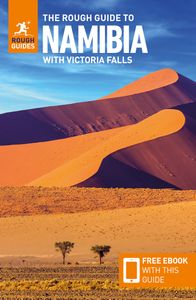
Travel advice for Namibia
Find even more inspiration here.

Ready to travel and discover Namibia?
Get support from our local experts for stress-free planning & worry-free travels.
- Where to stay
- Travel advice
10 ways to travel on a budget in Namibia

Oct 19, 2023 • 6 min read
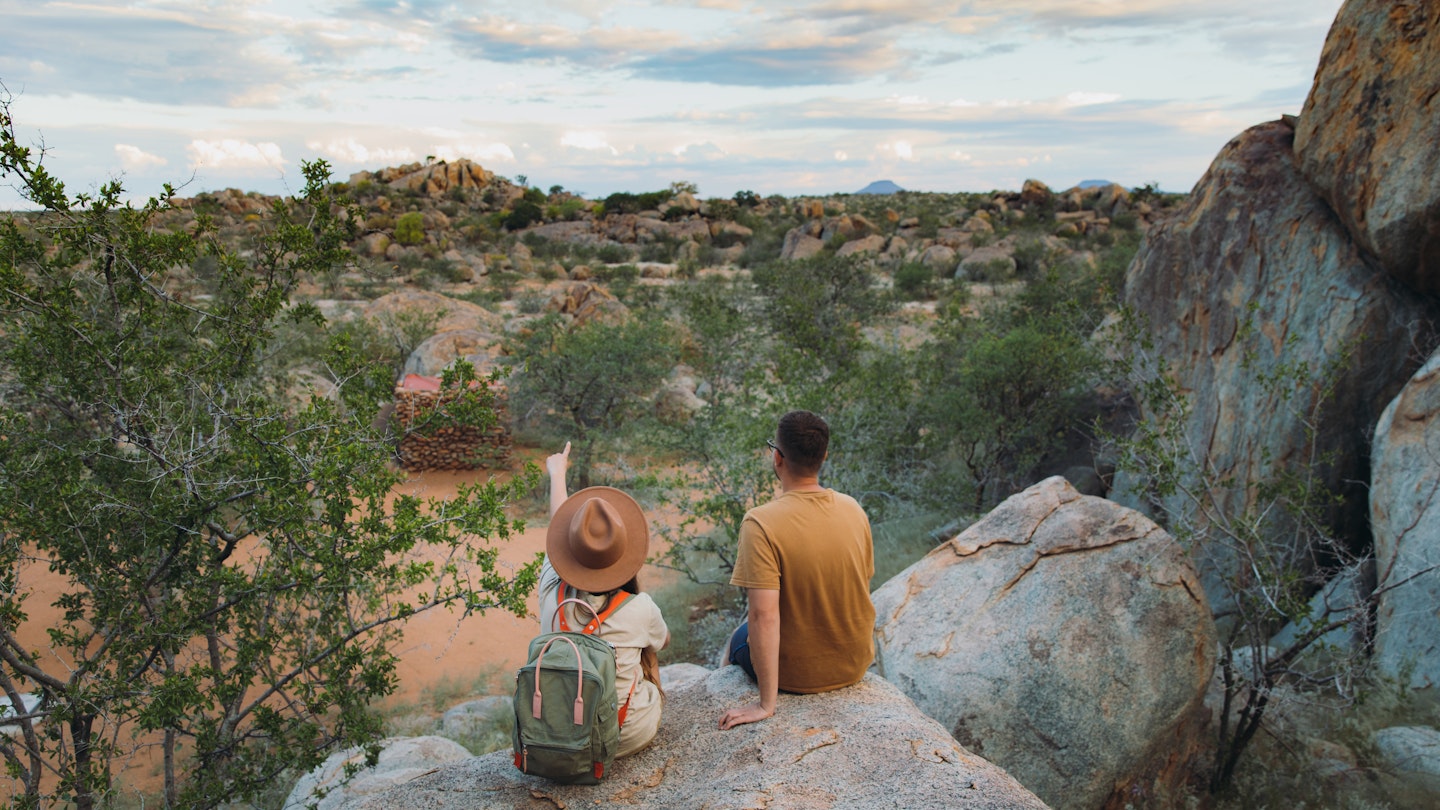
With this guide to daily costs, it is possible to tour Namibia on a budget © Anastasiia Shavshyna / Getty Images
Namibia has magnificent desert vistas, soaring dunes, a long, wild coastline and excellent tourism infrastructure.
Its good road network and multitude of well-outfitted camping sites make it ideal for independent travelers. However, distances are long, lodges are expensive and costs can quickly mount up. The biggest areas to save are transport and accommodation. Here are our top tips for creating an affordable Namibian adventure, along with a guide to daily costs.
Daily costs in Namibia
- Dorm bed in a backpacker’s hostel: from US$20
- Basic room for two: from US$50
- Managed campsite: US$150 per person
- Self-catering apartment (including Airbnb): from US$65
- Coffee: from US$1.50
- Lunch: from US$10
- Dinner for two: from US$30
- Beer at the bar: US$2
- Small packet of biltong: US$2
- 4WD rental vehicle including rooftop tent: from US$100 per day
Average daily cost: US$110–350
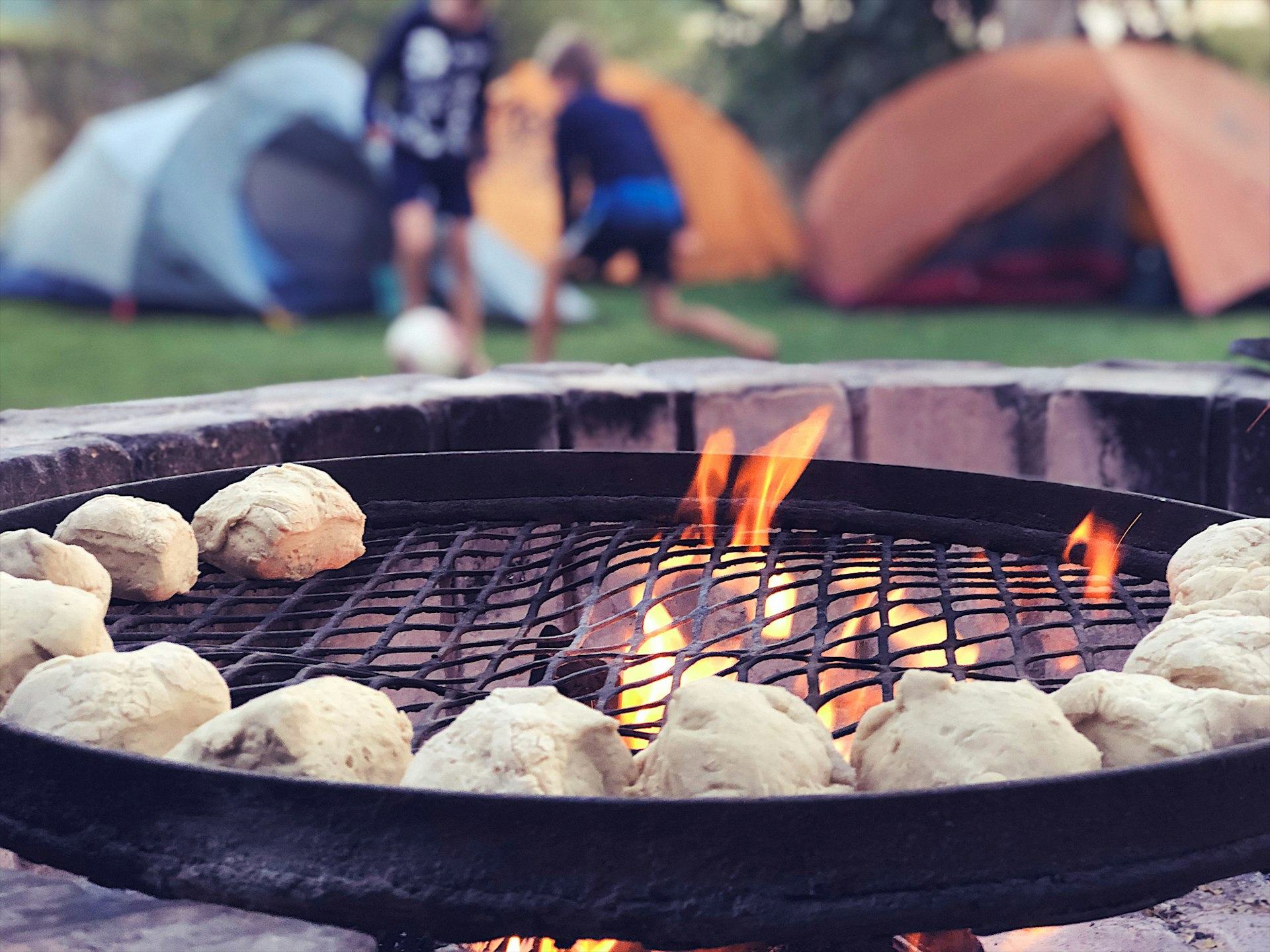
1. Fly to South Africa and take a bus to Namibia
Only a handful of airlines fly into Namibia. While good deals are sometimes available from Europe (Frankfurt, Germany is the Namibia hub), it often works out cheaper to fly into Johannesburg or Cape Town and then continue by bus or plane into Namibia. Intercape has a direct bus between Cape Town and Windhoek , and connecting service between Windhoek and Johannesburg, with prices starting about US$65 one way.
If you’re planning a regional itinerary, there are also buses between Johannesburg and Gaborone ( Botswana ), where a shuttle goes a few times weekly to Windhoek. Flying into Windhoek from either Cape Town or Johannesburg takes only two hours. If you book early enough, you can get tickets from US$150 one-way.
2. Travel during the low season
December through March marks the wet season in Namibia . Once the Christmas–New Year holidays are over, the crowds disappear and many accommodation and tour prices are reduced. Rates for lodge accommodation, in particular, can drop by up to 40% in comparison with in-season prices.
While the wetter months are not ideal for viewing large herds of wildlife, they are an excellent time for birding and seeing newborn animals. Green, wildflower-clad landscapes are another highlight, and you'll have many areas mostly to yourself. Summer rains are typically isolated and brief, mainly occurring in the form of heavy afternoon thunderstorms. By timing your excursions in the morning, you’ll still be able to get around and can relax and enjoy the welcome rain. The main exception to this is in the far north, where rains are heavier and some areas can become inaccessible.
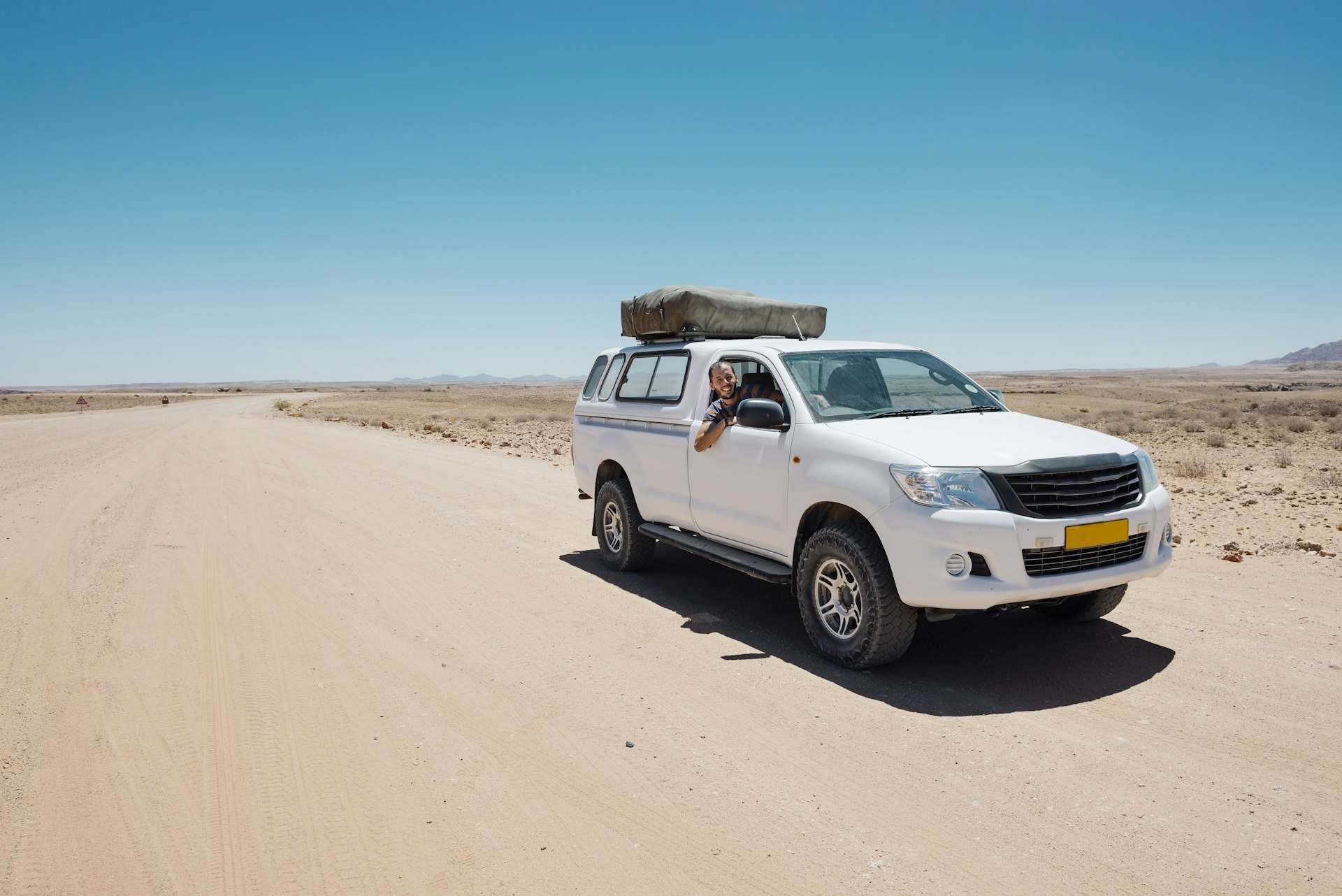
3. Self-drive your way around the country
If you’re traveling in a group, self-drive is a safe and economical alternative to a fully guided experience, and Namibia’s good road network makes it easy. A week-long scheduled group tour starts at around US$1,500 per person, while a 4-person 4WD vehicle outfitted for camping will cost from about US$650 for this same period plus the cost of fuel. Fuel costs are currently about US$1 per liter; plan on about US$50 per day or more, depending on your itinerary.
Namibia is easy to navigate and clearly signposted. Though only about 25% of the roadways are tar, the gravel roads are well-kept and generally more scenic – some are spectacular. Flat tires are the most common driver issue, so your vehicle will come with two spares. You'll want to make sure you know how to change one before your trip, and seriously consider the tire and windscreen insurance offered by rental companies.
4. If you’re traveling solo, try out Namibia's shuttle service
Born out of the COVID-19 pandemic and the global shortage of rental cars, the Gondwana Collection launched a shuttle service called Go2 Traveller Transfers . It stops at nine different areas of interest : the Kalahari, Fish River Canyon , Sossusvlei , Swakopmund , Etosha and Damaraland . At each designated stop, lodges will arrange for pick-ups and returns. At about US$45 per leg, the service offers travelers a reliable, affordable, safe, and more environmentally friendly alternative to self-driving.
The drawback is that you'll need to stay in lodges and tented camps and pay for their excursions. But with the rising cost of fuel and high demand for rental cars, this option may work out to be more affordable for solo travelers.
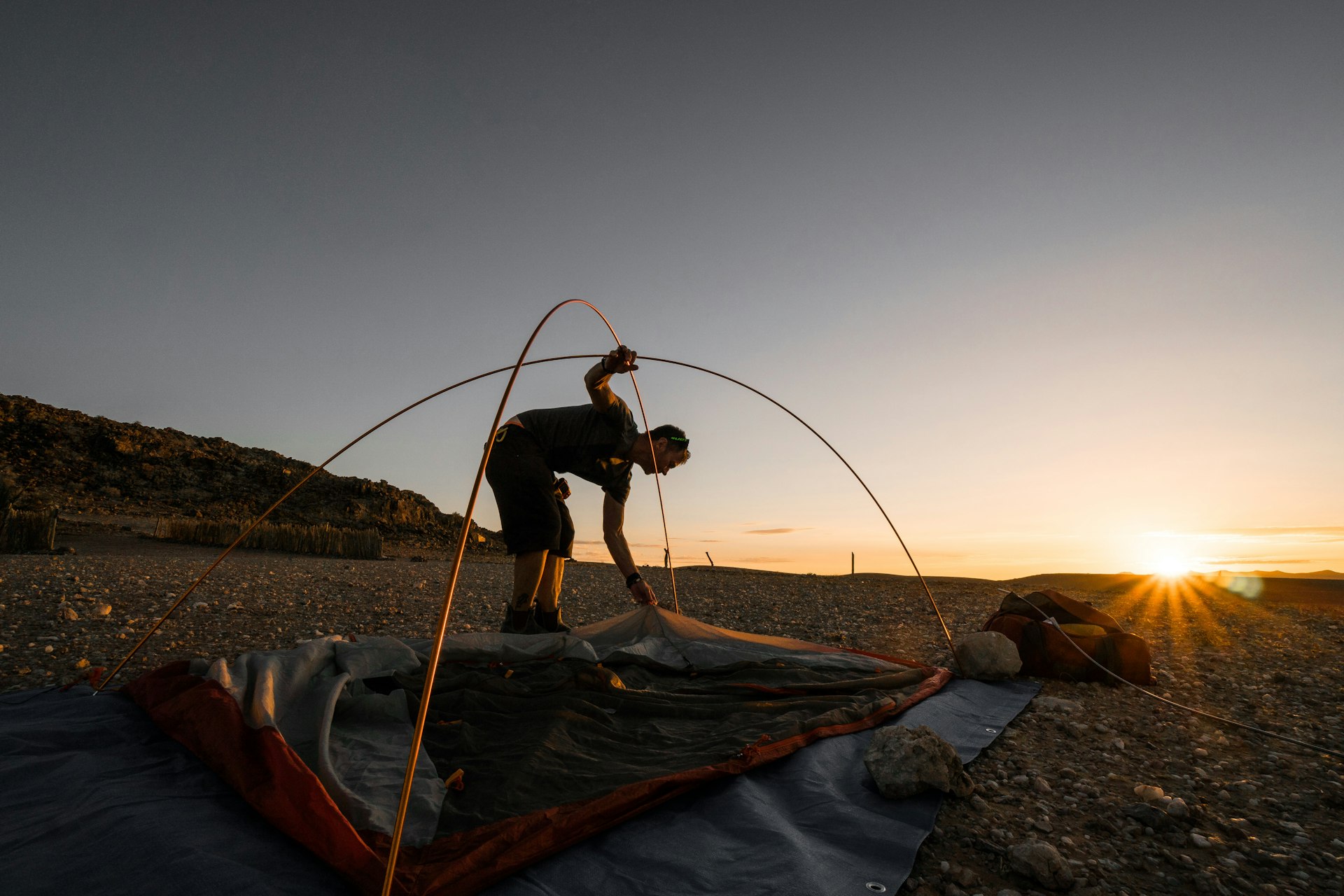
5. Join a scheduled camping tour
It’s also possible to join a scheduled guided camping program, such as those offered by Chameleon Safaris . Durations vary from three to 15 days and start at around US$500 per person. They typically include everything apart from drinks and water.
This is also a great option for solo travelers and those interested in meeting others and sharing experiences. Because the logistics are taken care of and food and fuel are included, you won’t be hit with surprise costs.
6. Stay at Namibia's vast network of campgrounds
Namibia has an abundance of organized campsites throughout the country, which are clean and affordable with good amenities. Not only will you save a ton on lodging, but it's also an excellent opportunity to meet like-minded people, exchange stories and travel tips and really get a feel for the country’s wild, empty spaces and clear night skies.
The average site costs US$30 (or US$10 per person) and has shared bathrooms, hot showers and fire pits with grills at each spot. Some camps even have shops selling food, water and other basic provisions.
7. Mix it up by staying in budget lodges and self-catering apartments
Budget lodges are plentiful in Namibia. They're located all across the country and are clean, some with refreshing pools, starting at just US$25 per night for a room with a shared bathroom. Self-catering apartments and homes average from US$65 per night for the entire place. These types of accommodations are ideal for spending a night or two between campsites. A nice hot shower and some air conditioning can help you reset and get ready for the next leg of your adventure.

8. Spend your days in Namibia’s affordable national parks
Namibia's national parks are exceptionally diverse: expansive sand dunes, vast deserts, plunging canyons, ancient salt pans and dramatic coastlines. While the country currently doesn’t offer a national park pass, entry fees are nominal. The government has added a small conservation fee to each park, bringing the total to about US$7 per person per day at most parks. Children aged eight and below enter parks for free.
9. Stock up on groceries at the beginning of your trip
Namibia's roads offer few opportunities to stop for a bite until you reach your destination, so it’s essential to shop for necessities like snacks and water before you head out. Some self-drive vehicles are equipped with a small refrigerator, allowing you to stock up and save on more than just the basics.
If you're camping or staying in an apartment, you'll have everything you need to prepare your own meal upon arrival instead of going to a restaurant in town, saving time and money. Braai (barbecue) facilities are everywhere, and sitting under the stars with dinner grilling nearby is a fabulous Namibian experience.
10. Take advantage of child and "pensioner" discounts
Children’s (generally 12 and under) and pensioners’ discounts (for those 60 years of age and older) are available almost everywhere in Namibia for accommodation and entry fees, so always ask if these categories apply to you. Some places also offer student discounts.
This article was first published Sep 21, 2022 and updated Oct 19, 2023.
Explore related stories
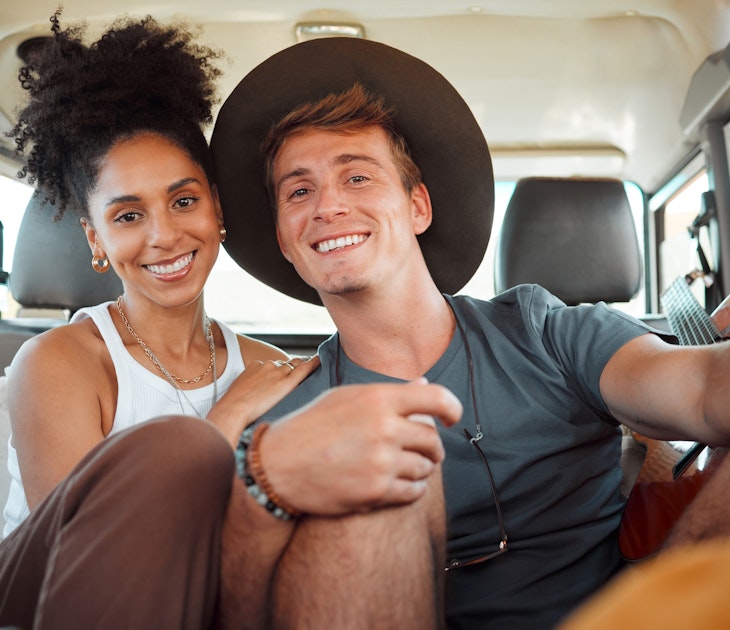
Budget Travel
Nov 30, 2023 • 9 min read
You don't have to break the bank to explore the incredible landscapes in Kenya – you just need our top tips to squeeze every penny out of your budget.
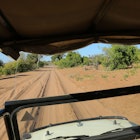
Oct 27, 2023 • 8 min read
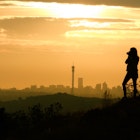
Sep 11, 2023 • 6 min read
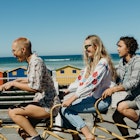
Apr 22, 2023 • 5 min read

Jan 29, 2020 • 9 min read
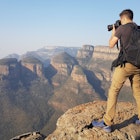
Mar 19, 2024 • 6 min read

Mar 10, 2024 • 5 min read

Feb 20, 2024 • 17 min read
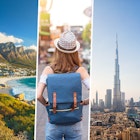
Jan 31, 2024 • 11 min read
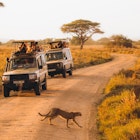
Dec 8, 2023 • 4 min read

Extraordinary Namibian stories.
Discover the wonders of the land of endless horizons with this travel guide to Namibia. From vital information needed to plan your trip, accommodation options, details on destinations across the country and inspiring travel ideas. Namibia is a one-of-a-kind tourism experience. From breathtaking landscapes and diverse wildlife to rich culture and history, Namibia offers something for everyone. Whether you’re seeking an exciting adventure or a peaceful retreat, This is Namibia provides all the information and resources you need to plan the ultimate Namibian vacation. Explore the country’s stunning deserts, savannas, and coastlines, and immerse yourself in the unique culture and heritage of the people who call this incredible place home. Start planning your journey to Namibia today and experience the magic for yourself.


PLAN YOUR TRIP
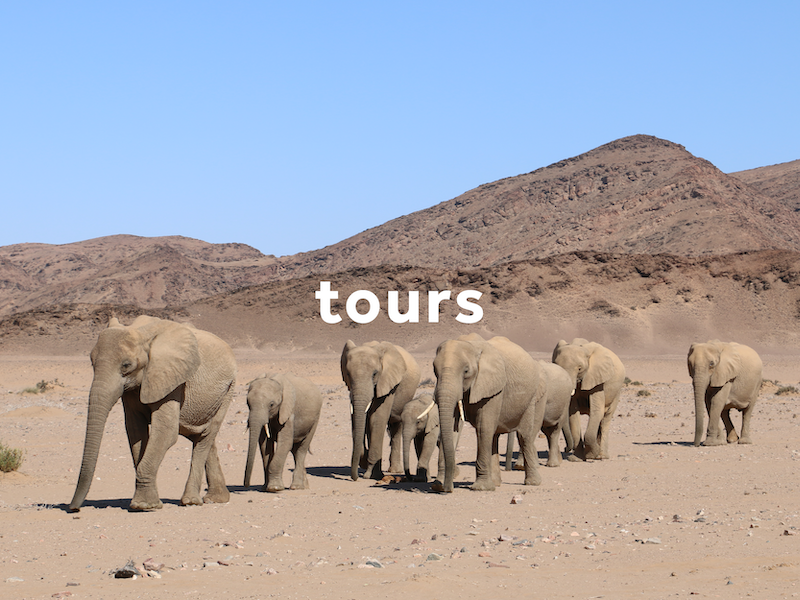
Places to go
Incredible destinations across namibia, things to do, adventure awaits in namibia.

MOUNTAIN BIKING

HORSEBACK RIDING
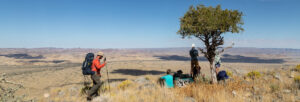
HIKING NAMIBIA
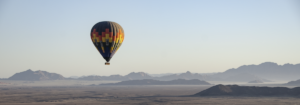
SKY ADVENTURES

DOWNLOAD OUR FREE TRAVEL GUIDE TO NAMIBIA
Or read it online.
Please note: Our site is currently undergoing some construction and should be complete soon.
Get Updates And Stay Connected Subscribe To Our Newsletter

Powered by Venture Media and in collaboration with travel news namibia
Sharing stories, information and inspiration with an audience that understands and values why tourism and conservation matters.

© Venture Media, 2022
*Disclaimer: This is Namibia is not the owner, operator or promoter of the listed products and services. Please visit the operator’s website for further information.
Local Recommendations from our My Guide Namibia team
Explore the world like locals.
- Experiences
My Guide to Namibia
What's on in namibia, experiences in namibia, car hire in namibia, accommodation in namibia, restaurants in namibia, safaris in namibia, hunting in namibia, things to do in namibia, wellness in namibia, transport in namibia, services in namibia, shopping in namibia, adventure in namibia, venues in namibia, nightlife in namibia, property in namibia, namibia travel guide, namibia regional info, namibia useful info.
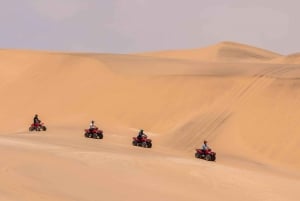
Swakopmund: Quad Biking in the Oldest Desert in the World
Experience the thrill of quad biking through the Namibian sand dunes.
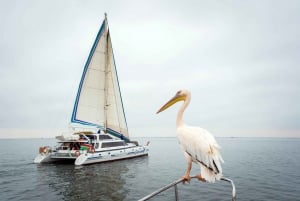
Walvis Bay: Marine Big 5 Luxury Catamaran Tour
Sail out on a catamaran and try to spot the ocean’s “Big 5”: whales, dolphins, mola mola, leatherback turtles and seals. Enjoy a relaxing morning at sea including refreshments and snacks.
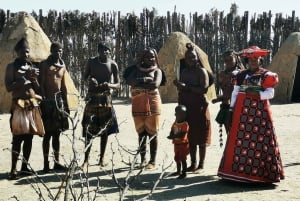
Walvis Bay: Mondesa Township Tour
Embark on an immersive tour of the Mondesa township and discover the unique culture, warmth, and friendliness of the locals. Travel around by bike and learn about the fascinating history of the township and its people, then cook traditional dishes.
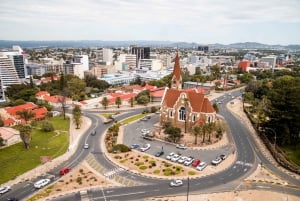
Windhoek: City and Township Tour
Join a guided tour of Windhoek and discover both sides of the city. View the historical highlights in Windhoek city, and get an overview of the Katutura Township.
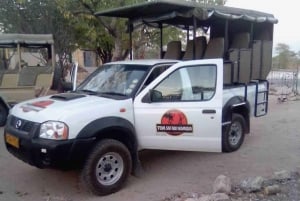

Etosha National Park: Full or Half-Day Game Drive
Experience the wildlife and scenery of this huge national park by an open vehicle on a classic safari tour - a paradise for any wildlife enthusiast. Try to catch a glimpse of elephants, lions, and other big game species native to Etosha National Park.
Recommended Experiences in Namibia
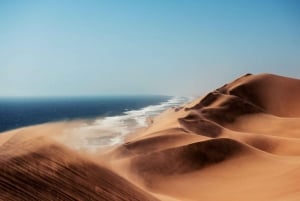
From Walvis Bay: Sandwich Harbour World Heritage Site
Depart Walvis Bay and travel on a 4x4 with your guide on a day of wildlife spotting and nature immersion. Travel through Namibia's richest wetlands, spot animals, enjoy a delicious lunch, and visit a RAMSAR site.
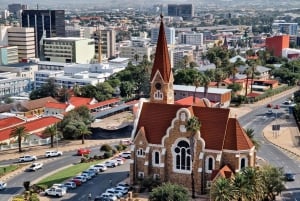
City Tour of Windhoek Namibia
A city tour of Windhoek invites you to explore its diverse tapestry, where colonial history meets contemporary vibrancy.
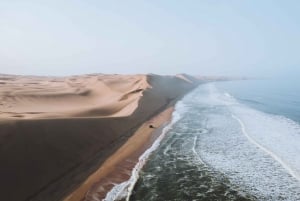
From Walvis Bay: Sandwich Harbor 4x4 Tour
Travel to a unique place where the desert meets the ocean on a guided 4x4 adventure from Walvis Bay. Explore an endless stretch of rolling sand dune landscapes at the magnificent Sandwich Harbor.
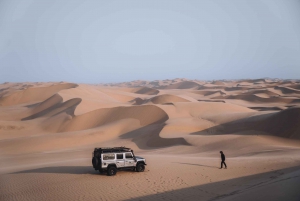
Walvis Bay: Sandwich Harbour and Pelican Point 4x4 Tour
Explore the dunes of Namib-Naukluft National Park's Sandwich Harbour and the deserted stretch of Pelican Point Peninsula on a 4x4 trip from Walvis Bay. See Donkey Bay, salt pans, and local wildlife.
Mini Guides
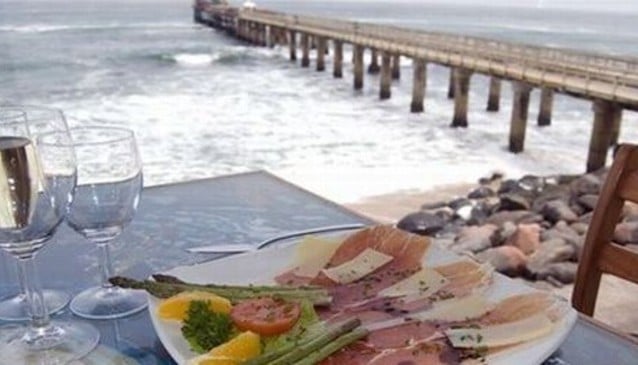
Namibia Restaurant Guide
Handpicked by a Local Expert

Best Safari Companies Namibia

Best Lodges in Namibia
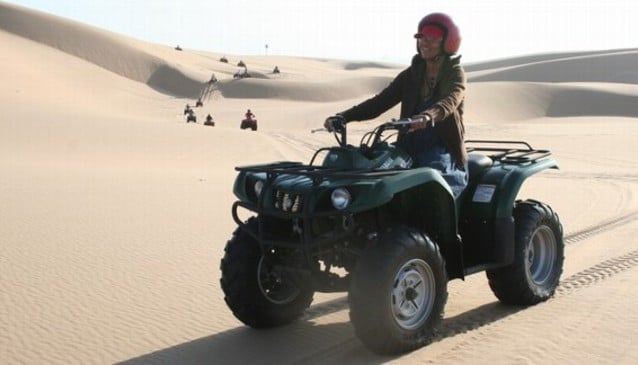
Best Things To Do in Namibia
Best restaurants in namibia.

Best Attractions in Namibia
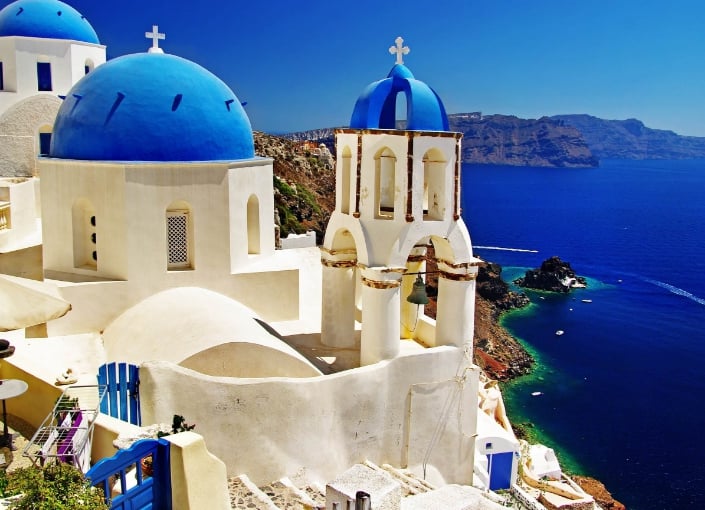
Best Travel Agents Namibia
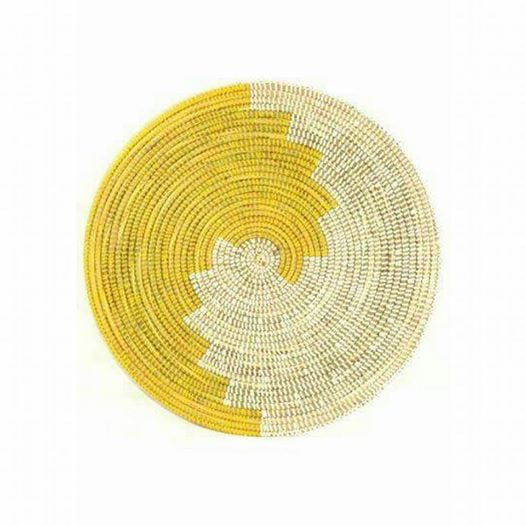
New Restaurants To Try
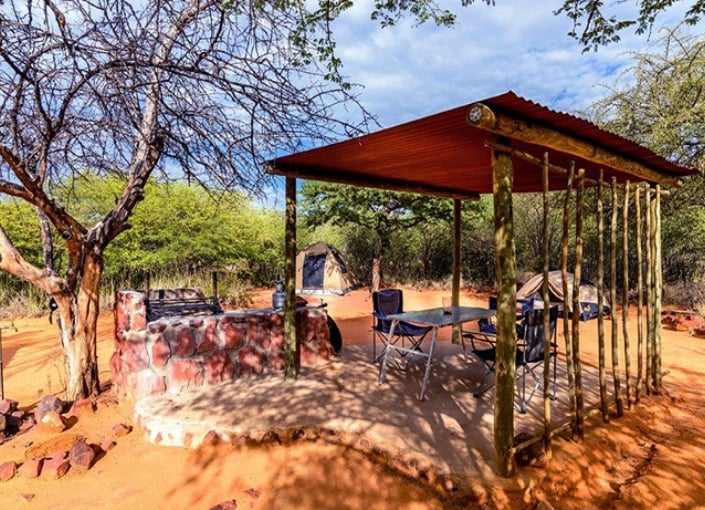
Create & Share your own Guide to Namibia with friends and family!
Add your recommended places to visit by browsing the website and pressing the icon.
Create your own guide of favourite 'must see' places
Earn your Local Expert badge by Sharing your guides with others
Get your guide seen by submitting it to the Mini Guides section
Local News & Articles
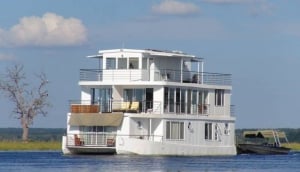
The Southern African Paradise...
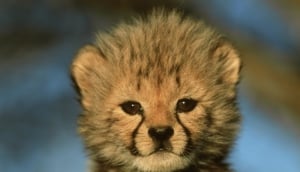
The Cheetah
Cheetahs in Namibia...
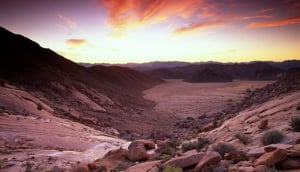
Ai-Ais Richtersveld Transfrontier Park
More than just a Fish River Canyon experience...
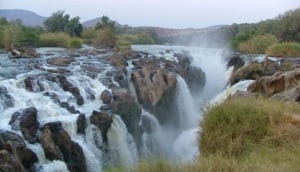
Epupa Falls
Namibia's own mini Victoria Falls...
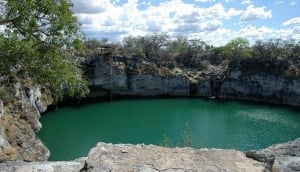
Lake otjikoto
Lake of mysteries...
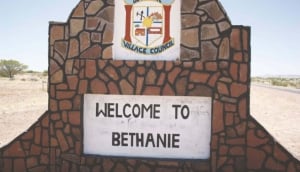
Namibia's oldest settlement...
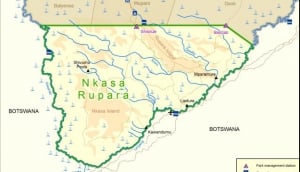
Nkasa Rupara National Park
Former Mamili National Park...
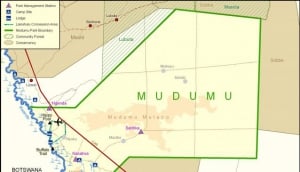
Mudumu National Park
A world of wonder...
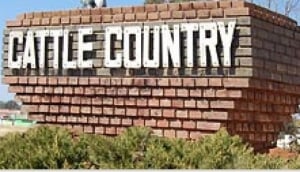
Namibia's little Texas...
Regional Guides
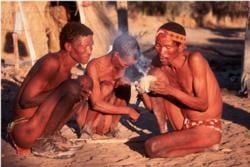
Bushmanland Area
Bushmanland is a vast and sparsely populated area located in the north eastern parts of Namibia, underneath the Caprivi Strip. Although not as lush as the more northern parts, the area does not lack i...

Caprivi Wetlands Area
The oddly shaped Caprivi Strip, previously known as Itenge, was so named after German Chancellor Leo von Caprivi who negotiated the acquisition of the land from the United Kingdom in 1890. The purpose...
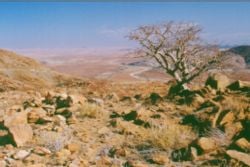
Central Mountains
Overview Namibia is well known for its wealth in flora and fauna, but also for its richness in geology. The Central Mountains lend a large contribution with beautiful granite features, intricate rock...
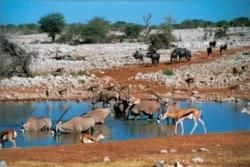
Etosha Area
The Etosha National Park is probably one of Southern Africa’s most well known and frequently visited parks. It stretches over an area of 22,270km² and combines an incredible 31 different ve...
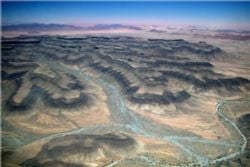
Fish River Canyon Area
The southern parts of Namibia are in stark contrast to the abundance of wildlife in the north. The focus lies more on scenery, of which the south can paint canvasses unlike any other in shades of vibr...
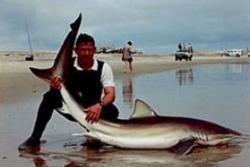
Henties Bay & Surroundings
The town of Henties Bay hugs the cold Altantic Ocean to the north of Swakopmund and carries the ambience of a fisherman’s haven. True to its humble beginnings, Henties Bay is a prime vacation sp...
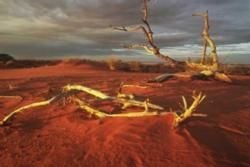
Kalahari Desert
The Kalahari Desert stretches across endless plains and paints the landscape in rusty reds, golden yellows and splatters of green. Rolling dunes dotted with patched of yellow grass gives new meaning t...
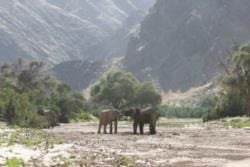
Kaokoland Area
Considered to be one of the last wild frontiers in the world, the Kaokoland is incredibly beautiful and the expanse of space including Damaraland, you find yourself in is vast and untamed. Contained w...
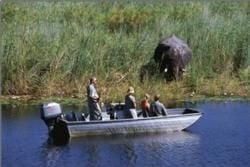
The mighty Okavango River has its origins deep in Angola where it is known as the Kubango River. It cuts deeply through the southern parts of Angola before turning south to snake through the northern ...
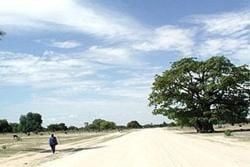
In the far reaches of the north of Namibia lies a beautiful stretch of land. Its atmosphere is that of stunning scenery, lush vegetation and true African culture. Dotted with tiny villages and wide op...
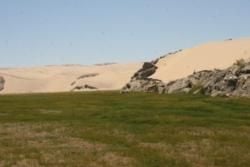
Skeleton Coast
Along the north western stretches of the wild Namib Desert lies a land of both wonder and danger. The infamous Skeleton Coast National Park stretches across 16,000km² of wild coast, endless horiz...
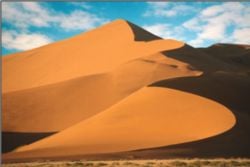
Sossusvlei Area
The beautiful undulating sand dunes of the Sossusvlei are one of the biggest attractions in Namibia and they further compound the image of Namibia as a largely desert country. Although the name is use...
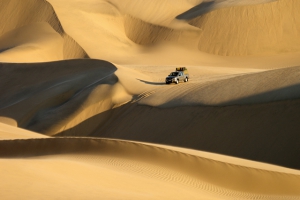
In Swakopmund, there's a wealth of experiences waiting to be discovered, from thrilling outdoor adventures to cultural exploration and relaxation by the sea. Here's a guide to what to s...
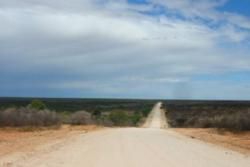
Tsumkwe can be considered one of the main towns of Bushmanland and is a hub of San activity. Although small in size, this little village offers passage to the Khaudum National Park from the south, don...
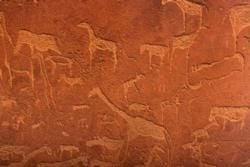
Twyfelfontein
In 1947 David Levin settled in the Damaraland area in order to farm the countryside. He noted several rock engravings and paintings on the stony outcrops surrounding a spring. The spring unfortunately...
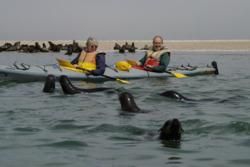
Walvis Bay is Namibia’s only deep water harbor and main hub of fishing activities and commercial sea trade. Its waters are rich with plankton and various species of fish, a favorite hunting grou...
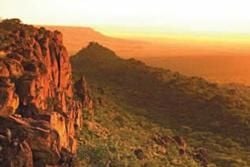
Waterberg Plateau
The Waterberg Plateau National Park was proclaimed in 1972 in an effort to safeguard wildlife populations from poachers. Stretching over 41,000 hectares the plateau houses some of Namibia’s rare...
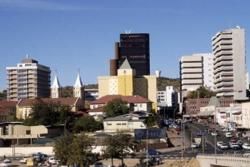
Rich In History As the capital city of , Windhoek is the economical and administrative hub of the country. With an estimated population of 300,000 people, the city has grown into a fully fledged metr...

We Are Part of the My Guide Network!
My Guide Namibia is part of the global My Guide Network of Online & Mobile travel guides.
We are now in 120+ Destinations and Growing. If you are interested in becoming a local travel partner and would like to find out more then click for more info about our Website Business Opportunity .
Nearby Destinations
- My Guide Johannesburg
- My Guide Zimbabwe
- My Guide Cape Town
- My Guide Garden Route
- My Guide Eastern Cape
- My Guide Zambia
- My Guide Botswana
- My Guide Durban
- My Guide Tanzania
Create New Guide
Login to create your guides for Namibia.
Add to My Guide
- Add to New Guide
No results found
- Accommodation
- Restaurants
- Things To Do
{[{item.label}]}
- {[{data.title}]}
Events in Namibia
Filter Events by Sub-Category
- This Weekend
- October 2024
Please select a Date first.

- [ May 3, 2024 ] Travel contests & sweepstakes: win luxury holidays Travel contests
- [ May 1, 2024 ] Review: Condor A330neo Business Class (Frankfurt to Cancun) Flight reviews
- [ April 29, 2024 ] Top 10 best luxury hotels on the Riviera Maya, Mexico Uncategorized
- [ April 26, 2024 ] Travel news: this month (April 2024) in luxury travel Travel news
- [ April 24, 2024 ] Review: Etihad A380 The Residence (Abu Dhabi to London flight) Flight reviews
Travel guide to Namibia
With endless red sand dunes set against a brilliant blue sky, the Southern African nation of Namibia stirs the spirit and moves the heart. Namibia is so large and sparsely populated that it is possible to discover enormous open spaces without roads, towns, trees or even stones, just the lonely desert wind passing through one of the most enchanting corners of the earth. The otherworldly landscapes, the world’s oldest desert, wild coastlines littered with shipwreck remains and whale bones, and unusual desert-adapted flora and fauna will capture the imagination of even the most seasoned traveler. It may not offer the big game of the more verdant African countries, but you’ll still find plenty of big game here. On top of that, Namibia is also home to a number of ultraluxe lodges, attracting discerning travelers from all over the world.
Get the most out of your (luxury) trip to Namibia with my travel guide. Find out more about:
- Best time to visit
- How to get there
- Travel requirements
- Getting around
- Inspiration, highlights, & travel tips
- Suggested itineraries
- Recommended luxury hotels (+ reviews)
TRAVEL GUIDE TO NAMIBIA: BEST TIME TO VISIT
Enjoying a dry climate, Namibia is considered a year-round travel destination. However, deciding on the best travel period really depends on which regions and attractions you will be traveling to and what your interests are. For example, the dry months in Namibia are best for outdoor activities as well as wildlife viewing in places such as Etosha National Park, whereas the rainy summer months are best for birdwatching and low hotel rates.
- In general, the dry winter season from May to October is the most popular time for travelers to visit Namibia: the skies are clear, the risk of malaria is at its lowest, and the day time temperatures aren’t too hot (although nights between June and August in the desert are freezing cold). In wildlife reserves such as Etosha National Park, the combination of sparse foliage and the lack of rain forces the game to congregate around waterholes, making animal spotting particularly easy.
- November to March are the hottest months in Namibia and temperatures in some regions can reach above 50 C° (122 F°) during the day. These months are also considered to be the rainy summer season , although many areas in Namibia receive little or no rain at all. During the wetter months, some tracks in the north eastern part of the country (known as the Caprivi strip) can become unsurpassable. These are the hardest months for spotting wildlife in parks such as Etosha and they also carry the highest risk of malaria.
TRAVEL GUIDE TO NAMIBIA: HOW TO GET THERE
Most travelers arrive in Namibia via Hosea Kutako International Airport, the main gateway for all destinations in the country (located a 45 min drive from the capital Windhoek). Several major airlines offer direct flights to Windhoek, including Eurowings, Lufthansa, Qatar Airways and Ethiopian Airlines. Click here for a continuously updated list of airlines that offer direct flights to Kigali.
It’s also possible to arrive in Namibia overland as part of a multi-country itinerary. Namibia is bordered by Botswana to the east, Angola and Zambia to the north and South Africa to the south. While visiting Angola is not on the bucket list of many tourist (due to high crime and an unstable security situation), many travelers combine Namibia, South Africa, Botswana and Zambia in one single holiday (often starting at Cape Town in South Africa and ending at the Victoria Falls in Zambia or vice versa).
Before you buy a plane ticket, consider reading my tips & tricks for buying the cheapest plane ticket .
TRAVEL GUIDE TO NAMIBIA: ENTRY REQUIREMENTS
Requirements for entry into Namibia differ from country to country, and are subject to change. Prior to departure, always check with your government and your nearest Namibian embassy or consulate what documents you need for travel to Namibia. Some important points:
- You need a valid passport . The passport must be valid for six months after entry into the country. Y ou need one blank page on your passport for entry stamps.
- Namibia introduced new immigration rules in 2016 relating to travel with children . In addition to valid passports, parents traveling with children (under 18) should at all times carry the original or certified copy of the unabridged birth certificate. The full unabridged birth certificate should list the child’s details and both parents’ details.
Make sure you read my 10 tips to plan a worry-free trip .
TRAVEL GUIDE TO NAMIBIA: GETTING AROUND
In order to reach most of Namibia’s National Parks, reserves and places of interest, you will need to rent a vehicle or charter a plane.
- The quickest and most comfortable way to get around in Namibia is by air travel . Dozens of minor airstrips cater for chartered plane and most of the isolated luxury lodges have their own landing strip. Flying will save you a lot of time. For example, getting from Sossusvlei to Damaraland will take two full days by car (with an overnight stop in Swakopmund) while it’s just two hours by plane. There are several good charter flight operators who regularly fly tourists between lodges, but it is best to ask the lodge(s) you’re staying at to advise on flights and book them for you, since many have agreements with particular charter operators. One example is Wilderness Safaris , which makes us of Wilderness Air (my experience with them was excellent).
- Most travelers will rent a car , which is the easiest and cheapest way of getting around the country. Namibia’s road network is comprised of high-quality tarred highways and secondary gravel roads. Although most road are generally navigable in a 2WD car, the majority of self-drive visitors rent a 4WD car: the higher clearance makes the ride more comfortable and 4WD cars are better equipped to tackle poor road conditions in the rainy season. Most lodges that demand 4WD access have a safe parking area for 2WD saloon cars, and will transfer guests in their own 4WD vehicles, usually at no extra cost. During my trip to Namibia, I rented a 4WD car from Asco Car Hire near Windhoek and was very happy with their service.
TRAVEL GUIDE TO NAMIBIA: INSPIRATION, HIGHLIGHTS & TRAVEL TIPS
There are many reasons why Namibia should be on your bucket list:
- Enjoying incredible views at the world’s 3rd largest canyon, the Fish River Canyon
- Visiting Kolfmanskop, a ghost town in the desert
- Spotting wildlife in Etosha National Park
- Exploring the dramatic scenery of Damaraland
- Climbing the dunes at Sossusvlei & Deadvlei
- Visiting the Skeleton Coast
- Soaring in a hot air balloon over the desert
The following, comprehensive articles may also inspire you and help you plan your holiday to Namibia:
- Top 10 best things to see & do in Namibia
- Top 10 best luxury hotels & lodges in Namibia
- Tips & tricks for getting the best deal at a luxury hotel
- Tips & tricks for buying the cheapest plane ticket
TRAVEL GUIDE TO NAMIBIA: SUGGESTED ITINERARIES
It’s impossible to suggest one itinerary for Namibia in this travel guide, but I hereby share with you a schedule based on my own holidays in Namibia, which is great if you want to see the country in a time frame of two weeks:
- Recommended hotel: Zannier Hotels Omaanda
- Recommended lodge: Zannier Hotels Sonop
- Recommended hotels: &Beyond Sossusvlei Desert Lodge or Little Kulala by Wilderness Safaris
- Recommended hotels: Strand Hotel , Giardino Boutique Hotel
- Recommended hotels: Damaraland Camp by Wilderness Safaris
- Recommended hotel: Hoanib Skeleton Coast by Wilderness Safaris
- Recommended hotel: Little Ongava
- Recommended hotel: Onguma The Fort
- Day 19 : drive (6 hours) or fly to Windhoek and return home
TRAVEL GUIDE TO NAMIBIA: RECOMMENDED HOTELS (+ REVIEWS)
I recommend to visit my top 10 list of the most fabulous hotels in Namibia if you are eager to know how I rank Namibia’s top hotels, based my own experience.
Below, you find my detailed reviews of hotels in Namibia (with pros, cons, & tips to save money per hotel).

*** Follow me on Instagram , YouTube , Twitter , and Facebook for a daily moment of travel inspiration ***
Share this:
- Click to share on Facebook (Opens in new window)
- Click to share on Twitter (Opens in new window)
- Click to share on WhatsApp (Opens in new window)
- Click to email a link to a friend (Opens in new window)
- Click to print (Opens in new window)
- Click to share on LinkedIn (Opens in new window)
- Click to share on Tumblr (Opens in new window)
- Click to share on Reddit (Opens in new window)
- Click to share on Telegram (Opens in new window)
- Click to share on Pinterest (Opens in new window)
Great content. Thanks for your post.
The sentence “Malaria at lowest” scared me!
As always, the most thorough lists and reviews I’ve read anywhere. Thank you for sharing your lux experiences with us in such detail.
Leave a Reply Cancel reply
This site uses Akismet to reduce spam. Learn how your comment data is processed .
© The Luxury Travel Expert 2024
Home > Namibia > Namibia Travel Tips
Namibia Travel Tips: 20 Things to Now Before Your Self-Guided Trip

These Namibia travel tips answer the most important questions people ask before visiting. Compliment this post with the highlights and lowlights of our Namibia travel blog and itinerary , Cape Town to Namibia Guide , and honest assessment of, Is Namibia Worth Visiting?
Like I imagine you are doing right now, I spend a lot of time planning my Namibia trip— reading blogs and travel guides, watching videos, and talking to friends who'd been before.
And maybe you might be feeling the same way I did: with even more questions than answers.
So this post of Namibia travel tips seeks to share information I wish I had before the trip but had to learn the hard way—my top recommendations and pieces of advice based on the highs and lows of Kim and my self-guided adventure around the country.
Namibia Travel Tips Outline
Your Namibia travel tips are organized into three sections:
Planning Tips
- Driving Tips
- Travel Tips

Should you plan and book in advance?
Definitely.
Normally we prefer to only book our first night or two in advance and plan the rest as we go (one of our Travel Tips Our Moms Never Told Us ), but that strategy wouldn’t have worked so well in Namibia.
That's because:
- A few campsites really are worth it and really do book out well in advance—the ones in Etosha, NamibRand, and Sossusvlei, for example.
- Planning on the road would be a huge pain in the butt . It's challenging enough at home. On the road when you have limited cell reception it can become borderline impossible.
- There’s not a lot of room for improvising . Camps can be an hour drive away from each other, so it's not like you can drop in on one after the other checking availability.
Bonus planning tips:
- Consider buying 100 minutes of call time to Namibia on Skype to use for pre-trip planning. It's cheap, $7 US, and probably the fastest way to make reservations because most campsites' and lodges' online booking sites suck.
- Look beyond the camps all the bloggers and guidebooks write about like Madisa, Hoada, and Palmwag. To do so, use the iOverlander app and on Google Maps search terms like “camp” in specific areas to identify lesser-known camps. That's how we found some nice ones like Camp Gecko and Camp Mara , for example.
Do you need to stay inside the big parks/attractions/cities?
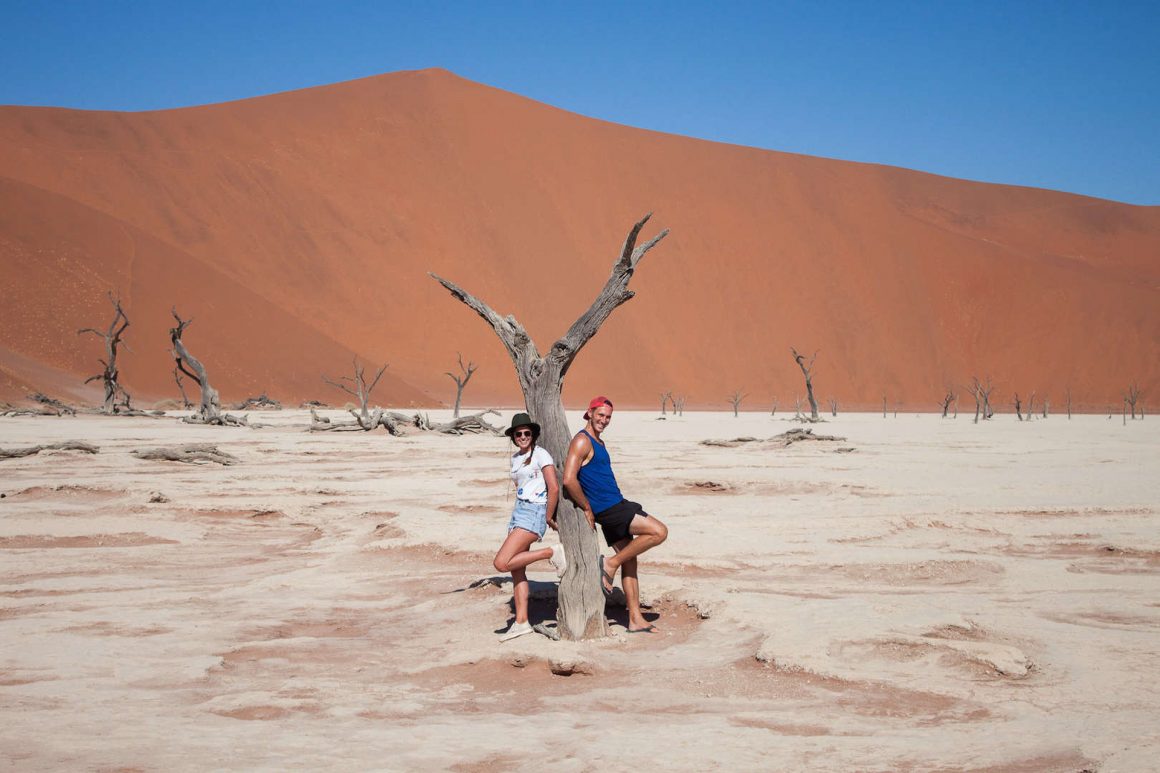
Definitely not Sossusvlei.
Sossus Oasis Campsite, which is a few hundred meters outside the gates and the official campsite, worked out fine.
We were grateful to have followed some unconventional advice to avoid the mad early morning rush to get the “perfect sunrise light” and go in the afternoon instead.
We had all of Deadvlei to ourselves! It was worth braving the 40°C dry heat for.
The only downside was it was too hot to climb the dunes, which many of our friends had raved about.
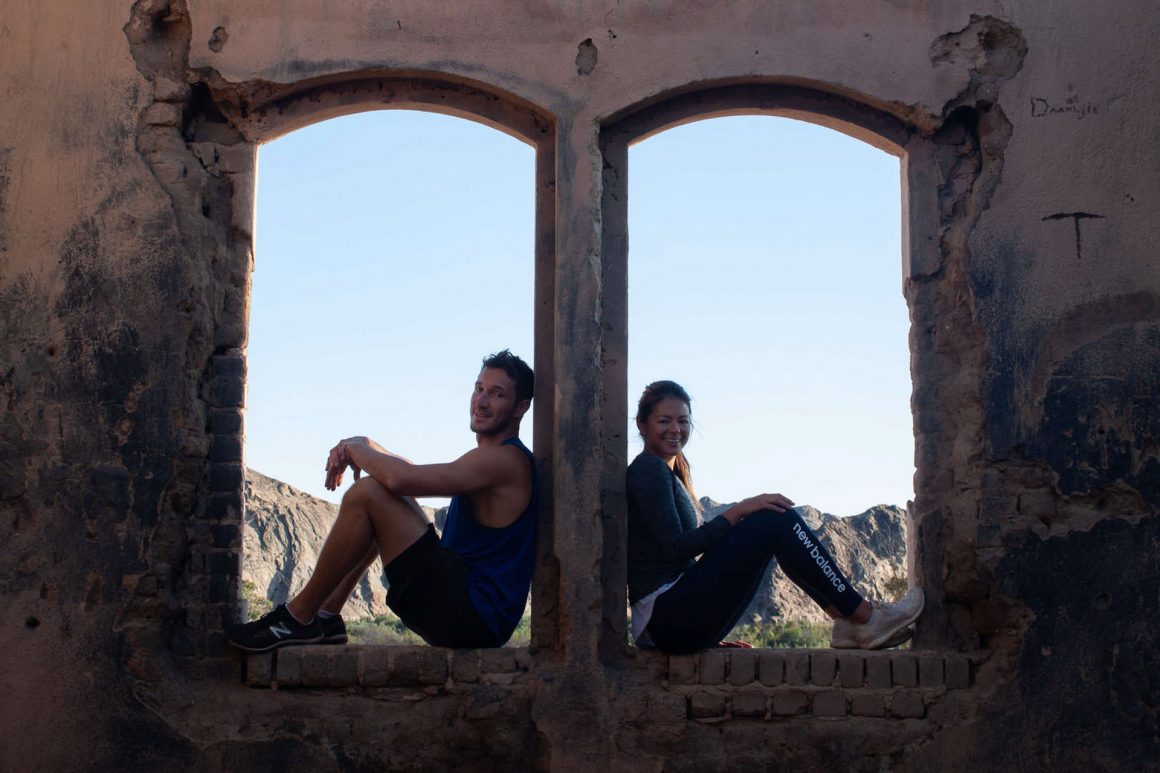
Even more definitely not Swakopmund.
We could not understand why people say such nice things about "Swakop."
Compared to most towns in South Africa, it’s a “hole,” as Kim’s client Ian likes to say. Even the name, Swakopmund, is unattractive.
Maybe it's one of those “most beautiful girls in a small town” situations; people's expectations are too low from having spent too much time in the desert.
Staying at Goanikontes Oasis , a camp under new ownership and only a 30-minute drive on well-maintained roads outside of town, was an excellent alternative. From there, we could check out the town, eat there (Tug lived up to the hype and Tiger Reef's setting was even better), then get the heck out.
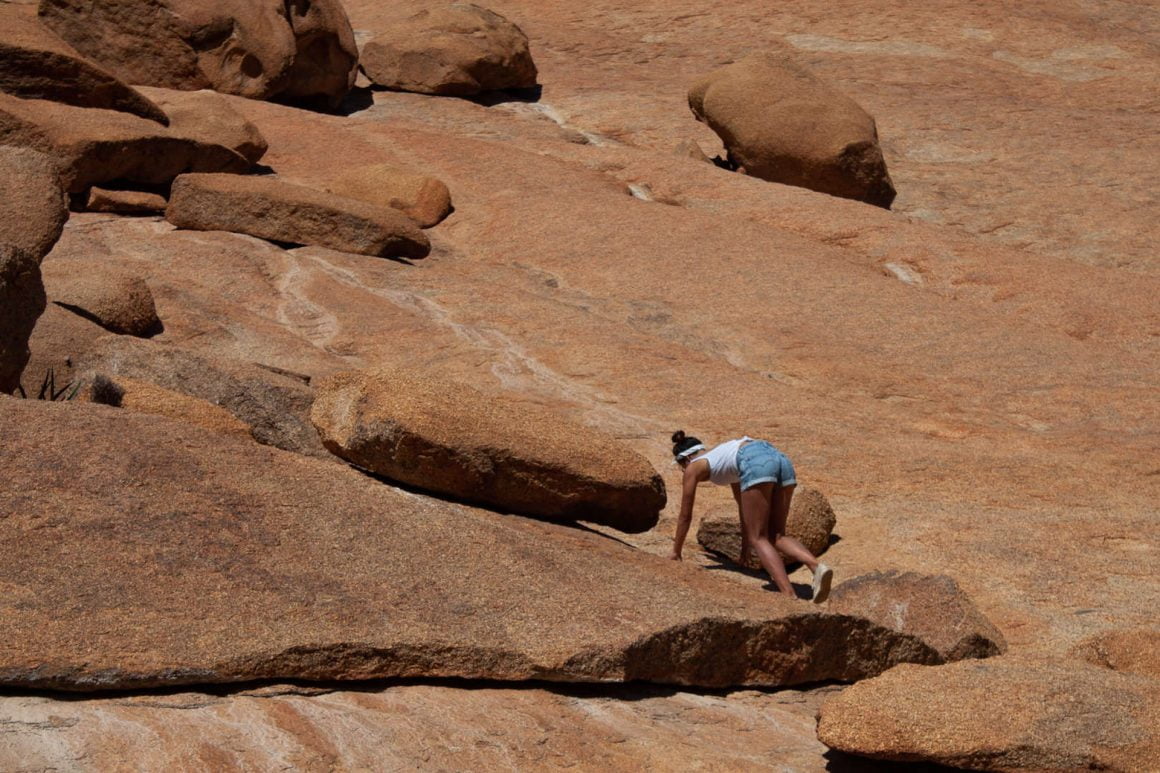
Stay in Spitzkoppe.
Clambering around on the big boulders and grippy slopes around Spitzkoppe was easily the most fun physical activity of our whole trip . It would’ve been nice to have had more time there.
We didn't stay because they said they were fully booked when we were planning, so we made alternate arrangement. When we showed up, though, they had tons of space.

And definitely stay inside Etosha
Yes, Etosha's campsites are way overpriced for what they are—dirty, crowded, and basic—but the water holes make it 100% worth it .
We over-use the word "awesome," but observing elephants, rhinos, buck, and hyenas drink water there at sunset as we drank wine and sunrise as we drank coffee was truly awesome.
How's Windhoek?
Not worth spending too much time in.
Other than a couple of decent spots—local crafts and souvenirs from the Craft Centre, and the worthy-of-the-hype, over-the-top decor of Joe's Beerhouse—Windhoek felt like a provincial version of Nairobi , which is not a compliment.

Which are the most helpful Namibia travel guides?
We liked Rough Guides the best out of the three guidebooks we got—Lonely Planet, Rough Guides, and Bradt.
The Bradt guide had too much detail and the Lonely Planet only covered the basics. Rough Guides was just right.
The iOverlander app we already told you about proved to be useful for reading reviews and identifying some stops to make on the road when we didn't have cell reception.
For Etosha, it would have been really cool to have some podcasts or an audiobook that provided information and fun facts about the animals you were looking at. We looked, but couldn't find any.
[ Readers : Anyone out there have any suggestions? Let us know in the comments. ]
This isn't a planning resource, but we were super glad to have had some audiobooks to keep us from losing our minds during the MANY monotonous hours on Namibia's horrible roads. For fun stories about life as a safari guide, give Whatever You Do, Don't Run a listen.
Free Audiobook: Get a free audiobook by signing up for a free trial of Audible. Click here.
Did you need physical maps?
Yes and no.
For Etosha, we definitely could have used a detailed guide to the water holes, which to visit, and when.
Other than that, we had zero issues thanks to downloading Google Maps (for roads) and Maps.me (for trails) for offline use.

Could you get by without ever camping or cooking?
More easily than we thought. There were lodges all over and they all offer food.
But even if you could afford to not camp, you'd miss out by doing so.
Probably our favorite night of our entire Namibia trip was at NamibRand Family Hideout , where we “had to" camp but thereby had unforgettable dune-top sunrise and sunset views to ourselves.
Camping in Namibia was more comfortable than we thought, anyway. Sure, you sleep in a tent, but many of the camps had clean, private bathrooms with hot showers, power, communal pools, and plenty of space.
As for food, many campsites offered good-value dinners , so we could have gotten away with camping but not cooking had we wanted to. We made the right choice to eat with our hosts at camps like Goanikontes Oasis, Camp Gecko (great chat and great views!), and Kamanjab Rest Camp (Elodie is a mean cook!).
But we also made the right choice to cook (or braai, as they say in Namibia) a couple of meals on our own. It was fun, surprisingly tasty (thanks to Kim), and… there's not much else to do anyway.
What did you wish you’d packed?
- Firelighter. The bags of wood we bought didn't come with kindling, so, as we learned the hard way in NamibRand, you'll have a hopeless time trying to start a fire without it. Get this Omuriro stuff as soon as you arrive in Namibia.
- Braai utensils. The campsites don't provide them and if you don't want to use your hands to flip your meat, bring your own. Last minute we packed a wooden spatula which came in handy.
- Chairs and a table, maybe? Some camps didn't provide these, but they wouldn't have fit in the VW Polo we rented anyway.
Other than that, if anything we overpacked because you spent the majority of our time sitting in your car looking at stuff, which we could do naked. We decided to wear clothes anyway, which we could easily wash by hand and dry in a matter of minutes in the desert.

Props to us for packing these things, by the way:
- Puffy jackets. We used them in Swakopmund all day and most evenings once it started to get chilly in the desert.
- The little battery-powered lamp we bought at a supermarket was handy for cooking and eating in the evenings and mornings.
- Tin foil. We went through a whole roll of it for cooking veggies over the fire.
- Wine from South Africa. The selection in Namibia is limited and expensive.

How expensive was it?
Not too bad, fortunately.
The remote restaurants, gas stations, and provision shops could have bent us over and taken full advantage of our lack of alternatives. But they don't!
Gas was about 13 NAD a liter ($0.90 US), multi-course meals around 200-300 NAD ($14-20 US), and supplies were reasonably priced.
And compared to South Africa, and definitely Kenya, the national park entry fees were very reasonable—80 NAD per person and 10 NAD for the car.
Even the campsites, which we thought seemed overpriced, turned out to be decent value because, as I said already, they were nicer and better equipped than the ones we're used to back home in Canada.
More of our best travel tips (for wherever you go)
You're sure to find at least one idea that will change the way you travel in our list of our best travel tips and tricks . It has everything from advanced, experimental travel tips and tricks to practical but oft-overlooked ones to dumb advice we hear others give too often (and what to do instead).

How are the roads really?
The dirt roads are bad. Shamefully bad.
I wish I knew where the incompetent and corrupt people who are in charge of Namibia's dirt roads lived so I could give them a piece of their own medicine by slashing their tires.
The endless corrugated roads are a desert version of Chinese water torture. We could tolerate them at first, but they slowly ate away at our psyche until we blew a gasket and lost our minds (….if we don’t blow a tire first).
In some places, like around Kamanjab and in the far south, the dirt roads aren't so bad, but that's not because of sound management but because nobody uses them.
As a rule of thumb, the closer to top attractions you get, the more disastrous you can expect the roads to be.
On the other hand, the paved roads, which are normally marked with numbers starting with B on the map, were in stellar condition. Whoever manages them can keep their job.
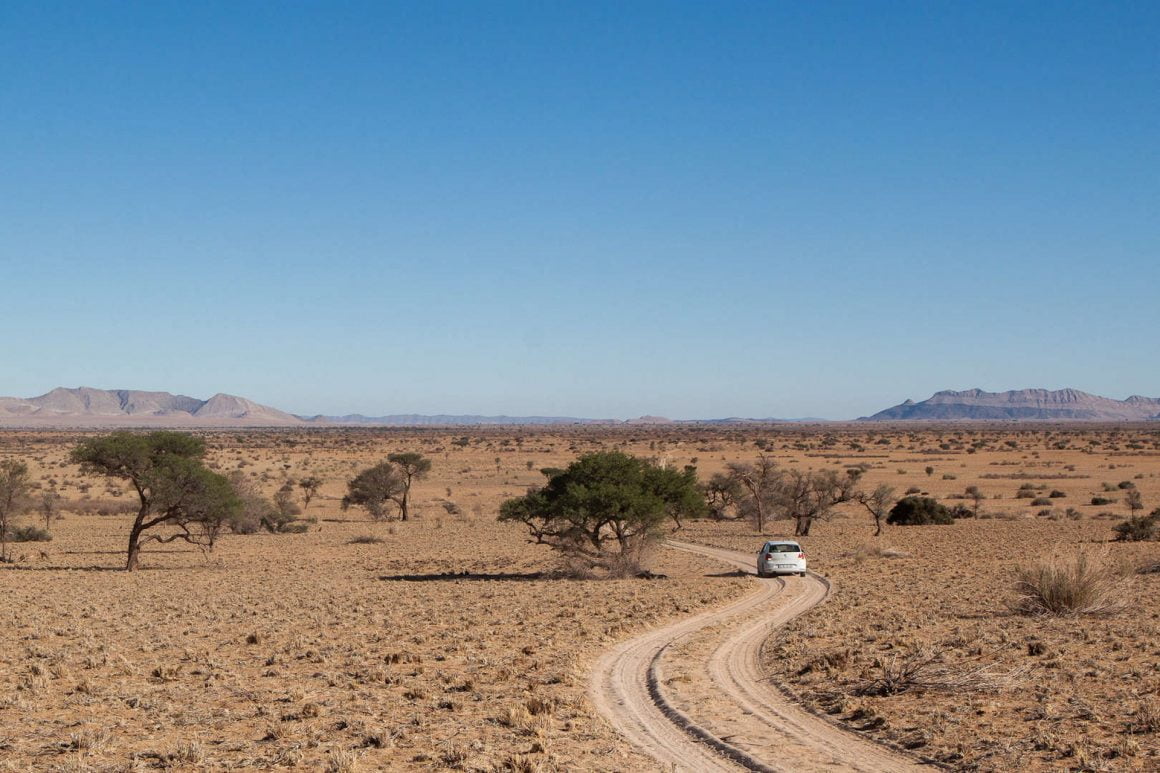
Did you regret renting a Volkswagen Polo instead of a big 4×4 like everyone else?
Mostly, yes.
It would've been way out of our budget to rent a big truck for our one-way trip from Cape Town to Windhoek and we and our poor Polo survived the horrible roads, but the extra expense would have been worth it. The roads would still have been miserable, but at least we could have got through them twice as fast.
The shame is that it should be easy to travel Namibia in a sedan. And, according to locals we talked to, it used to be. Not too long ago, the roads were graded on a regular basis.
I sense a conspiracy. The 4×4 rental companies must be bribing the government to let the roads go to shit so tourists are forced to rent from them.

What’s the likelihood of getting a flat tire?
For us, 300% because we had three of them.
And if anything we were lucky to not have had a big blowout.
But don't be scared by the fact you've never changed a tire before. It's easy. So easy that we should have done it ourselves the first time instead of getting help from those dumb-dumbs who broke our jack by using it upside down. And as long as it's not a huge hole you can get it patched for only 100 NAD ($7 US).
Three warnings:
- Buy a tire patch kit for about 80 NAD. Like this. They work really well and save you from having to completely reroute if you get a puncture in the middle of nowhere or in Etosha.
- Know your rental car company’s policy on punctured tires . Even though our tires were professionally patched and worked as good as new for the 2,000 km afterward, Thrifty, the company we rented from, told us their policy was that we had to buy brand new tires and penalized us accordingly.
- Know the optimal tire pressure for gravel and paved (or “tarred” as they say in Namibia) roads . Look it up or ask your rental agency. Every gas station has a pump to adjust accordingly.

How can you estimate driving times?
I wish I had a simple answer for you, but I don’t.
As you can see on Namibia maps, the roads have a letter system. B roads and the odd C road are paved. On these, the speed limit is generally 120 km/h and you can go even faster than that (though we wouldn't recommend it between Etosha and Windhoek because of speed traps).
For the C and D dirt roads, it depends on the car you're driving and how you drive it. If you’re willing to increase the risk of destroying a tire and flipping your car, you can speed at 80 km/h over even the most corrugated roads. We did not and could not do so in our Polo. Our speed in Km/h was often lower than the outside temperature in Celsius.

On the Road
How do you pronounce these names.
Here’s my best go at phonetically spelling a few of Namibia's main places:
- Swakopmund: swok-OP-mooned, or swok-OP for short.
- Sossusvlei: SAUCE-suss-flay
- Deadvlei: DEAD-flay
- Windhoek: VIND-hook
- Okaukuejo: o-ka-KOY-yo
These pronunciations aren't 100% correct, but they're infinitely better than our feeble initial attempts. Everyone will understand you.
How much cash should you withdraw?
For us, 3,000 NAD was plenty. Our only mandatorily cash expenses were most national park fees and meals at remote campsites.
We mostly booked and paid for accommodation in advance with our credit card and we could always pay for gas and groceries with a card too.
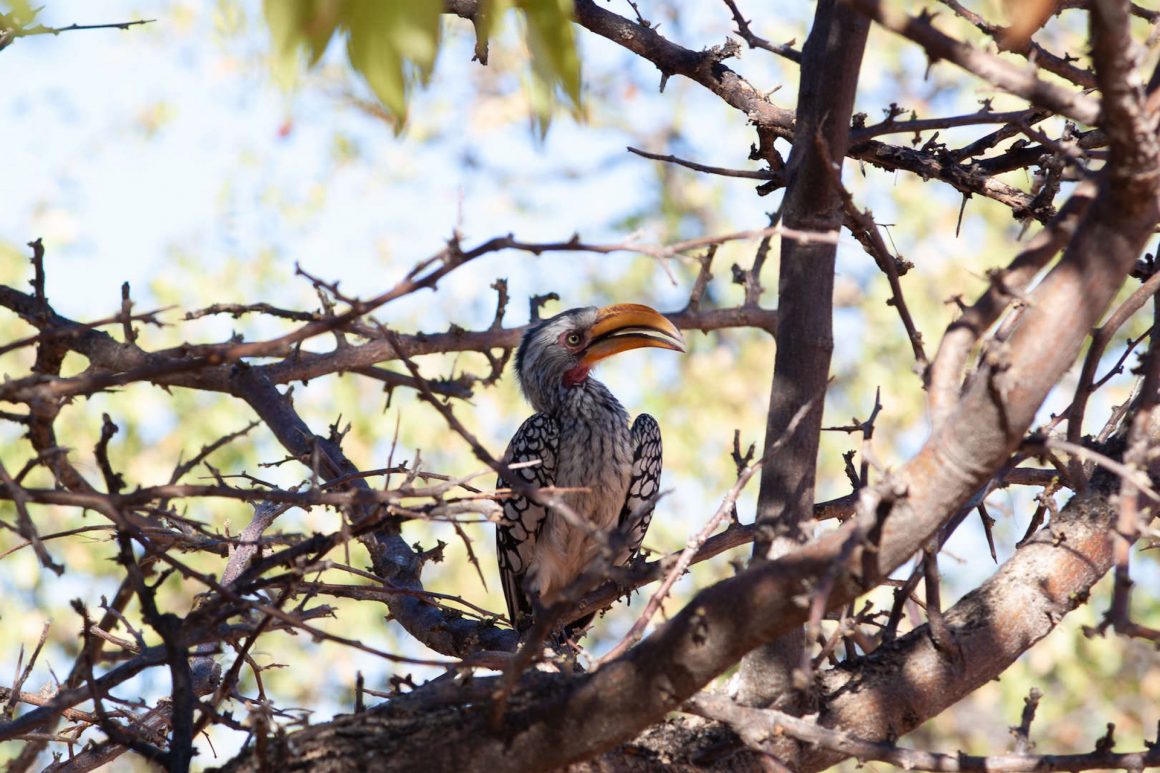
How safe is it?
Totally safe. As safe as everyone says.
Or actually, come to think of it, it would be easy to hide a body in the desert….
(Sorry, that's one of our audiobooks, Something in the Water , talking.)
The only times we felt a bit sketched-out were when leaving our car, which was visibly packed with gear, on public roads around Swakopmund and Windhoek. In those cities, it's better to park where there are car guards during the day and in secure lots at night.
As for wildlife, there's nothing to worry about. We saw one friendly tarantula in a campsite bathroom, didn't see any snakes or scorpions, and big game will leave you alone if you leave them alone.
Can you buy groceries anywhere?
More easily than we thought.
We passed a town at least every 150 kilometers or so and they all sold a passable selection of fresh produce, frozen meat, drinks, and canned goods.
Can you drink the tap water?
Yes, everywhere.
Though in some places like Kamanjab and Outjo it was unpalatably salty. In those towns, we drank from the 10 liters of water bottles we refilled every time we got to a source of normal-tasting tap water.
Are you going to be disgustingly sandy and sweaty all the time if you camp?
Not to worry. The campsites all have warm showers. A few have pools too.
We also discovered we could take advantage of the pools and showers at the camps in Etosha and Spitzkoppe during the day , even if we weren't staying at them overnight.

How is cell reception around Namibia?
Worse than we thought it’d be.
The amount of data we bought for your 11 days in Namibia (1.5Gb for Kim, 800 Mb for Chris) turned out to be overkill.
Between the Orange River on Namibia’s southern border and Sossusvlei, we barely even had E.
From Swakopmund up to Etosha and back down to Windhoek, 3G popped up a lot more, but still not enough to be able to rely on it.
Even so, it was a good thing we bought some data . A few of the places we stayed at offered WiFi but it was slow and expensive (usually around 40 NAD per 300 Mb).
Oh, and as we alluded to earlier, remember to download Google Maps to your phone before you set off into the desert.
What other Namibia travel tips should I ask about?
Nothing. I'm tired of giving you Namibia travel tips.
But ask away in the comments and I'll answer when I've recovered.
Read This Next:

Before Planning a Cape Town to Namibia Road Trip, Read This
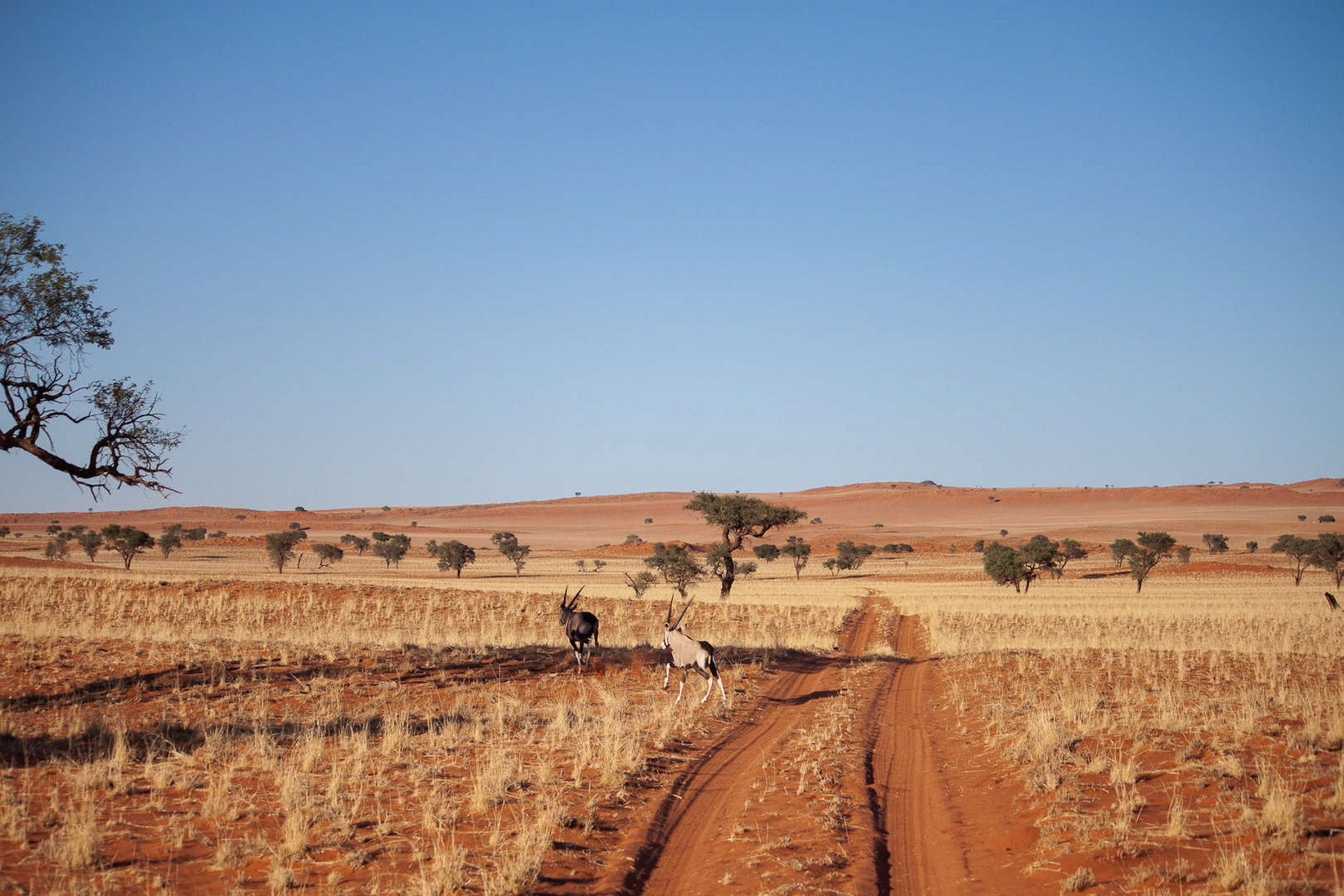
Namibia Itinerary and Travel Blog: 14-Days, 4,274km, 1 Big Problem

Is Namibia Worth Visiting? Yes, But Prepare Yourself
General travel guides.

Capture the Vibes of Your Next Trip With a Family Rap Video
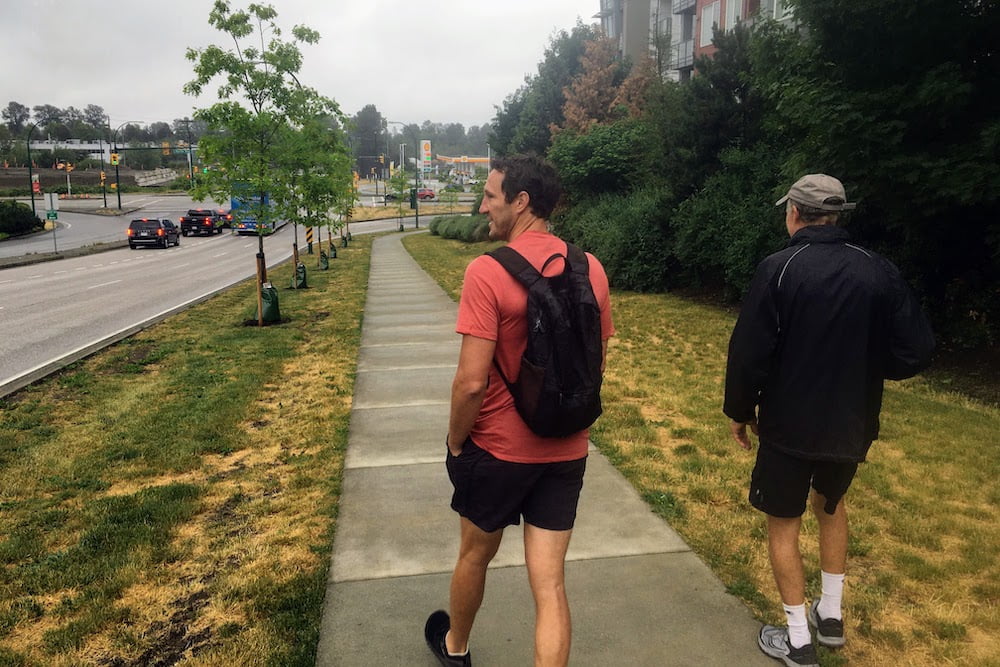
Urban Hiking: A Great Day in 56,973 Steps

Why I Love to Travel, Beyond the Obvious Reasons

How to Travel To Change Who You Are
Disclosure: Whenever possible, we use links that earn us a cut if you pay for stuff we recommend. It costs you nothing, so we'd be crazy not to. Read our affiliate policy .
4 thoughts on “Namibia Travel Tips: 20 Things to Now Before Your Self-Guided Trip”
Hey, Did you travel during covid? We are wondering where to take the pcr test on the way back. Probably only Windhoek…
Hey. We went on our big trip pre-COVID. In Dec 2020, we drove across the SA-Namibia border and back for an Orange River trip for 5 days and were able to do on-site testing at the border.
Which route did you use from fish river to sossusvlei? There seems to be 3 options in Google maps. Trying to figure which may be the best if you have road numbers would help as is see its c27 or c14 otherwise a much longer trip to b1 and the c19.
Hi Mo. We took an indirect route, passing by Aus then Namibrand (a highlight). Here's our full Namibia itinerary .
What do you think? (Leave a Comment.) Cancel reply

Namibia travel tips: practical tips for traveling Namibia
Written by Maartje
Namibia is one of the most beautiful travel destinations we ever visited. It’s perfect for a self-drive safari at of the best wildlife parks in Africa, but you will also encounter the most special natural phenomenon. From the largest seal colony in Africa and the endless sand dunes in the Sossusvlei to one of the largest canyons in the world . Start your travel preparations for this bucket list trip with these practical Namibia travel tips.
Read more to prepare for traveling Namibia:
- Namibia itinerary: the perfect self-drive road trip route
- Don’t miss these natural phenomena in Namibia
- Tips for renting a car and driving in Namibia
- Why we wouldn’t recommend backpacking Namibia (+ tips if you do and our travel budget)

14 Namibia travel trips
#1 is namibia safe to travel.
We never felt unsafe while traveling in Namibia. The population is extremely friendly and helpful. The wild animals will not pose any danger and if you decide to go wild camping in Namibia , just make sure to know how to do so safe. The most important factor to consider for your safety in Namibia is the vastness of the country and having car trouble with your rental car in the middle of nowhere.
Read more : we wrote an extensive blog about road tripping Namibia . About road safety, what to do when your car breaks down, what to always bring with you (spoiler: water!) and tips for renting a car.

#2 What is the best travel time for Namibia?
The high season of Namibia is from July to October, when the temperatures are not too hot. Guide books say there are animals at the waterholes in the national parks during that time of the year as well, making it easier to spot wildlife on your Namibia safari.
That being said, we traveled to Namibia in January and never regretted it. It was hot, so we did skip some long hikes. But spotting animals wasn’t difficult at all at that time of the year. In fact, it was baby time in Etosha National Park so we saw baby elephants, zebras, lions and more! And the low season of any country also comes with lower prices and fewer visitors at the big Namibia tourist attractions . We also had the advantage that we didn’t need to book any campsites or lodges in advance.

#3 Do you need a travel adaptor for Namibia?
You’ll probably need a travel adapter for Namibia. The power plugs in Namibia are type M or D. We had completely forgotten about this, but found a travel adapter in Windhoek quite easily. But as shops aren’t always around in sparsely populated Namibia, we recommend bringing one from home.
If you travel by rental car and go camping as we did, it is good to bear in mind that your car won’t have a power plug of course. It’s not very comfortable charging your phone or other devices, leaving them around the power pole. So we brought a converter with us to charge our devices in the car while driving.

#4 What about malaria in Namibia?
We were told that malaria is not a danger in Namibia. Malaria would only occur north of Etosha National Park and travelers rarely visit this part of the country. Make sure to get malaria advice from a travel clinic before traveling to Namibia.

#5 Do you need a visa for Namibia?
You don’t need to arrange a visa for Namibia in advance. If you are traveling for less than 90 days to Namibia, a visa is not required. It’s the same in neighboring Botswana, which is often combined with Namibia in one trip. You will get a sticker in your passport upon entering the border in Namibia.
Your passport must be valid for another six months upon arrival in Namibia. Other documents, such as proof of an exit ticket, may also be requested at the border. Check this in advance and bring it with you to be on the safe side.

#6 Which vaccinations are required for Namibia?
No vaccinations are required, but DTP and Hepatitis A are generally recommended by the Dutch travel clinics. A yellow fever shot is mandatory if you travel from an area with yellow fever, we were told. Check in advance with your travel clinic which vaccinations are recommended for you.

#7 What do locals eat in Namibia?
You won’t find many restaurants in a sparsely populated country like Namibia, but if you do visit a restaurant, you should not be surprised to see zebra, kudu and oryx on the menu. You can also buy those kinds of animals at the supermarkets. An affordable bell pepper, on the other hand, is a lot harder to find. That feels strange but is understandable in a desert country with wildlife but without many opportunities to grow vegetables on a large scale.
Barbecuing is also a favorite activity in Namibia, or rather: a so-called ‘braai’. We have slept on the most primitive camping spots where there was no shower or toilet, but it always had a braai.
What also surprised us: you can drink the tap water in Namibia! We do not often see this outside our home country (Netherlands) and we did not expect this in an African country at all.
Read more: 12 ways in which Namibia surprised us

#8 What is the currency in Namibia?
The official currency in Namibia is the Namibian dollar. But don’t be surprised if the ATM will hand out South African rand: those currencies are linked. So you can actually pay with South African money in Namibia. Sounds crazy, but it’s not a scam.
It’s also good to know that you can pay with your creditcard almost anywhere. When traveling we usually carry a wallet with cash, but in Namibia you can usually pay with your debit or credit card. From the campsites to the national park park gate, debit card payments are accepted almost everywhere.

#9 What time zone does Namibia use?
Namibia is +2 GMT, so the same as South Africa.

#10 What is a good travel itinerary for Namibia?
Your Namibia trip will probably start in Windhoek, as it has an international airport. For a trip around Namibia, you have roughly two choices if you have two to three weeks of travel time: you either visit the north and the Caprivi Strip, or you make a tour skipping the Strip.
We chose the second option as we also wanted to visit the ghost town of Kolmanskop and the impressive Fish River Canyon in the south, while we were less interested in more safari time at the Caprivi Strip. Check out our blog about the perfect Namibia itinerary for more details and a useful map of the route.

#11 Where are the beaches in Namibia?
Namibia is located on the coast, so there is a stretch of coastline full of beaches. Just don’t think this means Namibia is the perfect beach destination, as most coastal areas don’t have comfortable beaches at all.
We camped in Torra Bay on the Skeleton Coast , which is the most perfect beachside campsite. Sebastiaan dared to even swim in the ice-cold ocean, but I just couldn’t. Swakopmund has the best beaches in Namibia. Those are the kind of sand beach you’re looking for when planning a day at the beach, but keep in mind the ocean is extremely cold here as well. Swakpomund even has its own beach bar: Tiger Reef Beach Bar & Grill, right next to the Swakopmund camping Tiger Reef Campsite.
#12 Can you go backpacking Namibia?
We think a rental car is essential for traveling around Namibia. The only good alternative is a group trip, but we prefer to travel without a group. Public transport in Namibia is not widely available and will certainly not take you to all the big tourist attractions in Namibia . There is a train track through Namibia, but the train would also take you to the more central points in the country and not to the tourist highlights.
Read more: why we wouldn’t recommend backpacking Namibia , including tips if you decide to do so and a breakdown of our travel budget

#13 Would we recommend camping in Namibia?
Absolutely yes! Lodges in Namibia can be quite pricey, especially in high season. Camping is a more budget-friendly option, but also a more adventurous way to spend your nights. We traveled the country with a 4×4 with a rooftop tent and set up our tent at the most beautiful places. We stayed at camping sites with the best views: near a waterhole in Etosha National Park , on the Brukkaros volcano and on the Skeleton Coast . Traveling around with a 4×4 and camping were actually the highlights of our Namibia trip.
Read more: everything about camping in Namibia and the best camping sites in Namibia .

#14 What is a normal travel budget for Namibia?
Your travel budget will depend on whether you choose an organized group tour or a self-drive road trip around Namibia. We prefer the second and would go for a road trip our second time in Namibia as well. We give you plenty of tips in our Namibia blogs for traveling around the country by yourself.
If you make the same choice, your biggest expenses will be your airline tickets and your rental car with gas. Prices for anything, also for rental cars, are much lower in the low season, so consider this deciding what time of the year to visit Namibia. We spent € 3,300 for two people and more than three weeks in the low season, excluding flight tickets. We give a break down of our travel budget , explaining to you in detail how we spent our money and what were the exact costs of our rental car.
Save this pin for later:

Related Entries
The perfect namibia itinerary for a self-drive road trip.

The 9 best camping sites in Namibia

Visiting the Sossusvlei sand dunes: 25 practical tips

Visit the Sossusvlei: sand dunes, acacia trees and camping

Safety tips from the US government for Americans traveling to Mexico
A travel advisory for the country has been in effect since late august 2023, by dana williams • published may 4, 2024 • updated on may 4, 2024 at 5:24 pm.
The U.S. Department of State has been cautioning Americans to reconsider travel to Baja California, the region of Mexico, where four bodies were recently found .
The warning is part of a travel advisory for the country that has been in effect since late August 2023. According to the department’s website, “violent crime – such as homicide, kidnapping, carjacking and robbery – is widespread and common in Mexico.”
It also adds that because U.S. government employees are restricted or prohibited from going to certain areas in Mexico, it makes it difficult for them to provide emergency services to U.S. citizens who might need it.
However, they shared tips for Americans who travel to the region against their warning:
Get San Diego local news, weather forecasts, sports and lifestyle stories to your inbox. Sign up for NBC San Diego newsletters.
- Keep friends and family informed of your travel plans.
- If separating from a group, share your GPS location with a friend.
- If taking a taxi alone, take a photo of the taxi’s number and/or plate and send it to a friend.
- Use toll roads when you can and do not drive alone or at night.
- Be extra cautious when visiting local bars, nightclubs or casinos.
- Do not show any signs of wealth (i.e. jewelry, etc.)
- Be vigilant around banks and ATMs.
The department also suggests enrolling in the Smart Traveler Enrollment Program .
For more information on the travel advisory, click here .
This article tagged under:
Every product is independently selected by (obsessive) editors. Things you buy through our links may earn us a commission.
The Strategist Guide to Making a Bed
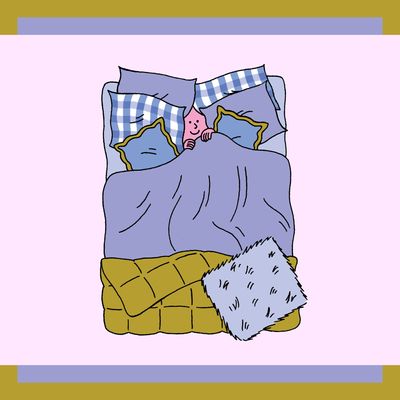
The writers and editors at the Strategist spend a lot of their working hours thinking about bedding (testing mattresses , studying the difference between percale and sateen ). So it’s not terribly surprising that when it comes to their own beds, they’re a bit obsessive. Here’s how they style their duvets , quilts , shams , and unattractive orthopedic pillows.
Okay, if I were to walk into your bedrooms right now, what would I see?
Lauren Ro, writer: We have a king-size bed, and I top it with Company Store’s Premium Alberta Down Light Warmth Comforter . I change up the cover depending on my mood — I use a linen one from Parachute in dusk for a casual, lived-in look, and Snowe’s Percale Duvet Cover for a polished vibe. It has a border trim that makes it look a bit formal without appearing too fancy. For every setup, I use a fitted sheet, a flat sheet, two standard pillows, two king pillows, and two mini-shams with scalloped flanges.
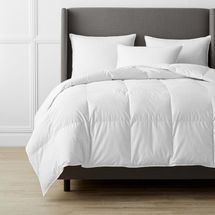
Simone Kitchens, senior editor: I don’t like a sad-looking low duvet. Aesthetically, my bed needs to be pillowy, so I top mine with a Parachute Down Duvet that’s super-fluffy or Quince’s Premium Down Comforter . When either one is paired with my mauve percale duvet cover from Parachute , it stays lofty.

Liza Corsillo, writer: Contrary to almost everyone in this group, I’m not trying to create the perfect marshmallowy bed. I basically want it to look like a more modern take on a cozy spare bed in a grandma’s summer cottage. I prefer a flat and neat surface. I use linen fitted and flat sheets from MagicLinen with a coverlet or quilt on top. I rotate between two quilts from Schoolhouse, then sometimes in the summer I’ll use a linen duvet cover, also from MagicLinen , without anything in it.
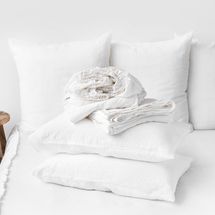
Crystal Martin, senior editor: That’s what I do too. My apartment is too hot for a duvet, but I like buying duvet covers for styling purposes. I use them like blankets. I make up for the flat look with a ton of pillows . There are six on my queen bed. I have two Euro shams from Piglet in Bed and two muslin standards from Bluebell that are just decorative, and then the two that I sleep on.
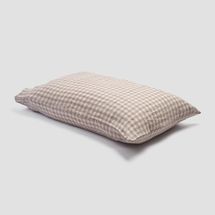
Amelia Jerden, sleep writer: My bed might be the simplest. Fully made, it consists of either bamboo sheets by Ettitude or linen sheets by Parachute or sateen sheets by California Design Den ; an old quilt; and usually an extra-fuzzy blanket from Target, which I fold into quarters and lay at the end of the bed. I just have two pillows, one for me and one for my partner.
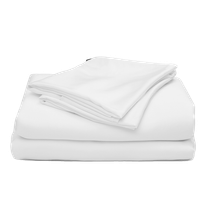
Are you partial to white bedding?
S.K.: I’ve moved away from it. It’s not easy to keep looking good, so my sheets are this beautiful olive, almost moss green. We just covered this brand in the Secret Strategist newsletter called Studio Sutram . It has beautiful pigmented sheets and duvets in solids, and you can build a tonal mono-color look with them.
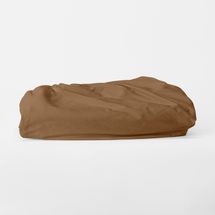
L.R.: I’ve been liking the Bria sheets by Bella Notte . They’re sateen and supersoft. I have them in a deep purple called fig.
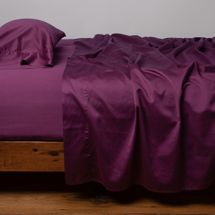
A.J.: My paisley quilt serves as a statement for the entire setup, so I keep the rest of it pretty simple. My sheets are either white or a sage green that matches the green in my quilt.
C.M.: I’m not afraid of patterns either. The Euro shams I mentioned are gingham, and the standards have an allover petite floral pattern.
Are your sheets tucked or untucked?
A.J.: I do know how to do hospital corners, but I am too lazy to do that on a regular basis. I usually just fold the top sheet over the quilt or hide it underneath.
L.C.: My sheets stay hidden too. I don’t tuck anything in. I really hate when the top sheet is tucked in and my feet feel trapped.
We have some orthopedic-pillow fans in the group. Do you display those on the bed?
S.K.: This is such a problem for me. I have two super-sculpted Tempur-Pedic pillows that are on the smaller side, but they look so bad in a regular pillowcase, so I hide them underneath king-size pillows. They sort of meet the flap of the duvet in a nice way. Nobody makes good Tempur-Pedic pillowcases.
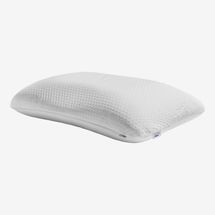
C.M.: I also have embarrassing orthopedic pillows : There’s a cutout for my head.
L.C.: I have been getting really into quilted pillow shams. I have some vintage ones from Pottery Barn in navy blue with little ties, but the Pick-Stitch Handcrafted Cotton-Linen Quilted Shams it currently sells are similar and they camouflage any mess underneath. I also take a minute to throw on a tiny pillow with an embroidered sleeping cat on it at the very end.
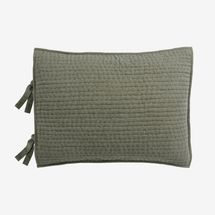
The Strategist is designed to surface the most useful, expert recommendations for things to buy across the vast e-commerce landscape. Some of our latest conquests include the best acne treatments , rolling luggage , pillows for side sleepers , natural anxiety remedies , and bath towels . We update links when possible, but note that deals can expire and all prices are subject to change.
- the strategist
- strategist round table
- new york magazine
Every product is independently selected by (obsessive) editors. Things you buy through our links may earn us a commission.
Deal of the Day
Micro sales, greatest hits, most viewed stories.
- 30 Things on Sale That Would Make Excellent Mother’s Day Gifts
- 10 Things That Delighted Us Last Week: From LEGO Bouquets to Line-a-Day Diaries
- All of the Best Mother’s Day Gift Ideas
- Everything Worth Buying During Wayfair’s Way Day Sale
- All the Best Walking Shoes We’ve Ever Written About
- Mother’s Day Gifts for Every Type of Mom
- The 17 Very Best Protein Powders
Today’s Top Clicked
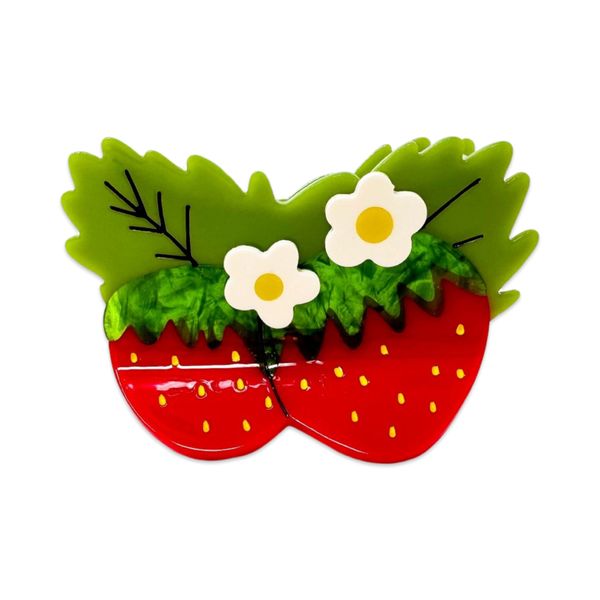
Sequoia National Park’s giants are the friendly type. Hugs are welcome.

People all over the world watched with rapt attention in 2021 as wildfire threatened to engulf the world’s largest tree . Firefighters carefully wrapped the base of the General Sherman Tree in shiny, protective blanketing as flames drew closer at Sequoia National Park .
Ultimately, the roughly 275-foot-tall icon was spared, but other giant sequoias weren’t so lucky. Redwood Mountain Grove in neighboring Kings Canyon National Park “lost an estimated 974 to 1,574 large sequoias,” according to Sequoia and Kings Canyon National Parks, which are managed jointly.
“Given the amount of giant sequoias that were lost in the last few years – almost 20% of the entire giant sequoia population was lost in a short amount of time – we're not feeling as confident as we were just a few years ago about these trees really being around for generations and generations to come,” said Sintia Kawasaki-Yee, chief of Communications and Management Support for both parks in California. “We really want to bring attention to their mortality.”
That’s not the only thing Sequoia visitors should know.
What is so special about Sequoia National Park?
Sequoia protects some of the largest trees in the world and a wide array of habitats.
“I would say the most special feature is that you enter at about, I want to say, 1,600 feet of elevation and within about a 45-minute span, you're able to reach 6,500 feet, which is a huge elevation gain in a really small amount of miles,” said Kawasaki-Yee. “You come in in the foothills area. In the spring, we have really great wildflowers. We have the river. We have great access there year-round, but if you drive just 45 minutes into Giant Forest , you get to see the change in the terrain and wildlife.”
Visitors can feel the change too, as temperatures dip and winds whip higher up, so pack accordingly.
Is the General Sherman Tree the tallest tree in the world?
No. It’s not the tallest tree in the world. That title belongs to Hyperion, a coast redwood at Redwood National Park, according to Guinness World Records .But the General Sherman Tree is the largest by volume, with a trunk volume of 52,508 cubic feet, according to the park.
Can you touch the General Sherman Tree?
No. “The Sherman Tree is fenced off, so you cannot touch it, but there are many other sequoias in that same area that you can definitely walk up to and touch,” said Kawasaki-Yee.
She recommends feeling their fibrous bark, which she noted is softer to the touch than one might expect.
“Feel free to hug a tree, connect with a tree,” she added. “That connection is really important to really build that connection for people and hopefully that commitment to protect these trees in the long term.”
From Acadia to Zion: What travelers should know about each of America's national parks
Which park is better, Redwood or Sequoia?
“They're basically siblings, and so it's like comparing your kids,” Patrick Taylor, Interpretation and Education manager for the National Park Service at Redwood , told USA TODAY in April. “You love them both for slightly different reasons.”
He explained that giant sequoias tend to have more volume to them.
“So they're bigger in the sense that they usually have a wider base, and they don't taper off as fast,” he said. “The coastal redwoods are usually a little taller and a little more slender.”
Is Sequoia National Park free?
No. Most visitors will have to pay a flat $35 vehicle entrance fee that covers access to both Sequoia and Kings Canyon.
Certain groups are eligible for free entry to all national parks, namely military service members, veterans, Gold Star families , U.S. citizens and permanent residents with permanent disabilities, and fourth graders and their families .
Can you just drive through Sequoia National Park?
Yes. “You can actually do both parks in one drive,” said Kawasaki-Yee. “A lot of people that are doing road trips will drive through both parks on the same day or the same trip.”
The park is located about an-hour-and-a-half drive from Fresno. Fresno Yosemite International Airport is the nearest commercial airport.
What is the best time of year to visit Sequoia National Park?
Kawasaki-Yee recommends visiting in the spring or fall to avoid summer crowds and winter road closures.
“Maybe right before Memorial Day weekend, so you don't get the crowds but you still get access to the areas,” she suggested.
Can I stay inside Sequoia National Park?
Yes. The park offers a variety of on-site camping and lodging , though some lodges, operated by third parties, only open seasonally.
Who are the Indigenous people of the area?
“Sequoia and Kings Canyon National Parks are the homelands of the Mono (Monache), Yokuts, Tübatulabal, Paiute, and Western Shoshone,” according to the parks’ website, which lists the following affiliated federally recognized tribes:
- Big Pine Band of Owens Valley Paiute Shoshone Indians
- Big Sandy Rancheria Band of Western Mono Indians
- Bishop Paiute Tribe
- Bridgeport Indian Colony
- Cold Springs Rancheria
- Fort Independence Indian Community of Paiute Indians
- Fort Mojave Indian Tribe
- North Fork Rancheria of Mono Indians
- Paiute-Shoshone Indians of the Lone Pine Community
- Picayune Rancheria of the Chukchansi Indians
- Santa Rosa Rancheria Tachi-Yokut Tribe
- Table Mountain Rancheria
- Tejon Indian Tribe
- Tule River Tribe
- Utu Utu Gwaitu Paiute Tribe of the Benton Paiute Reservation
Protect Your Trip »
The best swimming with pigs tours in the bahamas.
Discover how to responsibly swim with pigs in the Bahamas.
Swimming With Pigs in the Bahamas

Getty Images
Reels of people frolicking with pigs on a beach in the Caribbean have more than likely surfaced on your TikTok and Instagram feeds at one point or another. After all, millions of people partake in this quintessential Bahamas experience each year, and the attraction is so popular that it's been replicated in other destinations.
If swimming with pigs in the Bahamas is on your bucket list, read on to discover the best tour options as well as what to consider when you visit.
Which Bahamas island has swimming pigs?
Located in the Exumas, Big Major Cay – commonly known as Pig Beach – is the original Bahamas island with swimming pigs. It is accessible from several islands in the Bahamas as well as Florida. Most swimming pig tours include other tourist attractions and experiences, including snorkeling in Thunderball Grotto (a filming location for two James Bond movies) and swimming with nurse sharks at Compass Cay.
How to get to Pig Beach from the Exumas
Staniel Cay: Staniel Cay is the closest inhabited island to Big Major Cay. Guests of Staniel Cay Yacht Club can take a short boat ride to Pig Beach via a local charter. 3N's Vacation Services and Staniel Cay Adventures are both reputable companies that offer such options.
Great Exuma: The largest island in the Exumas, Great Exuma houses some of the best resorts in the Bahamas , including the family-friendly Grand Isle Resort & Residences and the adults-only Sandals Emerald Bay . To get to Pig Beach from Great Exuma, it's best to book directly with your hotel. You'll have the option to take a full-day tour (with a roughly two-hour boat ride to the attractions from Great Exuma) or fly to Staniel Cay and take a short boat ride to Big Major Cay from there.
How to get to Pig Beach from Nassau
Pig Beach is reachable from Nassau via plane and/or boat. Below are some of the top-rated swimming pig tours from the Bahamas' capital city:
3N's Vacation Services: Swimming Pigs Flight & Tour
Price: From $675 per person Duration: 3.5 to 4 hours
This full-day, all-inclusive tour transports passengers from Nassau to Staniel Cay by plane, where you'll continue your excursion via boat. The tour includes several stops and activities:
- Swimming with pigs and feeding them tour-provided food at Pig Beach
- Swimming with nurse sharks at Compass Cay
- Snorkeling at Thunderball Grotto
- Visiting the iguanas of Guana Cay
- Strolling along a stunning sandbar
- A stop near Pablo Escobar's mysterious sunken plane on Norman's Cay
Snacks, lunch, soft drinks, beer and water are covered in tour rates; snorkel gear and towels are provided. Children ages 2 and younger are free, though this tour is not recommended for young kids. While tour groups are limited to 12 guests at maximum, private tours are available for a more intimate experience. Recent reviewers say they enjoyed this tour, though some expressed mixed feelings about the captains.
Check prices & availability on:
Born Free Charters: Exuma Island Hopping and Swimming Pigs
Price: From $439 for adults; $329 for kids ages 2 to 6 Duration: 9 hours
This tour departs from Paradise Island by high-speed powerboat and stops at the following destinations:
- Allen Cay, to visit Bahamian rock iguanas
- Compass Cay, for swimming with the nurse sharks
- Great Exuma, for a Bahamian-style lunch buffet (included in tour rate)
- Norman's Cay, for snorkeling
- A sandbar for some beach time
Recent travelers highly recommend this tour, praising the guides, the lunch and the overall experience. Per the tour provider, this tour isn't recommended for children younger than 2, pregnant women, or those suffering from chronic back and/or neck pain.
Tips on Trips and Expert Picks Newsletter
Travel tips, vacation ideas and more to make your next vacation stellar.
Sign up to receive the latest updates from U.S News & World Report and our trusted partners and sponsors. By clicking submit, you are agreeing to our Terms and Conditions & Privacy Policy .
How to get to Pig Beach from Florida
There are a few reputable companies that offer Pig Beach tours from Miami and Fort Lauderdale. Below is a well-rated option:
Bahamas Air Tours: Miami to Bahamas Day Trip
Price: From $949 per person Duration: 12 hours
This full-day tour starts with private transportation from Fort Lauderdale Executive Airport. It also includes in-destination transportation to Pig Beach, Guana Cay, Thunderball Grotto, Compass Cay and the sandbars at Staniel Cay. Both alcoholic and nonalcoholic beverages are included in the price as well. Recent travelers rave about this experience, with some noting it's the best tour they've ever taken.
Note that passports are required for this day trip, and that while children are permitted on the tour, it's not ideal for young kids. This excursion is also ill-suited for pregnant women, and the tour operator requires a doctor's clearance for expectant mothers. Tours are limited to nine guests (but require a minimum of five participants); private charters are also available.
Is Pig Beach ethical?
Even though the Bahamas limits the number of tour operators allowed to visit Pig Beach per day, there's some controversy surrounding the island and whether or not it's ethical to visit.
In 2017, several pigs were found dead after an influx of tourists left snacks on the beach, causing the pigs to ingest too much sand. Also, travelers can be aggressive with the pigs, often chasing them, picking them up or even trying to ride them.
In recent years, a number of safety measures have been put in place to protect both the pigs and tourists. Per the Bahamas Ministry of Tourism, they include the following:
- A trough provides a designated feeding place for the pigs.
- Signage communicates rules to tourists, including what you can and cannot feed to the pigs. The pigs are restricted to a diet of fruits and vegetables, such as carrots, grapes, watermelon, apples and lettuce, and many guides supply these items for tourgoers. Some tour guides will provide bread as well, though processed food is not ideal for these animals.
- A local taskforce of caretakers is on the ground daily to ensure visitors and tour operators are engaging with the pigs responsibly.
While the Bahamas Ministry of Tourism maintains that the attraction is sustainable, know that there aren't any legal limitations protecting the pigs at this time.
How to be a responsible traveler at Pig Beach
All tour guides are expected to share the following protocols with travelers; whether they do or not, it is important to respect these rules for both the safety of the pigs and you:
- Remain calm at all times.
- Do not chase, pick up or ride the pigs.
- Do not engage with the pigs without supervision.
- Only use approved food from your tour operator, and do not feed the pigs alcohol.
- If you do not have feed, hold your hands up to show the pigs you do not have anything.
What to pack for your excursion
Pack a beach bag , dry bag or backpack with the following items:
- Reef-safe sunscreen
- Beach towel
- Camera and/or phone
- Waterproof phone pouch with lanyard
- Change of clothing
- Windbreaker or light jacket (in case of rain and because it gets chilly on the water)
- Cash and/or credit card (for tour guide tip and other purchases)
It's best to wear a swimsuit and a cover-up or T-shirt with sandals for the trip.
Frequently Asked Questions
There are several theories about the origin of the swimming pigs. The most logical is that when the Exumas gained popularity with the rich and famous in the 1980s and '90s, the resident pigs were too smelly to stay and were hence moved to the uninhabited island of Big Major Cay.
It is generally safe provided you're respectful of the animals. However, you should keep in mind that the pigs are known to bite if they're hungry and think you might have food you're not sharing. Because Big Major Cay is their home, they also defecate on the shoreline and in the water.
Most tour operators do not allow children under age 2 on these excursions, and based on our experience, we don't recommend bringing toddlers and young children in general — even if rates are free or discounted for them. Wait until your kids are a bit older.
Swimming with pigs on Big Major Cay – the original Pig Beach in the Bahamas – will cost you several hundred dollars – in part because Big Major Cay is a remote destination only accessible by boat. Of course, it is also pricey because of its popularity. Copycat experiences like swimming with the pigs on Rose Island are cheaper, but less authentic.
Why Trust U.S. News Travel
Amanda Norcross previously visited Pig Beach during a press trip to the Bahamas. Disheartened by tourists' mistreatment of the pigs, she aims to educate travelers on how to visit Big Major Cay and other animal-centric destinations responsibly.
You might also be interested in:
- The Best Caribbean Vacations
- The Best All-Inclusive Caribbean Resorts
- The Best International Travel Insurance
The Best Zoos in the U.S.

Tags: Travel , Tours
World's Best Places To Visit
- # 1 South Island, New Zealand
- # 4 Bora Bora
If you make a purchase from our site, we may earn a commission. This does not affect the quality or independence of our editorial content.
You May Also Like
The 13 best key west tours of 2024.
Gwen Pratesi May 3, 2024

Essentials to Pack for a Cruise
Gwen Pratesi and Amanda Norcross May 2, 2024

The 15 Best Chicago Tours for 2024
John Rodwan May 1, 2024

The 10 Best Harry Potter Tours in London
Marisa Méndez April 30, 2024

12 Cheap Fourth of July Getaways
April 29, 2024

The Best Tours of Buckingham Palace
Laura French April 29, 2024

Flight Canceled or Delayed? What to Do
Amanda Norcross April 26, 2024

The Best Beach Hats
Megan Johnson and Sharael Kolberg April 26, 2024

The Best Florence Tours
John Rodwan April 25, 2024

The 9 Best Louisiana Swamp Tours of 2024
John Rodwan April 24, 2024

You asked: Do I need a passport for my cruise?
By The Way Concierge digs into the (surprisingly) complicated rules for travel by sea.

Traveling has always come with complications. Our By The Way Concierge column will take your travel dilemmas to the experts to help you navigate the unexpected. Want to see your question answered? Submit it here .
We’re going on a very short cruise from California to Mexico this spring. Do we need passports for our kids, even if we don’t get off the ship? — Ben, Springfield, Va.
There’s a difference between what you need and what is a good idea to have.
Let’s begin with the first: On most cruise lines and for most itineraries, a voyage that starts and ends at the same U.S. port and stays in the Western Hemisphere will not require any American citizen — child or adult — to have a passport.
These are called closed-loop cruises, and they only need proof of citizenship, such as a birth certificate plus a government-issued photo ID, according to U.S. Customs and Border Protection . For people under 16, a birth certificate will suffice. Popular cruise lines including Carnival , Royal Caribbean and Norwegian detail their requirements and any exceptions online.
A sailing that leaves from one U.S. port and ends at another — or starts in the United States and ends at a foreign destination — would not be classified as a closed-loop cruise. Everyone, including kids, would need a passport in that case.
There are some caveats, warns Teresa Tennant, senior vice president of the travel planning company Cruise Specialists . Some cruise companies, including Holland America Line and Princess Cruises , say that all members of a party must have a passport if minors are traveling with only one adult.
Some other cruise lines, such as the luxury Regent Seven Seas Cruises, require a passport for all sailings.
“It’s important to always check with the cruise line, because they can set their own rules that are actually above and beyond,” Tennant said.
Customs and Border Protection also urges travelers to check with their cruise company, travel agent and destination to confirm what’s required to enter foreign countries on an itinerary.
Whether or not you are required to have a passport, cruise lines and experts say it’s smart to have one before setting sail. The task isn’t quite as onerous as it used to be, now that wait times have returned to pre-pandemic norms of six to eight weeks for routine service and two to three weeks for the expedited process.
Cruise lines say they strongly recommend that passengers opt for the passport over other forms of identification.
“A passport is the hassle-free, gold standard for traveling between countries,” Royal Caribbean says on its website. “Boarding and disembarking through customs with a passport is usually faster than other types of ID documents.”
The U.S. State Department says travelers might need their passport “in the event of an unexpected medical evacuation or if the ship docks at an alternate port.” Travelers would also need their passports if they showed up late in a foreign port and the ship left without them — which has happened to some U.S. passengers recently.
“You should bring your passport even if your cruise says you won’t need it,” the State Department says on its information page for cruise ship passengers.
Colleen McDaniel, editor in chief of the news and review site Cruise Critic , said in an email that it would be much more difficult to get home without a passport if someone had to leave the ship.
“In such a case, you might have to rely on help from a U.S. embassy or consulate to return, which can take time,” she said.
Have a travel dilemma for By The Way Concierge? Send it to us here .
More travel tips
Vacation planning: Start with a strategy to maximize days off by taking PTO around holidays. Experts recommend taking multiple short trips for peak happiness . Want to take an ambitious trip? Here are 12 destinations to try this year — without crowds.
Cheap flights: Follow our best advice for scoring low airfare , including setting flight price alerts and subscribing to deal newsletters. If you’re set on an expensive getaway, here’s a plan to save up without straining your credit limit.
Airport chaos: We’ve got advice for every scenario , from canceled flights to lost luggage . Stuck at the rental car counter? These tips can speed up the process. And following these 52 rules of flying should make the experience better for everyone.
Expert advice: Our By The Way Concierge solves readers’ dilemmas , including whether it’s okay to ditch a partner at security, or what happens if you get caught flying with weed . Submit your question here . Or you could look to the gurus: Lonely Planet and Rick Steves .
- You asked: Do I need a passport for my cruise? May 2, 2024 You asked: Do I need a passport for my cruise? May 2, 2024
- You asked: Do I have to pay an international parking ticket? March 21, 2024 You asked: Do I have to pay an international parking ticket? March 21, 2024
- You asked: Can I ditch my PreCheck-less partner at security? January 11, 2024 You asked: Can I ditch my PreCheck-less partner at security? January 11, 2024


IMAGES
VIDEO
COMMENTS
Before you do that, make sure to read our top Namibia travel tips for guidance and planning! Our Best Namibia Travel Tips. Consider Self Driving. Road tripping in Namibia. If I could give you any Namibia travel advice it would be to rent a vehicle. Namibia is a country you should self-drive to experience most of its beauty.
RESPONSIBLE TRAVEL TIPS FOR NAMIBIA - -#27 RESPECT THE LOCAL CULTURES IN NAMIBIA . Namibia is home to many tribes, including the famous San and Himba peoples, of which the San are believed to be southern Africa's original inhabitants, while the distinctive coloured ochre face paint and braided hair of the beautiful Himba tribe, which indicates ...
You can hit up the Namibian desert for sand dune climbing at sunrise. There are beaches and coastlines full of shipwrecks to explore. The darkest skies in the world are in Namibia, so the Milky Way is always shining brightly above your head at night. Oh, and there's a ghost town in the middle of the desert. Badass.
Here's everything you need to know about getting a tourist visa to travel to Namibia. Activities. 9 of the best things to do in Namibia with kids. Oct 25, 2023 • 6 min read. Festivals & Events. The best times to visit Namibia for hiking, wildlife and more. Oct 23, 2023 • 4 min read.
7. Namibia is a healthy destination. Yellow fever vaccine is only required if you'll be arriving from a country with a risk of yellow fever transmission. Check with the CDC or similar international health entities for the latest requirements. Tap water is safe to drink in Namibia's major towns, although most visitors prefer buying purified ...
Read the 9 things to know before visiting Namibia to ensure that you are ready for anything and everything in this beautiful country! Quick Navigation Links. 9 Things to Know Before Visiting Namibia. 1. It's Really Expensive to Travel in Namibia. 2. A 4-Wheel Drive Vehicle is Highly Recommended. 3. Namibia is Safe….
Namibia travel tips: 1. Book Well in Advance. Many places in Namibia are very remote and accommodation can be limited. Family rooms are very hard to find, so it's really advisable to book well in advance if you are traveling with children or if your dates are not flexible.. This is especially the case in Etosha where travel agencies block lots of rooms a year in advance and so they can get ...
The Best Ways to Get Around Namibia Getting to Namibia: Flights: There are 8 airports in Namibia, but the Hosea Kutako International Airport is the main airport to fly into and is 28 miles from the capital of Windhoek.You can check for the best flights to Namibia on Skyscanner.. Transportation: Buses: Buses come in two main forms: the minibuses that go throughout towns or long-distance buses ...
Plugs: The plugs in Namibia are type D and M. The standard voltage is 220 V, and the frequency is 50 Hz. I recommend buying a universal adapter that has surge protection and using a converter for hair dryers and hot tools. Safety: In my opinion, Namibia is one of the safest countries in Africa. It's politically stable and has a low crime rate.
Equipped with a camera and drone, we have been collecting the best travel tips for destinations from all over the world since 2014, and compiling them into useful articles. This way, planning your trip becomes a bit easier and more enjoyable. ... #5 Tipping is customary in Namibia. Giving tips is part of the culture in Namibia. In restaurants ...
Explore Namibia on this epic, 10-day self drive trip. Highlights include the Namib, an ancient desert with towering dunes, dramatic mountains and colonial architecture at the waterfront. Additionally, you will visit the Himba people, discover Etosha National Park and more. view trip ⤍. 14 days / from 6555 USD.
Along with safaris in destinations like Etosha National Park, Namibia is full of adventures like sandboarding in the desert, visiting Fish River Canyon, and hitting the beach in Swakopmund. Keep reading to dive into a Namibia travel guide that will help you plan an incredible trip. Note: This guide to Namibia travel contains affiliate links to ...
In our opinion, the best and most cost effective to travel through Namibia is via a self-drive safari and camping. Not only do you have the freedom to do what you want, you can also stay at any of the thousands of aforementioned campsites. It's a far easier option, especially during the super busy peak season.
Namibia is not a good country for traveling on public transport. You will need to rent a vehicle and drive long distances on most days. Renting a truck with a rooftop tent and fuel costs results in your daily costs being very high. Add entrance fees and accommodation and daily costs can easily add up to $200 to $300.
Travelling with children. Travelling with children is fairly easy in Namibia provided they are able to cope with many hours of travel between sights. Many lodgingsoffer discounts for children under 12, usually giving a 50 percent reduction for youngsters aged 6-12, with children under 6 staying free.
The average site costs US$30 (or US$10 per person) and has shared bathrooms, hot showers and fire pits with grills at each spot. Some camps even have shops selling food, water and other basic provisions. 7. Mix it up by staying in budget lodges and self-catering apartments. Budget lodges are plentiful in Namibia.
Discover the wonders of the land of endless horizons with this travel guide to Namibia. From vital information needed to plan your trip, accommodation options, details on destinations across the country and inspiring travel ideas. Namibia is a one-of-a-kind tourism experience. From breathtaking landscapes and diverse wildlife to rich culture ...
Sun 21st Apr, 2024 Namibia , Mondesa. Embark on an immersive tour of the Mondesa township and discover the unique culture, warmth, and friendliness of the locals. Travel around by bike and learn about the fascinating history of the township and its people, then cook traditional dishes. FEATURED.
TRAVEL GUIDE TO NAMIBIA: INSPIRATION, HIGHLIGHTS & TRAVEL TIPS. There are many reasons why Namibia should be on your bucket list: Enjoying incredible views at the world's 3rd largest canyon, the Fish River Canyon. Visiting Kolfmanskop, a ghost town in the desert. Spotting wildlife in Etosha National Park.
Safari Enquiry. Namibia is one of the easiest and safest African countries to travel in. Still, due to the huge distances between destinations and remote locations, a successful trip usually requires some advance planning and research. In terms of communication, many hotels don't offer WiFi, and cell phone coverage can be sparse in remote areas.
Namibia Travel Planning Guide. When to Go Namibia has 300 days of sunshine a year and each season has its unique qualities, so there really is no bad time to visit! Summers (Jan-March) are hot and fairly damp with average maximum temperatures around 25-35°C (77-95°F) and average minima
Bonus planning tips: Consider buying 100 minutes of call time to Namibia on Skype to use for pre-trip planning. It's cheap, $7 US, and probably the fastest way to make reservations because most campsites' and lodges' online booking sites suck. Look beyond the camps all the bloggers and guidebooks write about like Madisa, Hoada, and Palmwag.
Namibia is one of the most beautiful travel destinations we ever visited. It's perfect for a self-drive safari at of the best wildlife parks in Africa, but you will also encounter the most special natural phenomenon. From the largest seal colony in Africa and the endless sand dunes in the Sossusvlei to one of the largest canyons in the world.Start your travel preparations for this bucket ...
Expedia's Fish shared five tips for booking summer 2024 vacations: Bundle your trip. Booking airfare and a hotel at the same time can earn you deep discounts.
Keep friends and family informed of your travel plans. If separating from a group, share your GPS location with a friend. If taking a taxi alone, take a photo of the taxi's number and/or plate ...
The Strategist Guide to Making a Bed By Liza Corsillo , Amelia Jerden , Simone Kitchens , Crystal Martin , and Lauren Ro 19 items in this article 2 items on sale!
Sequoia National Park is famously home to the largest tree in the world, but the General Sherman Tree isn't the park's only marvel.
Travel tips you can trust. Travel: By The Way Destinations News Tips Newsletter Instagram. ... How we travel now: More people are taking booze-free trips — and airlines and hotels are taking note.
Snacks, lunch, soft drinks, beer and water are covered in tour rates; snorkel gear and towels are provided. Children ages 2 and younger are free, though this tour is not recommended for young kids.
More travel tips Vacation planning: Start with a strategy to maximize days off by taking PTO around holidays. Experts recommend taking multiple short trips for peak happiness .